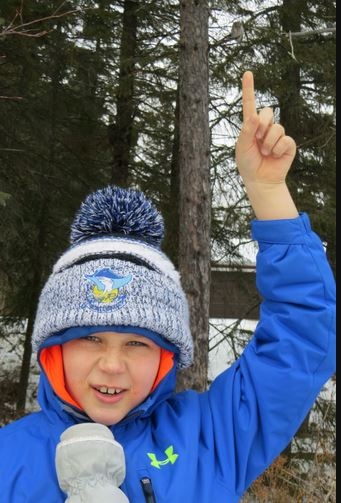For some time it has been a goal of mine to see all 19 regular species of Owls that reside in the U.S. Getting the Boreal Owl this past January was a dream come true in itself and put me within one Owl of reaching my goal, with the Ferruginous Pygmy-Owl being the holdout. FEPO can be notched relatively easily if you’re willing to pay a hefty fee and travel to the King Ranch in south Texas. And I was. Our family had planned to take a very large cross-country road trip this summer, and my plan was to hit up King Ranch on the journey. Plans changed though. It’s funny how owning two houses for nearly a year with no end in sight will do that.
Eventually sweet relief came in the housing situation in March, but it was too late to resurrect any mega road trip plans. I did start talking to my buddy Tommy DeBardeleben, though, about trying to recreate his AZ FEPO magic from 2016. FEPOs are resident in small numbers at Organ Pipe National Monument along the U.S./Mexican border. They are very tough to come by there, but Tommy and others have proved it is indeed possible. Success would be even sweeter in AZ considering I’d be with Tommy who’s helped me get so many other Owl lifers. After discussing the decision with “Screw Texas” Tommy and cajoling my buddy Steve Gardner into making the trip with me, plans were set for a fast weekend trip in mid-April.
April unleashed some of the worst winter weather we’d seen with blizzard after blizzard pummeling us. The MN forecast for our AZ weekend was grim. Steve and I planned to leave Friday after work, and all day long we wondered if we’d make it out of the state. Getting to the airport was sketchy. The temp was hovering right at freezing, causing the road to quickly become ice-covered from the snow/rain which slowed us down. The main thrust of the storm would start that night after we were scheduled to take off. And it was forecast to be a doozy–lots of snow, lots of wind, lots of closures. We finally made it to the airport and as we waited for the flight, Steve and I distracted ourselves from the possibility of a canceled flight by keeping up with the latest bird happenings on FB. One really caught our eye–a Fan-tailed Warbler was just reported in the Chiricahuas in SE AZ. Steve and I had never even heard of this Mexican Warbler before the posting. It was interesting, but we were focused on the Owl prize. Besides, a Warbler could quickly disappear…
Steve and I were relieved to actually get on the plane (the airport was predicted to be shut down sometime in the night and all the next day). Getting the plane off the ground was another story. We sat on the tarmac for a long time.
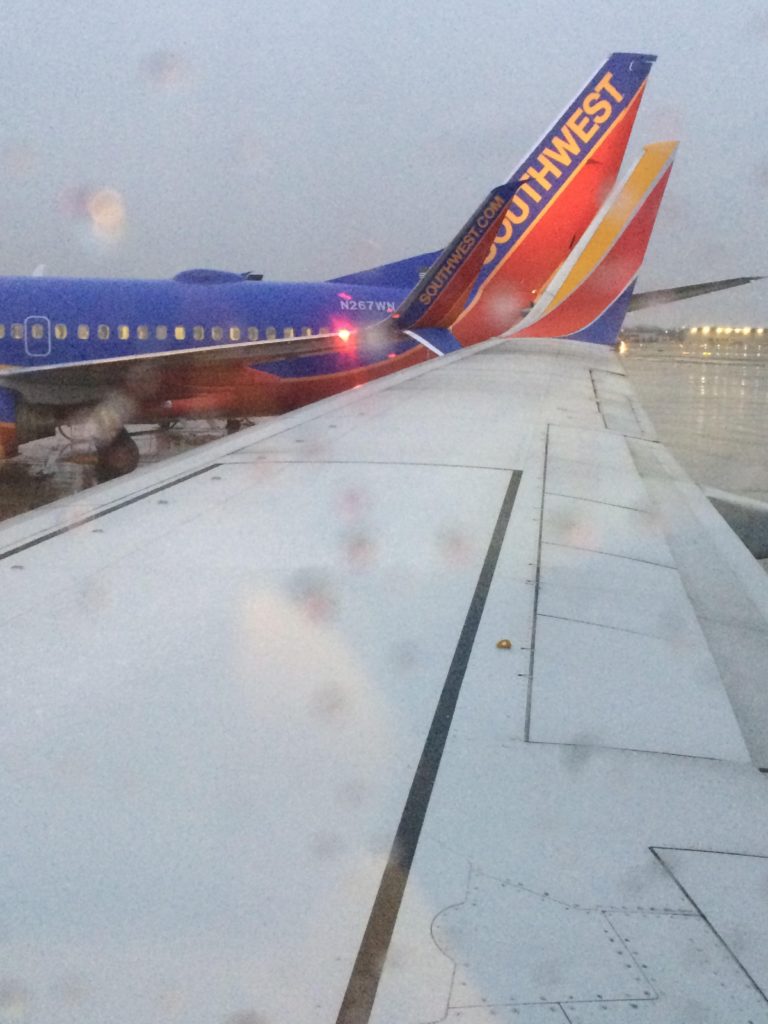
Shortly after we de-iced, we got word that we couldn’t take off until the rain turned to snow, which was frustrating since the rain had been snow when we got on the plane. The possibility of this trip getting nixed was growing. There would be no flight out on Saturday. Finally, though, the Captain gave the good word and we were in the sky only one hour behind schedule.
The Parents extended their snowbirding long enough (smartly) to not only avoid the lingering MN winter but to also be there to pick us up from the airport, be home base for the excursion, and lend us a vehicle. Thanks Mom and Dad! Late that night we rendezvoused with Tommy at their house. There was time for a 3-hour “nap” before our morning alarms would wake us for our 2-hour drive south.
Exhausted as we were, we made it to Organ Pipe. It was FEPO time. 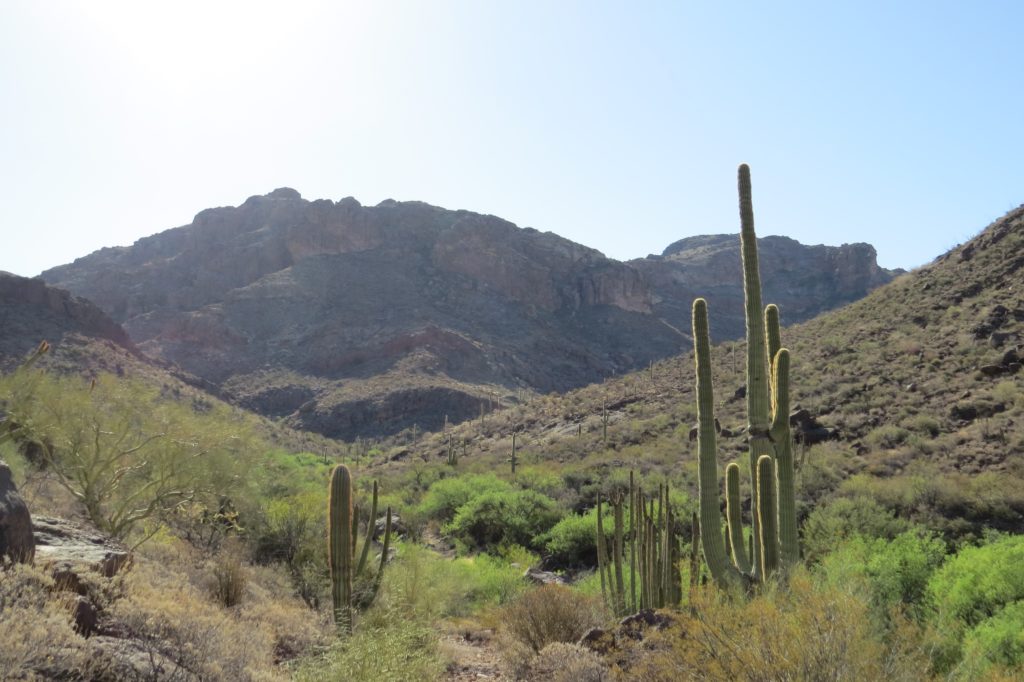 Owls aside, I think Steve and I were just enjoying not being in a blizzard. Our sympathies for our families back home were quickly eclipsed by the beautiful weather we were enjoying. We picked a great weekend to be in southern Arizona.
Owls aside, I think Steve and I were just enjoying not being in a blizzard. Our sympathies for our families back home were quickly eclipsed by the beautiful weather we were enjoying. We picked a great weekend to be in southern Arizona.
Expectations for FEPO or any new lifers were low as we began the hike up Alamo Canyon. I mistakenly thought I might get one new non-FEPO lifer in Organ Pipe. Shortly into the hike Tommy announced the presence of a Pacific-slope Flycatcher. Thankfully he did not announce the presence of a smuggler, though anyone smuggling in a load of Mexican FEPOs would have been met with open arms.
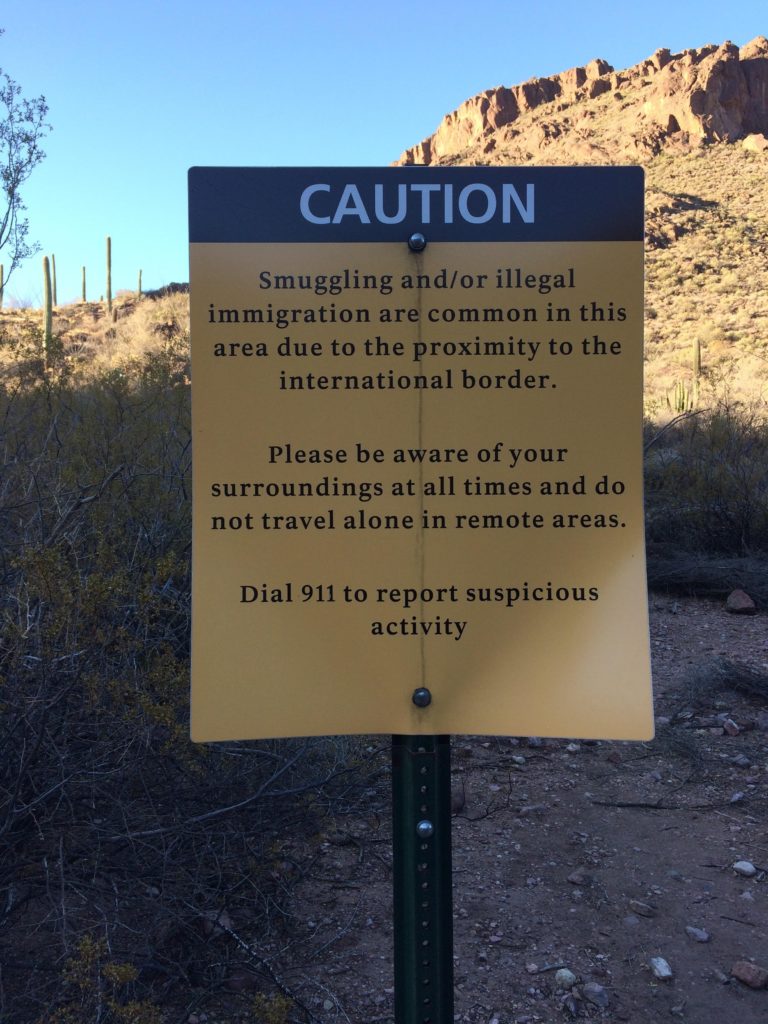
As we continued our FEPOless, smugglerless hike up Alamo Canyon, we notched a heard only MacGillivray’s Warbler lifer. I totally forgot about the fact that we’d be in Arizona during migration. What else might we find? Well, a Gray Vireo was certainly not on my radar but was now on my life list. It was great to see one, but I was kinda saving that one for Janet Witzeman to show me–eventually I’ll blog about that backstory.
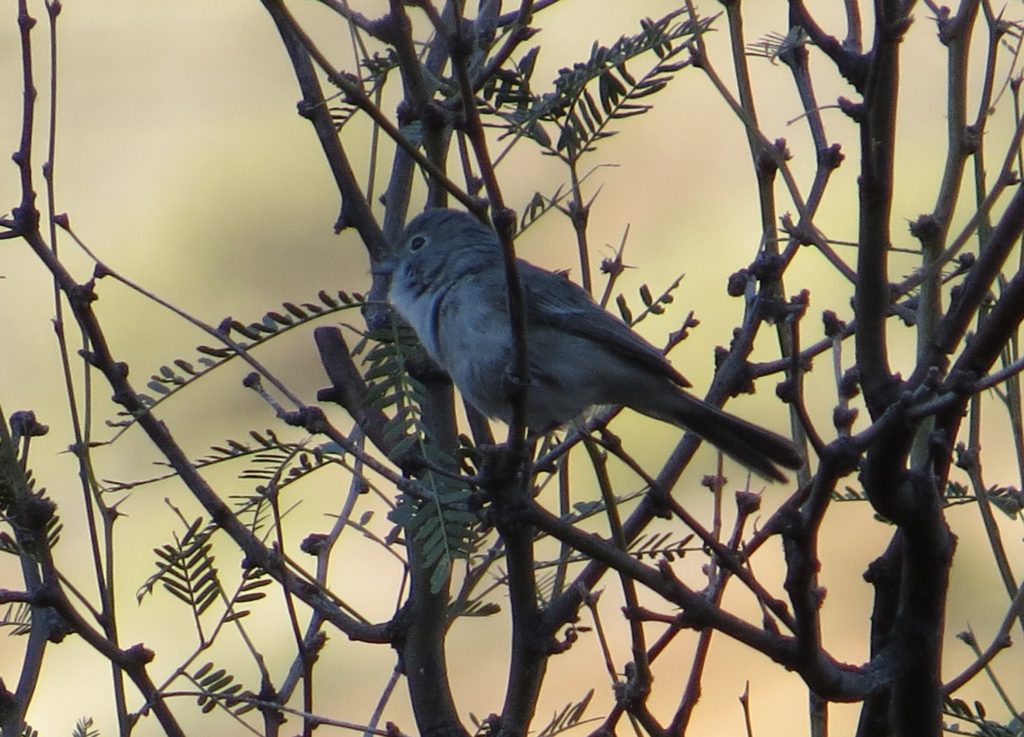 Not long after the Gray Vireo fun it was time to head back down canyon sans FEPO. A petty consolation came in the form of another Vireo lifer we missed on the way up, one of the Cassin’s variety.
Not long after the Gray Vireo fun it was time to head back down canyon sans FEPO. A petty consolation came in the form of another Vireo lifer we missed on the way up, one of the Cassin’s variety.
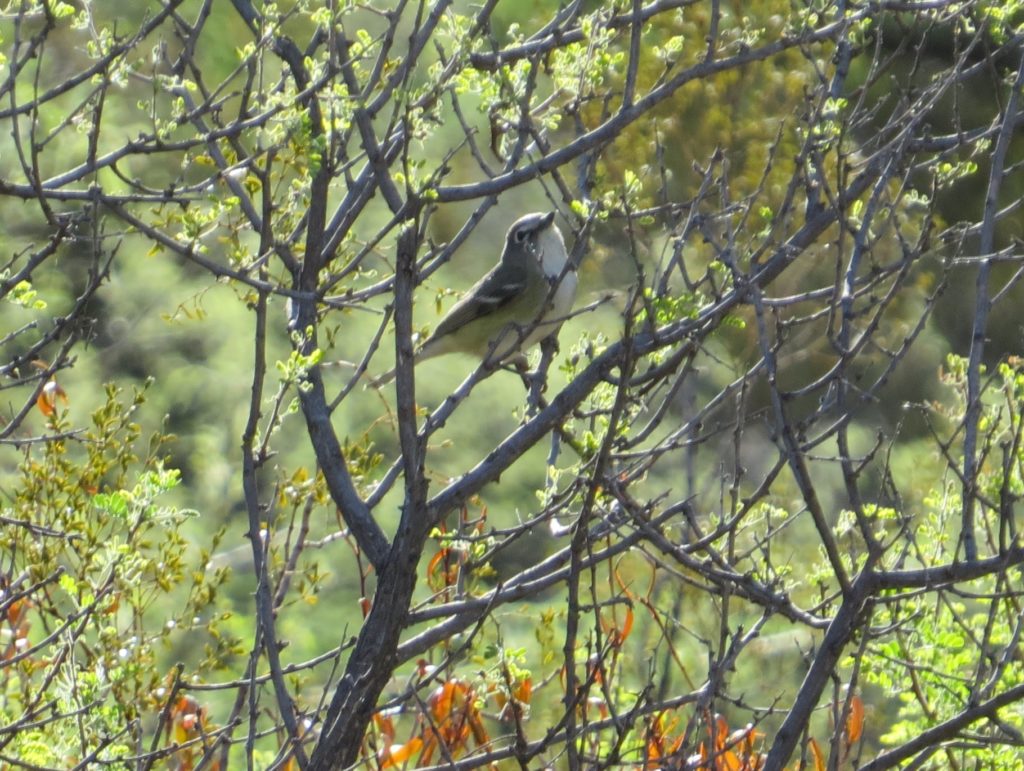
Back at the trailhead for Alamo Canyon, we paused to figure out what was next. FEPO searching in the heat of the day is pretty useless, and the Organ Pipe area really held nothing for us (especially after the bonus lifers). We’d have to travel a significant distance if we wanted to get in some more good birding. We landed on going to Madera Canyon to Owl at night. This was not a deviation from the original FEPO plans; one of the carrots to make the trip appealing to Steve was to do some other Owling as well. He could potentially rack up several Owl lifers in one night. FEPO searching would resume Sunday night and Monday morning since we would spend Saturday night somewhere near Madera.
By the time we left Organ Pipe, the morning was still quite young, so we had plenty of time to do some daylight birding before the night Owling. With mindset properly switched, I was ready for some great SE AZ action during the FEPO break. A couple notables on the drive, such as Prairie Falcons and a Crested Caracara, only amped up the excitement. Our first stop was the famed Santa Gertrudis Lane. Several high-profile birds had been there of late, such as Sinaloa Wren and some Rufous-backed Robins. As we walked to the Wren spot marked by a weird plastic tricycle from last century, we picked up another couple lifers, flyover Gray Hawks and a confiding pair of Dusky-capped Flycatchers. I was struck by its petite size compared to other Myiarchus species and surprised at how much I enjoyed this lifer.
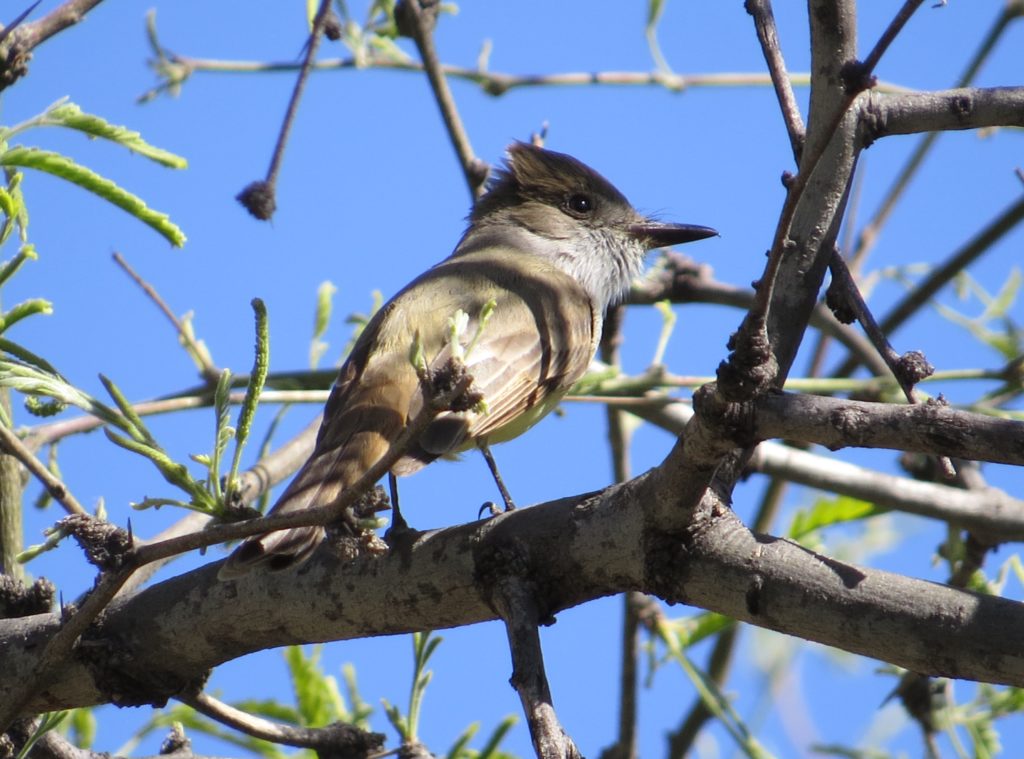
We missed the Wren despite a solid effort, and we nearly missed the Robins too. As we were hiking out, we met a group of birders and traded intel. We had bad news for them; they had good news for us. They had seen three Robins where we had walked by! The nice guy even guided us right to them. I don’t think we ever would have found these Thrush statues without his help. This was a good moment, vindication for a failed attempt in January.
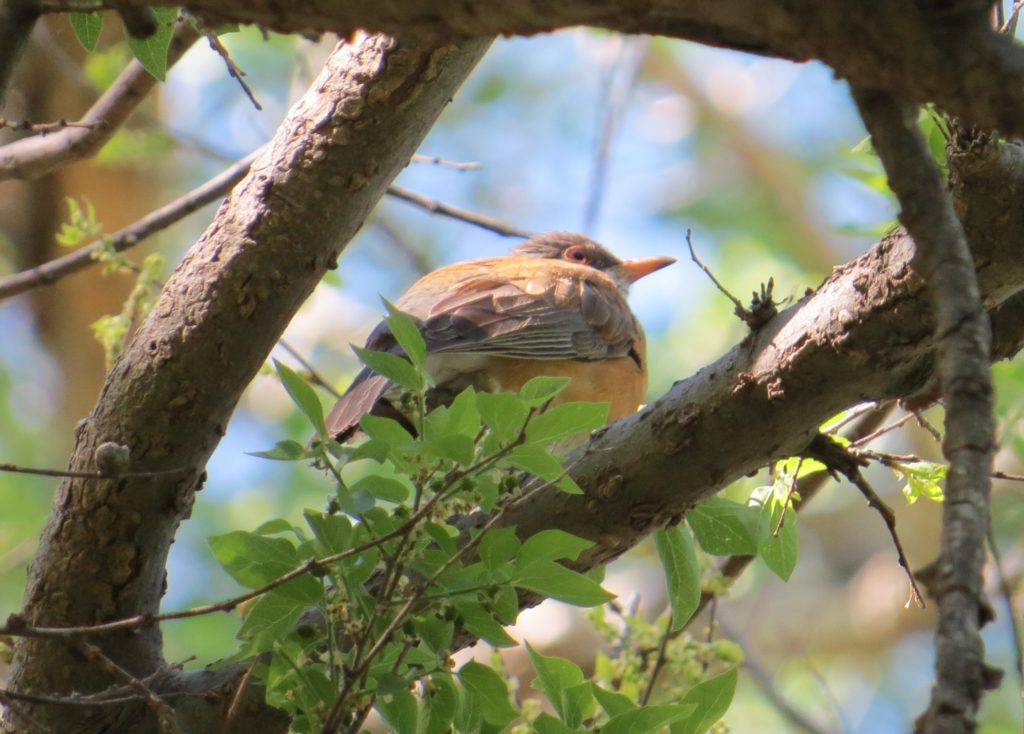
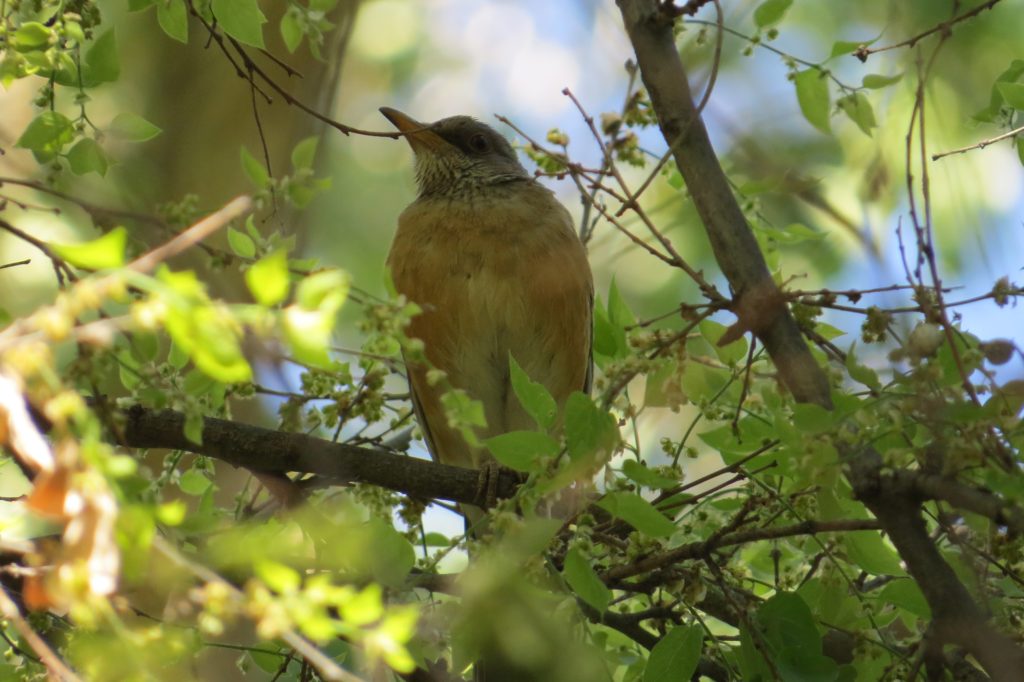
After Santa Gertrudis it was on to the De Anza Trail at Tubac to look for some Rose-throated Becards. We were all going in blind. We didn’t really know where to look in the towering Cottonwoods. Like the Wren, it was a bust. We did walk away with more Gray Hawk sightings, however brief due to the limited sky windows in the canopy. A juvenile did provide one quick photo op.
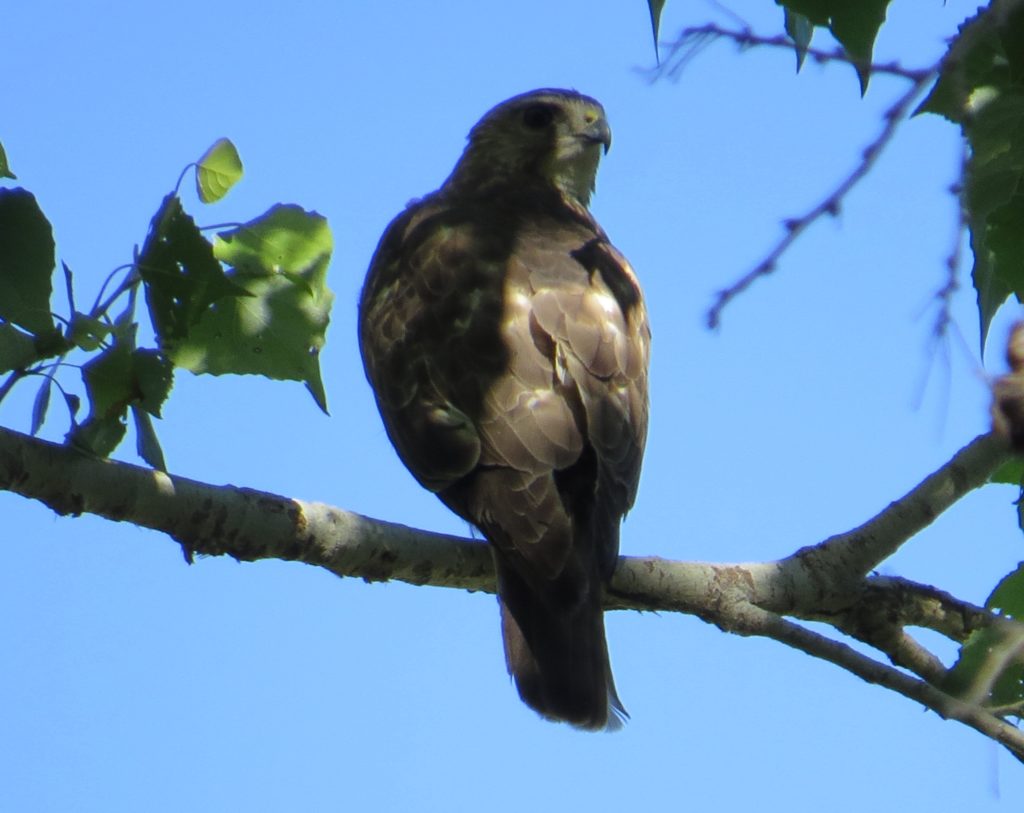 By this point in the afternoon, it was time we made our way to Madera Canyon. Not wanting to waste any burning daylight, we squeezed out every minute stopping briefly at Florida Canyon for Rufous-capped Warbler for Steve and Black-capped Gnatcatcher for both of us. Nada on those, but the effort was minimal. At least a Black-throated Gray Warbler was an nice lifer bonus for Steve. Next up was a stop at Proctor Road to try one more time for the Gnatcatcher. We did find a Gnatcatcher that was more Black-capped-like that Black-tailed, but the waning daylight and the bird’s fidgety behavior did not allow us to clinch the key field marks for an ID beyond a reasonable doubt. The regularity of this species makes it highly likely that it will eventually land on my list, just not this day.
By this point in the afternoon, it was time we made our way to Madera Canyon. Not wanting to waste any burning daylight, we squeezed out every minute stopping briefly at Florida Canyon for Rufous-capped Warbler for Steve and Black-capped Gnatcatcher for both of us. Nada on those, but the effort was minimal. At least a Black-throated Gray Warbler was an nice lifer bonus for Steve. Next up was a stop at Proctor Road to try one more time for the Gnatcatcher. We did find a Gnatcatcher that was more Black-capped-like that Black-tailed, but the waning daylight and the bird’s fidgety behavior did not allow us to clinch the key field marks for an ID beyond a reasonable doubt. The regularity of this species makes it highly likely that it will eventually land on my list, just not this day.
With darkness settling in, it was time for the night show in Madera Canyon proper. Almost immediately we heard the barking of Elf Owls. It was a lifer for Steve and a sought-after Owl do-over for me. My lifer sighting a few years ago was brief and poor. I had wanted a better photo (that showed eyeballs) of this Owl for some time. Finally.
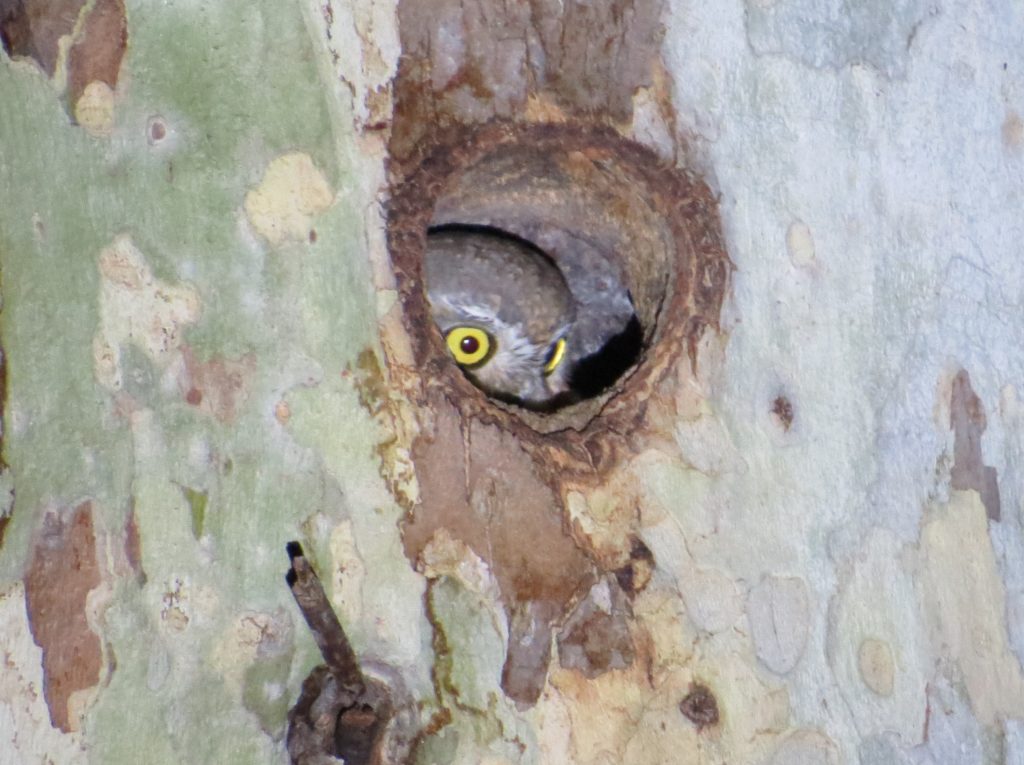
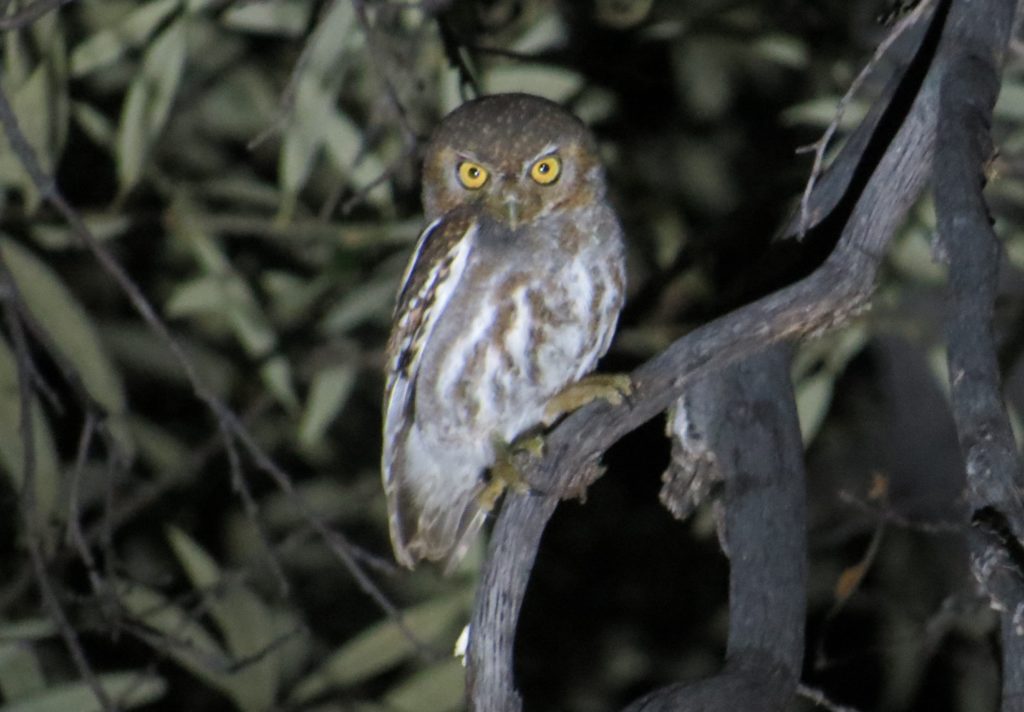
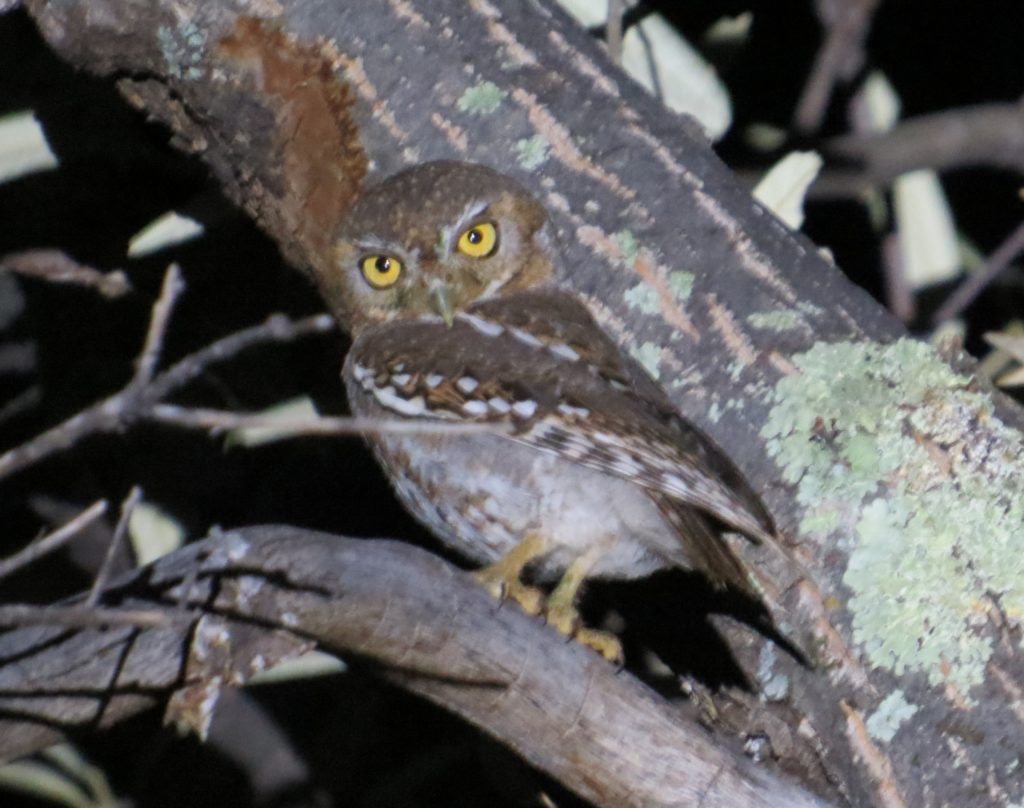 After enjoying the Elf show for some time, we Owled on for Steve. Lofty plans of looking for Whiskered Screech, Flam, and Spotted Owls collided with the reality of our extreme fatigue. We mustered enough energy to look for the easiest of those, the Whiskered Screech. Only one uncooperative bird was enough for us to be successful, but the brevity of the observation left a lot to be desired. But at this point, all we really desired was sleep. We drove on to Sierra Vista to spend the night so we could look for some reported Montezuma Quail at Ash Canyon B&B early the next morning. Then it would be back to Organ Pipe to resume FEPO searching, or so we thought…
After enjoying the Elf show for some time, we Owled on for Steve. Lofty plans of looking for Whiskered Screech, Flam, and Spotted Owls collided with the reality of our extreme fatigue. We mustered enough energy to look for the easiest of those, the Whiskered Screech. Only one uncooperative bird was enough for us to be successful, but the brevity of the observation left a lot to be desired. But at this point, all we really desired was sleep. We drove on to Sierra Vista to spend the night so we could look for some reported Montezuma Quail at Ash Canyon B&B early the next morning. Then it would be back to Organ Pipe to resume FEPO searching, or so we thought…

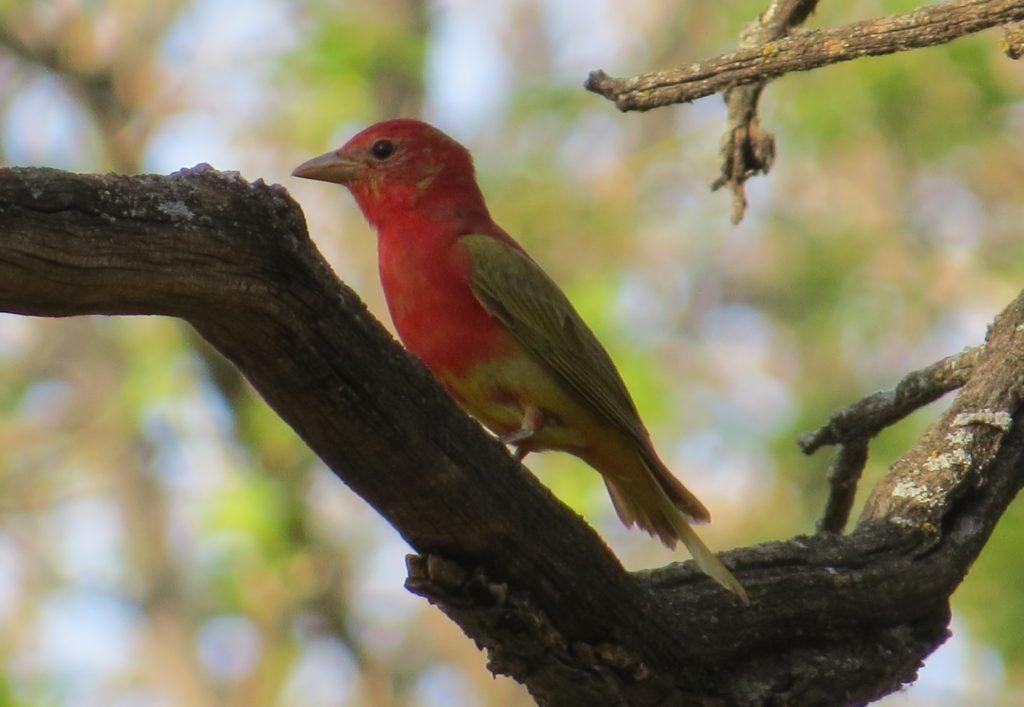
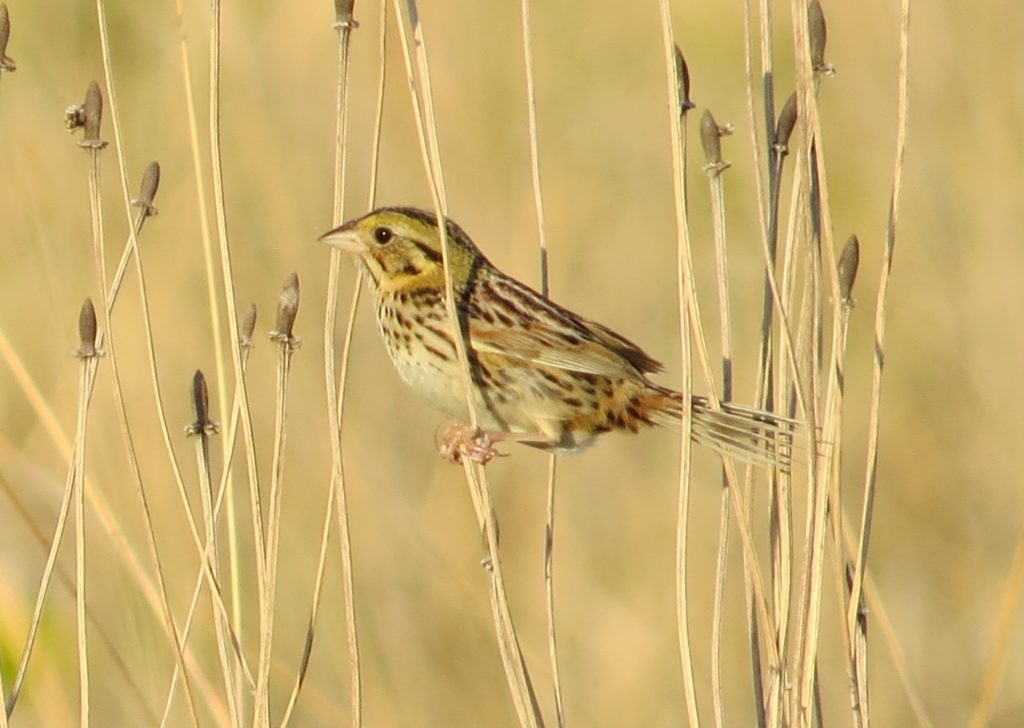 I have wanted this Sparrow for a long time. The last time one was in the county was in 2013, my first summer of birding. I did try for that one, but I was so green that I didn’t really know how to try. Plus I later found out that I was in the wrong spot by like a quarter mile. Needless to say, with this year’s find I immediately raced down to that corner of the county, making me slightly late for meeting up with a friend that morning. Getting the bird was a cinch as it could be heard from the parking lot. I spent a little time with it and then raced back to my meeting. When that meeting ended at noon, I promptly went to the liquor store to make good on a promise. I made my purchase but was disappointed to find out that Andy and Dedrick were no longer in the county to collect payment and had vanished like the DeLorean, leaving fiery trails of good birds for others to marvel at. Two of those birds were some Sanderlings and Ruddy Turnstones that same afternoon on a beach at Lake Minnewaska in neighboring Pope County. The find actually pushed me out the door that very same day to start checking similar beaches in this county. I checked several but did not go to the beach at Green Lake in Spicer. Though I thought of it, I instead went to lakes to the south. It’s a good thing that county-listing expert, Herb Dingmann, had the same hunch after ticking Andy and Dedrick’s Pope finds. He did stop at Green Lake and found the same pair of species! Twenty minutes after his call, Steve and I were on site, enjoying our latest county bird. This was #261 for me.
I have wanted this Sparrow for a long time. The last time one was in the county was in 2013, my first summer of birding. I did try for that one, but I was so green that I didn’t really know how to try. Plus I later found out that I was in the wrong spot by like a quarter mile. Needless to say, with this year’s find I immediately raced down to that corner of the county, making me slightly late for meeting up with a friend that morning. Getting the bird was a cinch as it could be heard from the parking lot. I spent a little time with it and then raced back to my meeting. When that meeting ended at noon, I promptly went to the liquor store to make good on a promise. I made my purchase but was disappointed to find out that Andy and Dedrick were no longer in the county to collect payment and had vanished like the DeLorean, leaving fiery trails of good birds for others to marvel at. Two of those birds were some Sanderlings and Ruddy Turnstones that same afternoon on a beach at Lake Minnewaska in neighboring Pope County. The find actually pushed me out the door that very same day to start checking similar beaches in this county. I checked several but did not go to the beach at Green Lake in Spicer. Though I thought of it, I instead went to lakes to the south. It’s a good thing that county-listing expert, Herb Dingmann, had the same hunch after ticking Andy and Dedrick’s Pope finds. He did stop at Green Lake and found the same pair of species! Twenty minutes after his call, Steve and I were on site, enjoying our latest county bird. This was #261 for me.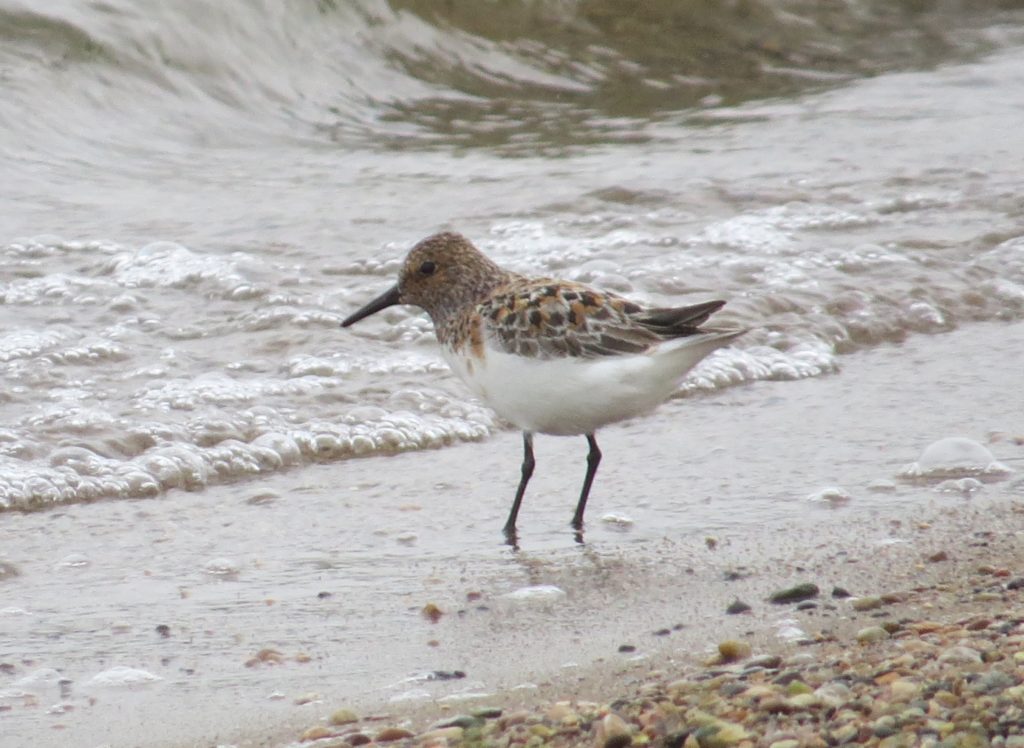
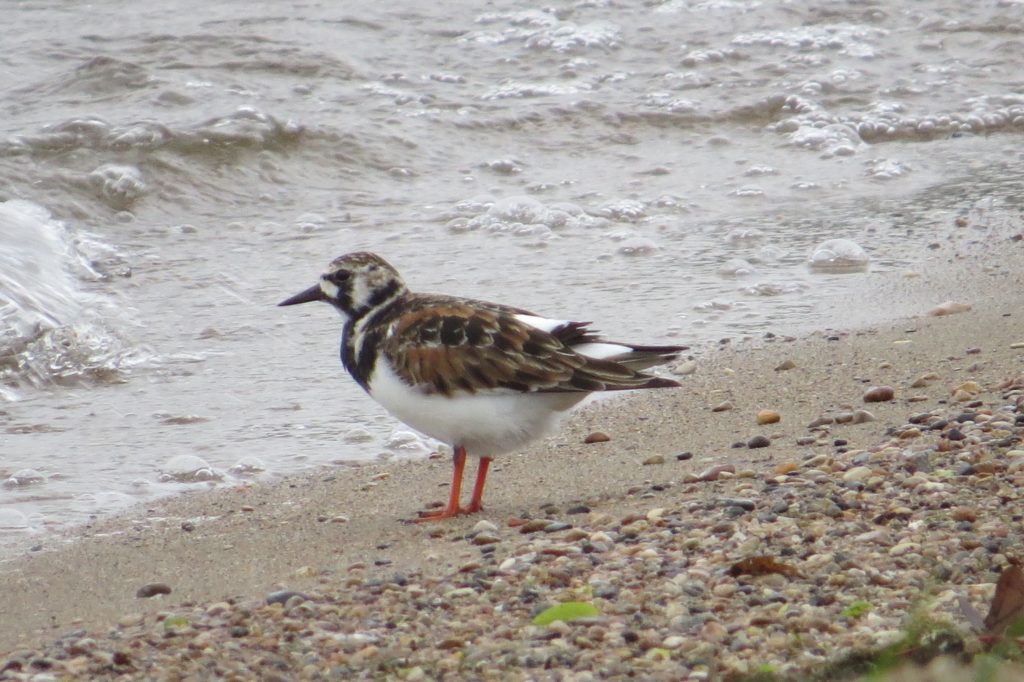
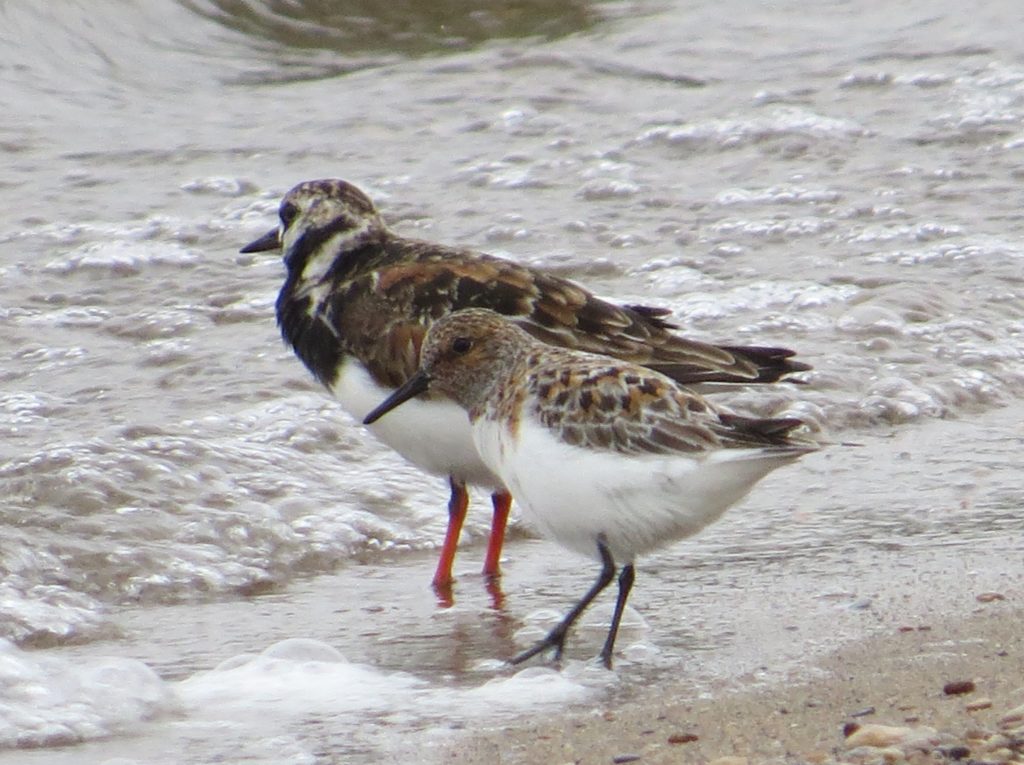
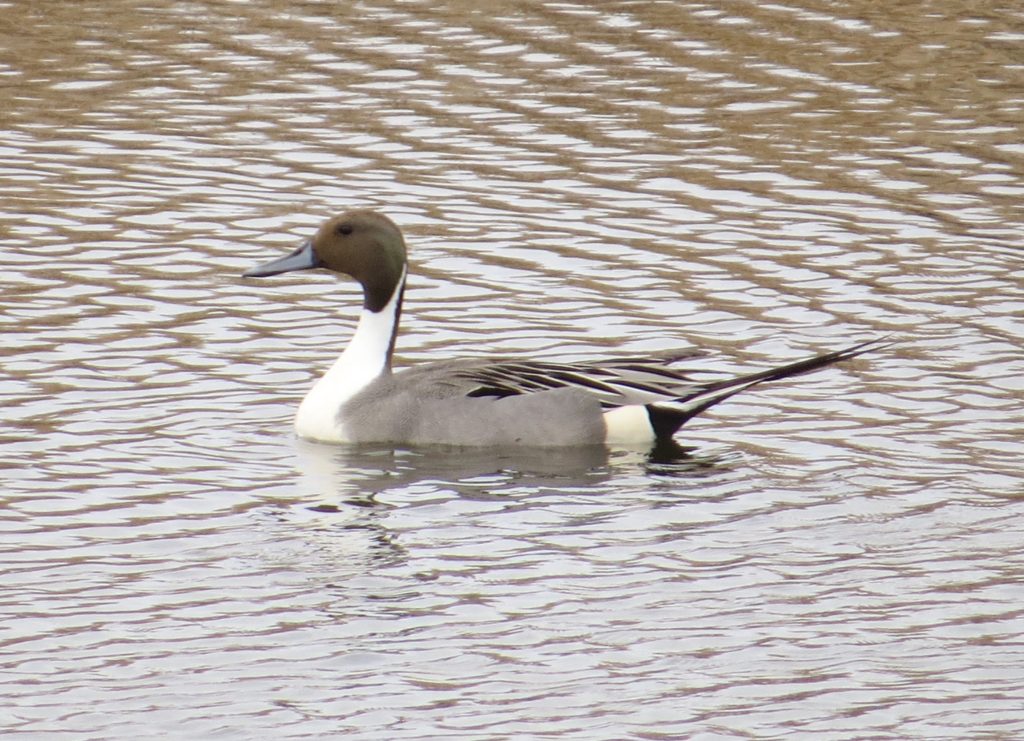 Fun as the Pintails were, nothing could make the Meeker slope more slippery like the 1-2-3 punch of Willet, Snowy Egret, and Caspian Tern. The latter two were seen on the same day as I was hurriedly leaving work to chase the Curlew Sandpiper.
Fun as the Pintails were, nothing could make the Meeker slope more slippery like the 1-2-3 punch of Willet, Snowy Egret, and Caspian Tern. The latter two were seen on the same day as I was hurriedly leaving work to chase the Curlew Sandpiper.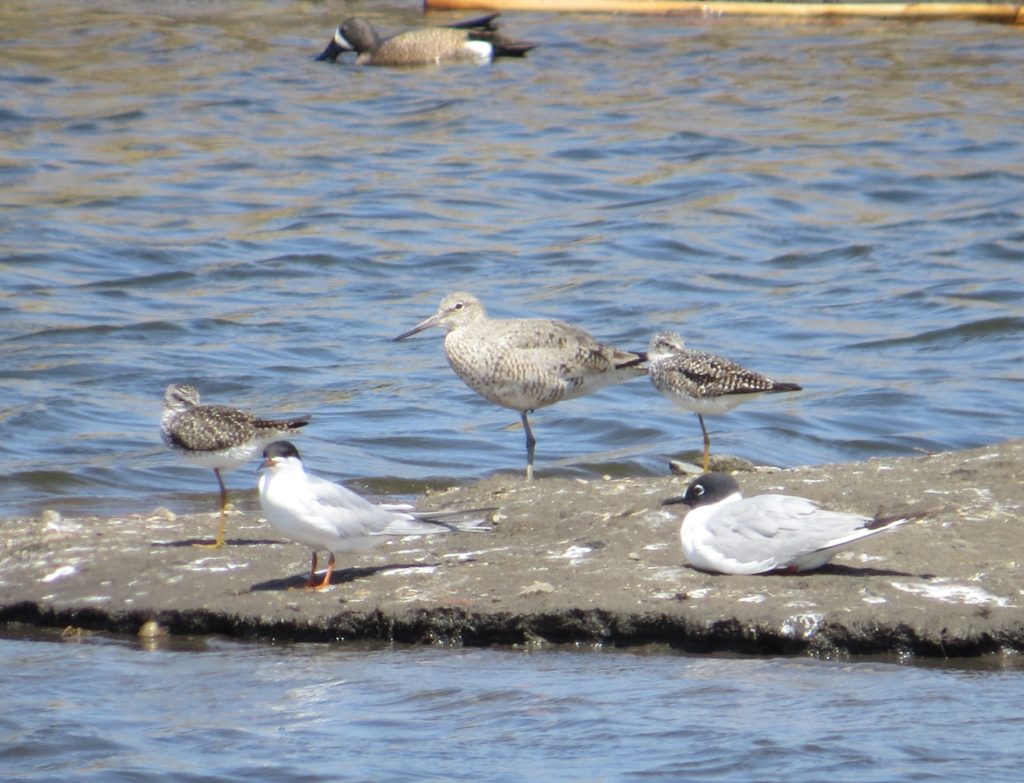 After work one day, coworker and birding buddy Brad Nelson had seen some smaller Egrets fly over and land at the ponds but wasn’t able to investigate. He asked if I could check it out. Though the Curlew Sandpiper was the priority, I told him I could give it a quick once-over. It’s a good thing, too, because Brad’s suspicion on the Egrets was right. This pair of Snowy Egrets became our first eBird flagged rarity for work, and it allowed Brad to tie the record for being #1 in Meeker.
After work one day, coworker and birding buddy Brad Nelson had seen some smaller Egrets fly over and land at the ponds but wasn’t able to investigate. He asked if I could check it out. Though the Curlew Sandpiper was the priority, I told him I could give it a quick once-over. It’s a good thing, too, because Brad’s suspicion on the Egrets was right. This pair of Snowy Egrets became our first eBird flagged rarity for work, and it allowed Brad to tie the record for being #1 in Meeker.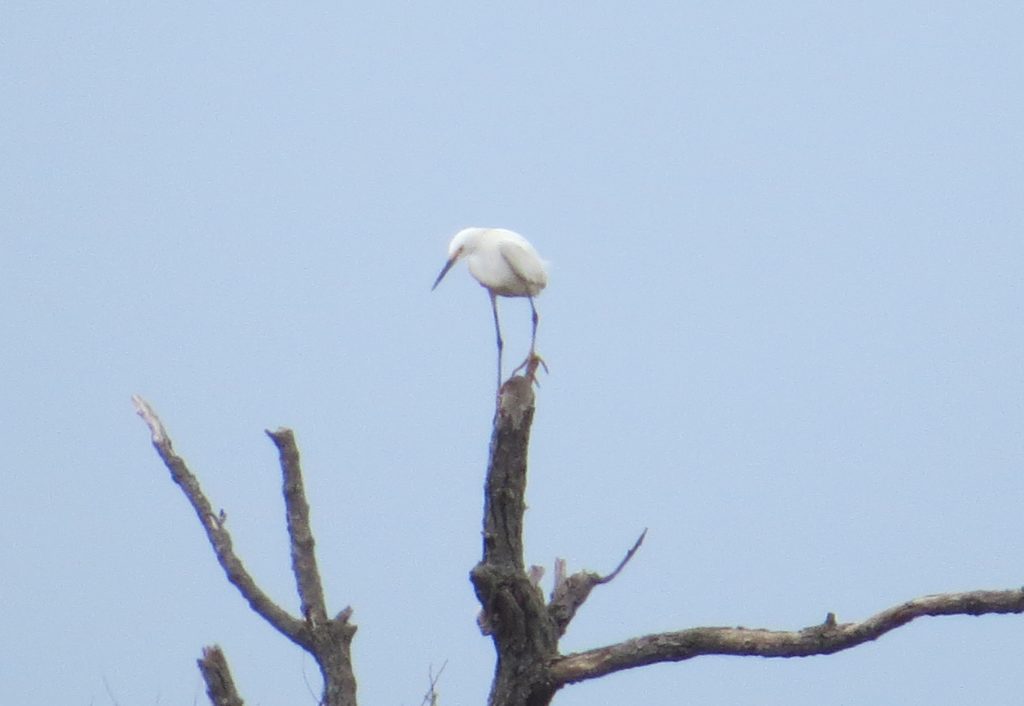 As I scanned the ponds in my haste to get to the Curlew, I nearly missed this Caspian Tern trying to blend in with the Forster’s. Caspian is the better of the two Terns here, and it was the bird that officially crowned Brad Nelson the King of Meeker County. Congrats, Brad!
As I scanned the ponds in my haste to get to the Curlew, I nearly missed this Caspian Tern trying to blend in with the Forster’s. Caspian is the better of the two Terns here, and it was the bird that officially crowned Brad Nelson the King of Meeker County. Congrats, Brad!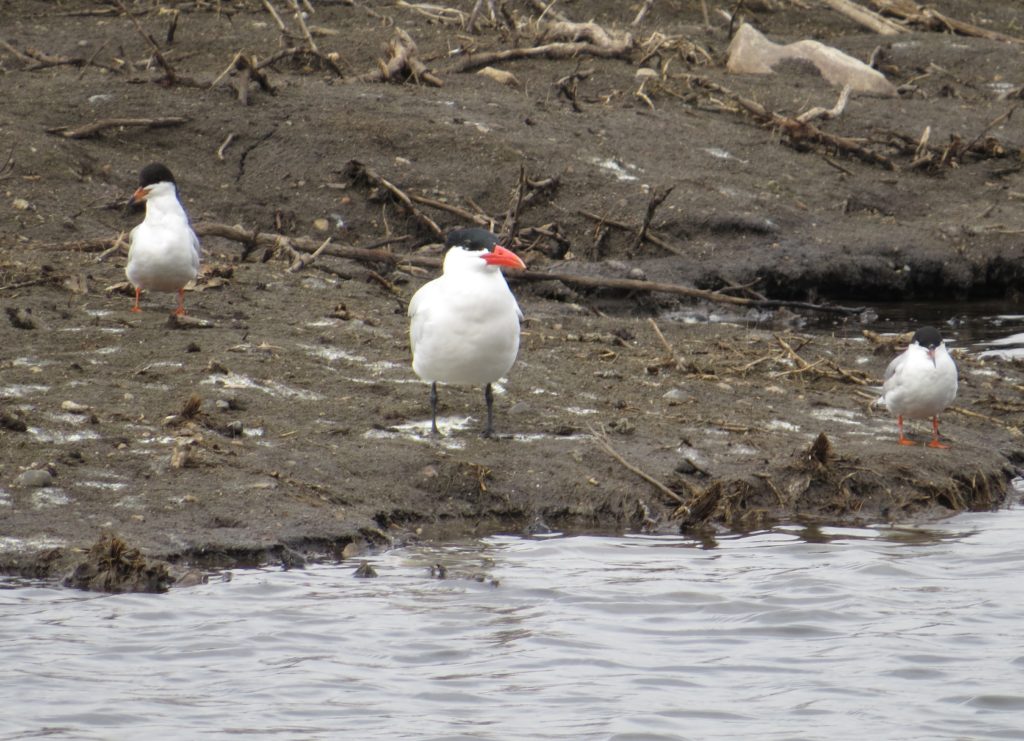 Perhaps the county listing starts innocently with “just a quick trip” 6 miles from the county line to pick up Dan Orr’s Stearns County Mockingbirds.
Perhaps the county listing starts innocently with “just a quick trip” 6 miles from the county line to pick up Dan Orr’s Stearns County Mockingbirds.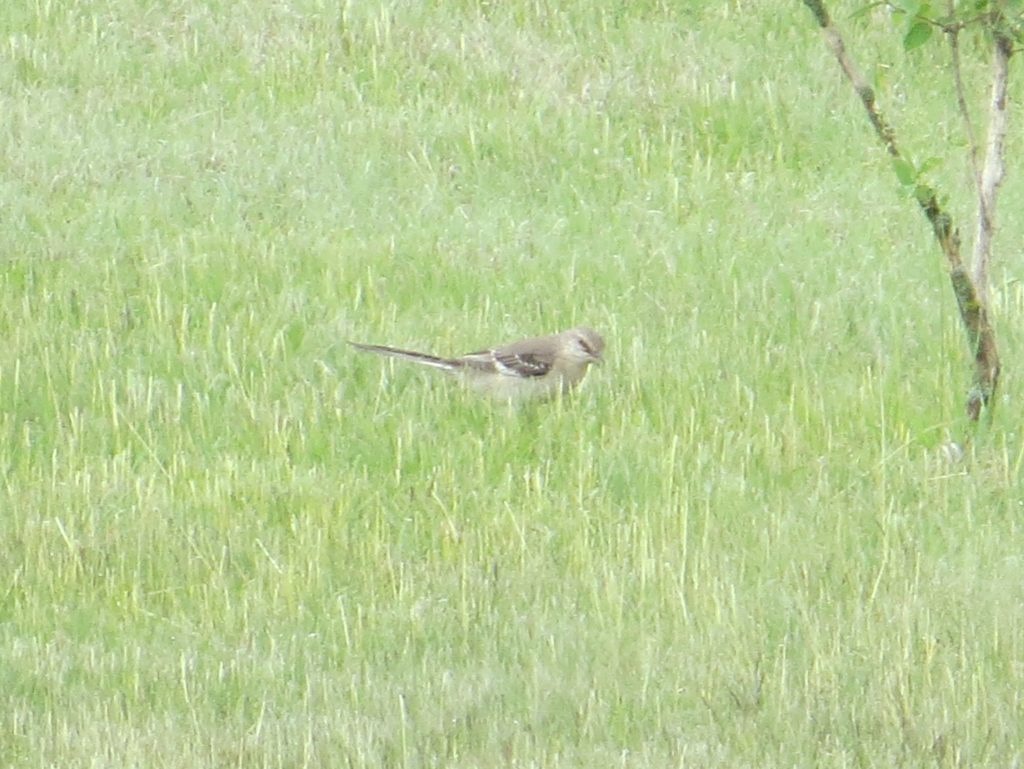 Or maybe it happens when you are driving down the Kandi-Swift County line road and find yourself staring at the Swift side of the line. It’s a good thing I did because it netted me my first real good looks and photos of a Sora. This felt like a lifer, honestly.
Or maybe it happens when you are driving down the Kandi-Swift County line road and find yourself staring at the Swift side of the line. It’s a good thing I did because it netted me my first real good looks and photos of a Sora. This felt like a lifer, honestly.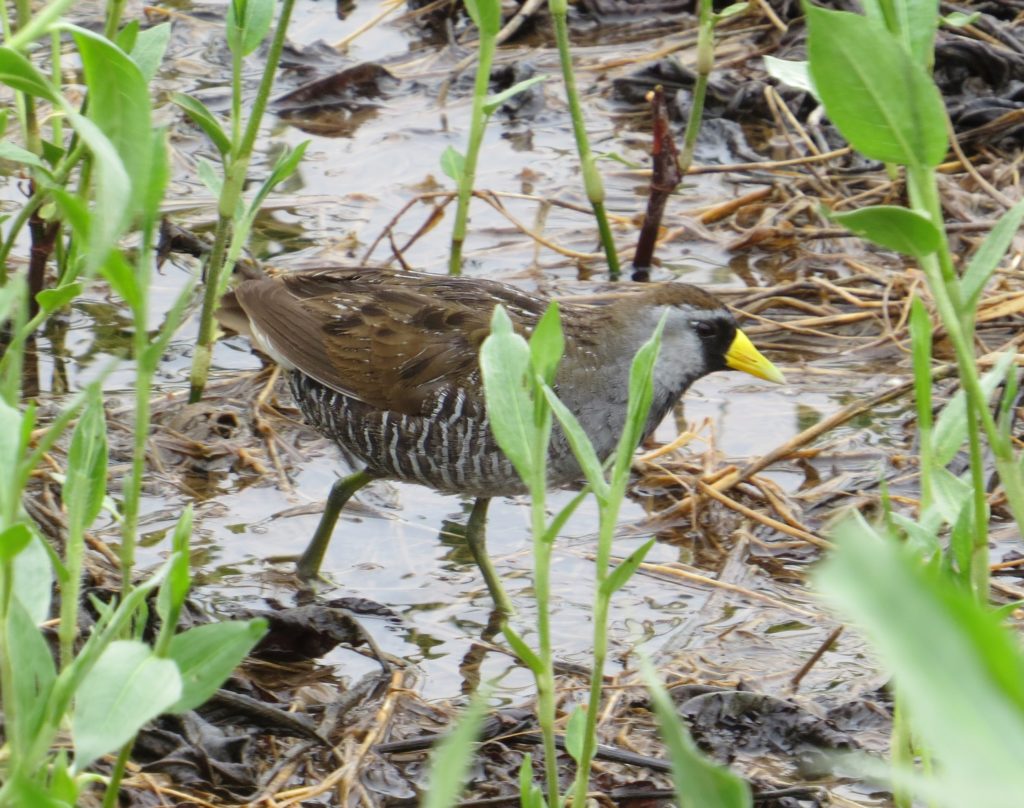 The birding action is too hot at home to be worried about other counties. I’m not and don’t anticipate to be an active 87-lister, though it is fun to add tics when I travel. This spring/summer has produced an abundance of good birds right here in Kandiyohi County, even if they were not new to me. In fact, for the first time ever, I managed to go above the 200 mark in a single year with half the year still to go! Here are some of the more fun finds I’ve encountered along the way.
The birding action is too hot at home to be worried about other counties. I’m not and don’t anticipate to be an active 87-lister, though it is fun to add tics when I travel. This spring/summer has produced an abundance of good birds right here in Kandiyohi County, even if they were not new to me. In fact, for the first time ever, I managed to go above the 200 mark in a single year with half the year still to go! Here are some of the more fun finds I’ve encountered along the way.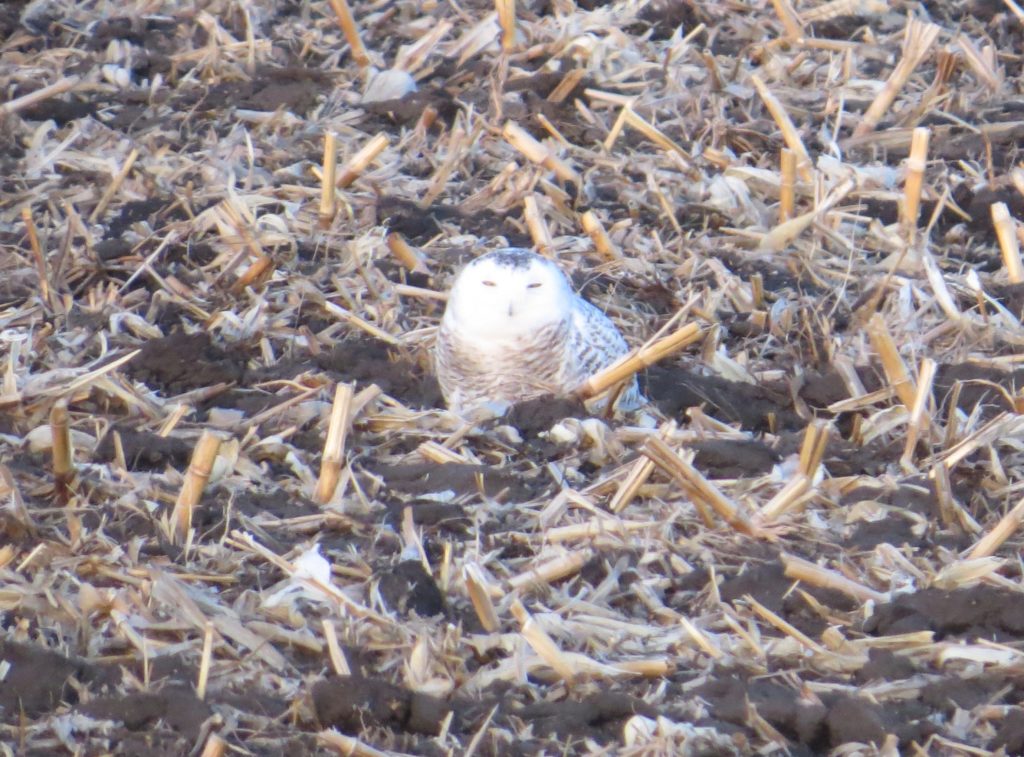 Another, “What’s that doing here right now?” bird was a presumed nesting pair of White-winged Crossbills this spring found by Steve Gardner in the same place I found a flock last November.
Another, “What’s that doing here right now?” bird was a presumed nesting pair of White-winged Crossbills this spring found by Steve Gardner in the same place I found a flock last November.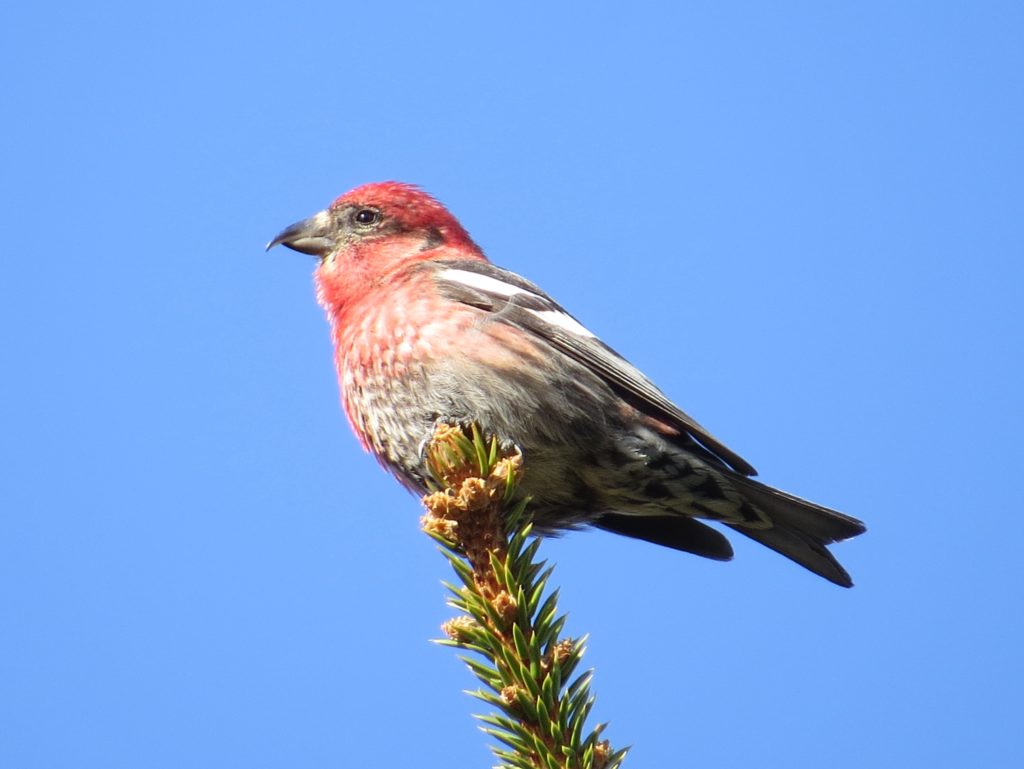
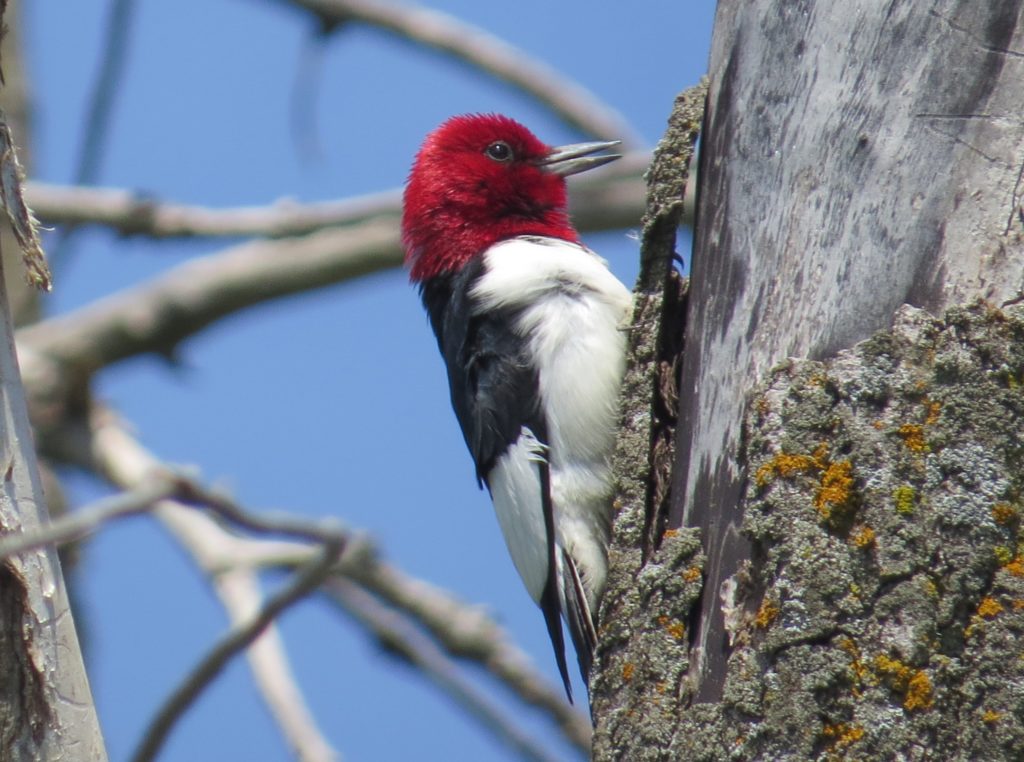 Though not a rare bird for Kandiyohi County, it’s always good to bump into a Scarlet Tanager too.
Though not a rare bird for Kandiyohi County, it’s always good to bump into a Scarlet Tanager too.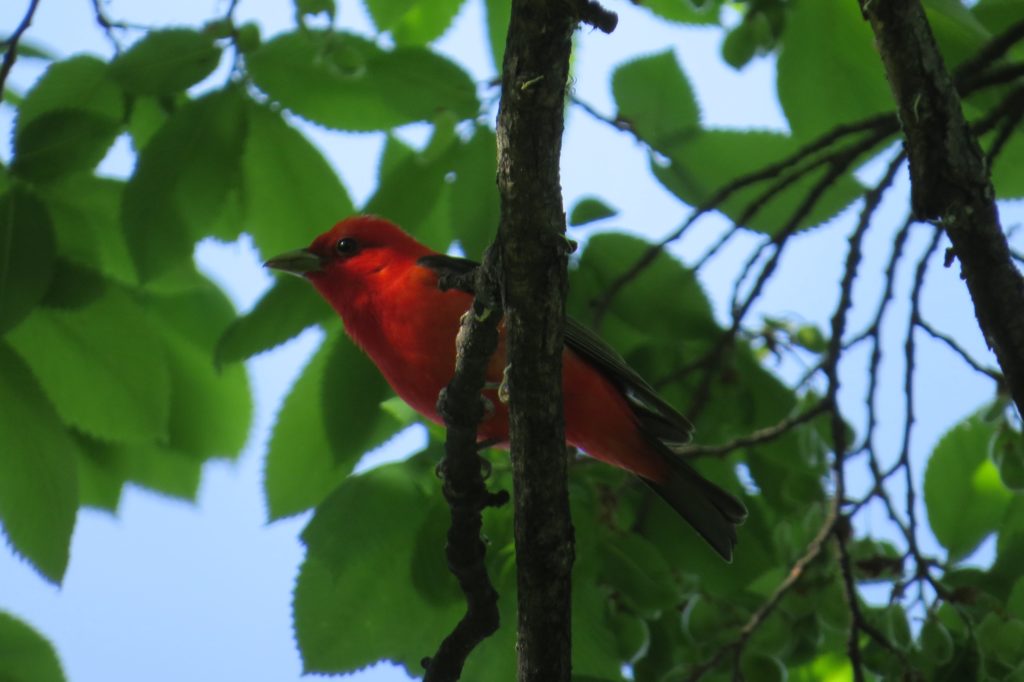 This spring/summer I have many county Seconds, meaning I’ve seen/heard a bird for the second time ever in the county. I was pretty thrilled to discover my second Loggerhead Shrike for the county. I’ve only seen a handful in the entire state, so this was pretty special.
This spring/summer I have many county Seconds, meaning I’ve seen/heard a bird for the second time ever in the county. I was pretty thrilled to discover my second Loggerhead Shrike for the county. I’ve only seen a handful in the entire state, so this was pretty special.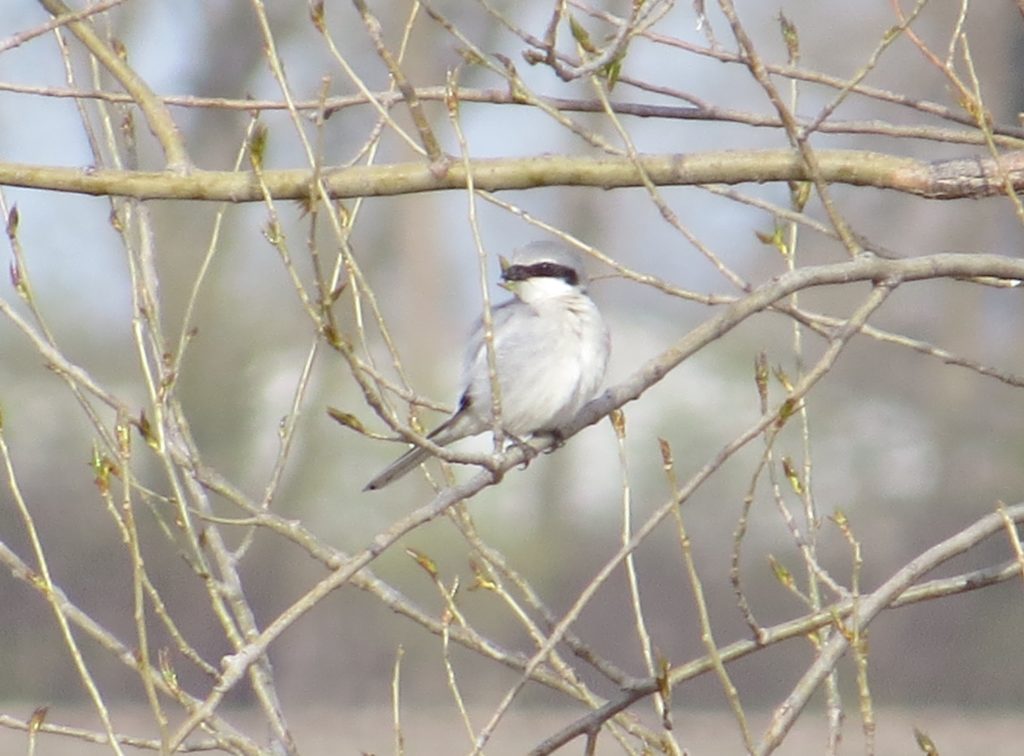
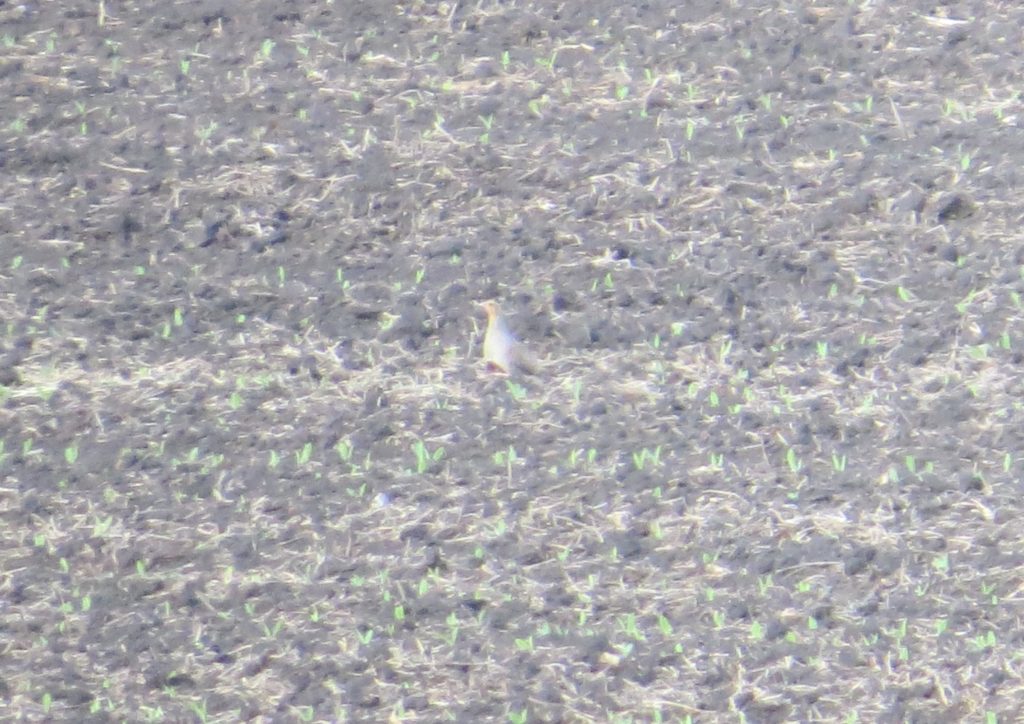
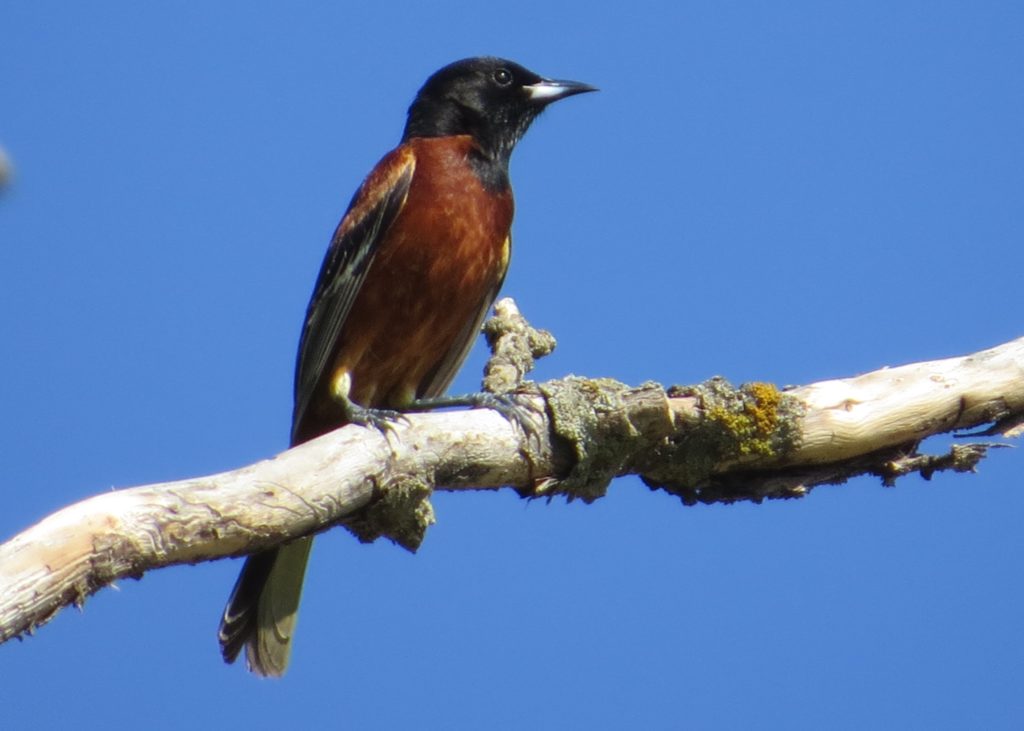 I saw this Orchard Oriole along a road between two gravel pits that I have walked many times in the past looking for a county record Blue Grosbeak. Since the record was found last summer and since it’s still not Blue Grosbeak season in my mind, I was not even thinking about that species. The thing about birding is that good finds sometimes happen when you least expect them. I was pretty pumped to finally (after all these years) get a personally found second Kandiyohi County record Blue Grosbeak.
I saw this Orchard Oriole along a road between two gravel pits that I have walked many times in the past looking for a county record Blue Grosbeak. Since the record was found last summer and since it’s still not Blue Grosbeak season in my mind, I was not even thinking about that species. The thing about birding is that good finds sometimes happen when you least expect them. I was pretty pumped to finally (after all these years) get a personally found second Kandiyohi County record Blue Grosbeak.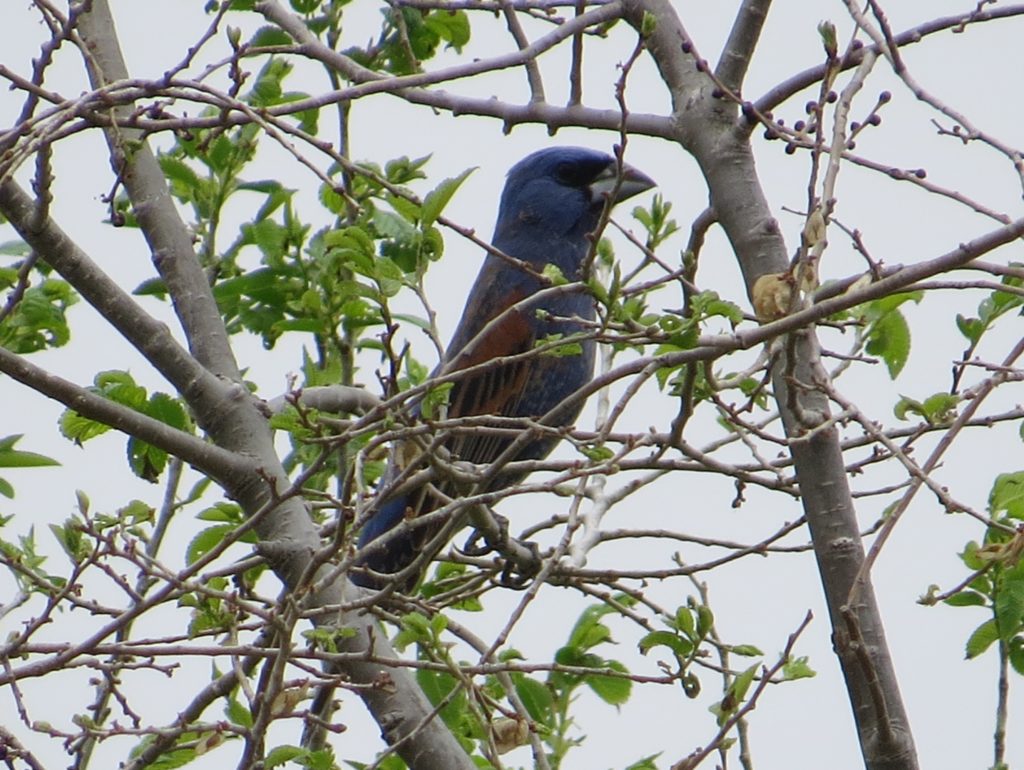 I didn’t have to wait long to get my second county Summer Tanager. County-listing legends, John Hockema and Chris Hockema, found this first-year male at Mt. Tom at Sibley State Park. Incredibly, other observers found a second Summer Tanager with this one.
I didn’t have to wait long to get my second county Summer Tanager. County-listing legends, John Hockema and Chris Hockema, found this first-year male at Mt. Tom at Sibley State Park. Incredibly, other observers found a second Summer Tanager with this one.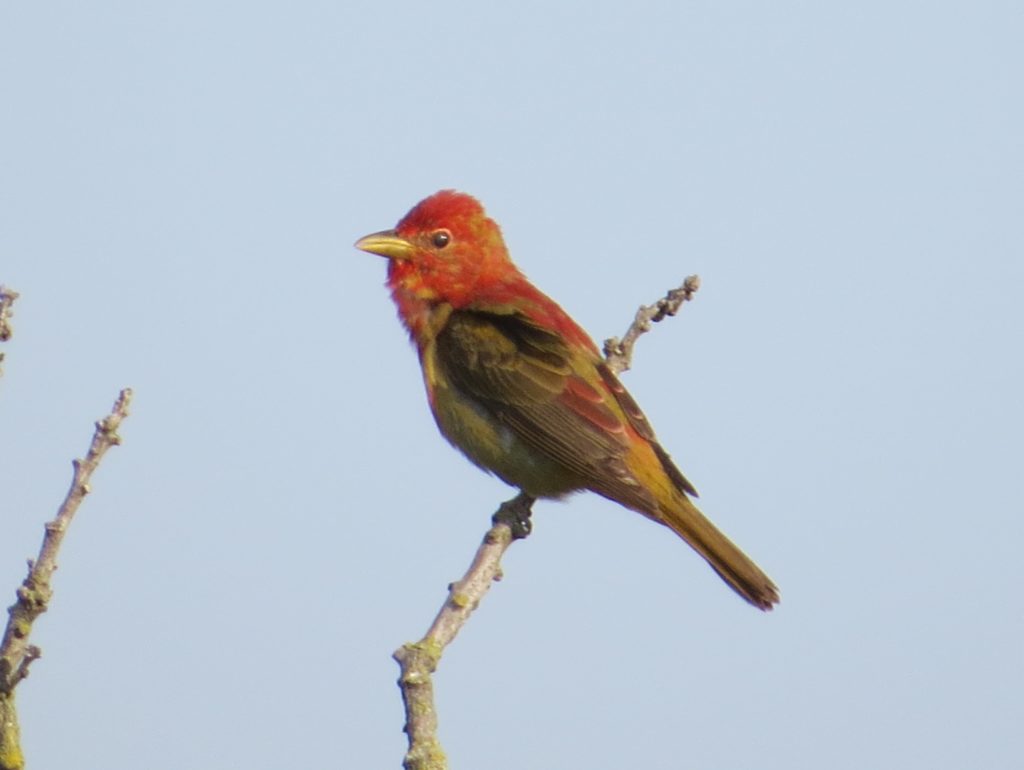 The Hockema Bros. followed this up immediately with another incredible find at Mt. Tom–my second county Eastern Towhee.
The Hockema Bros. followed this up immediately with another incredible find at Mt. Tom–my second county Eastern Towhee.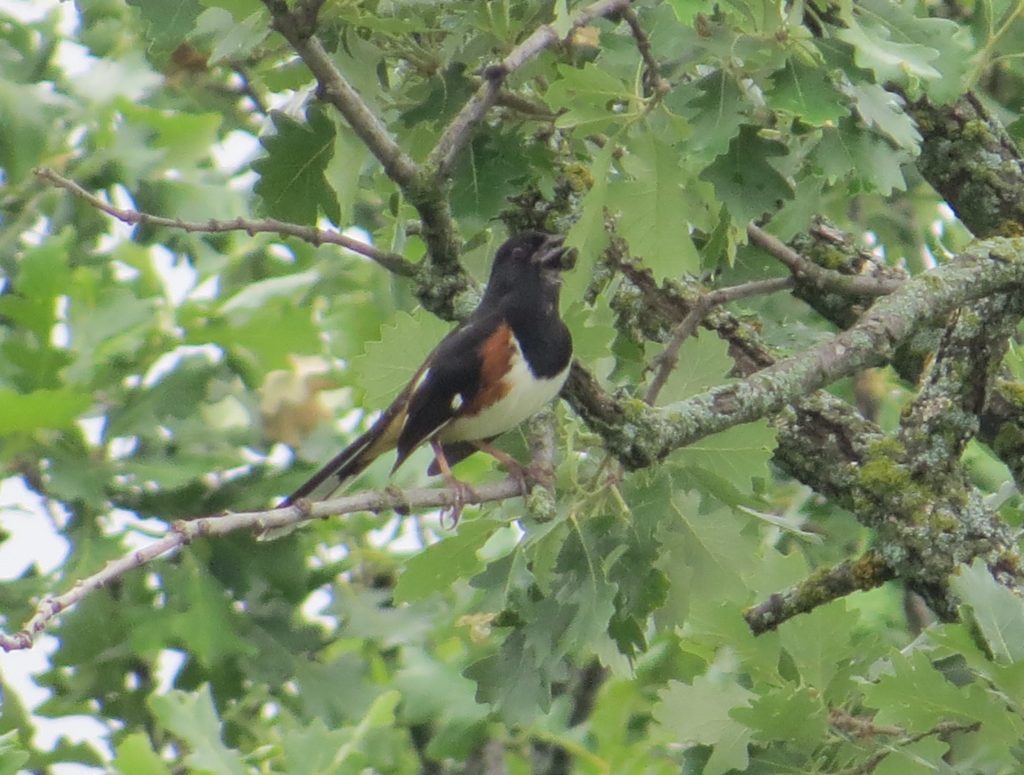 Continuing this list of Seconds was my second county observation and first county visual of a Yellow-billed Cuckoo in Randy’s magical yard.
Continuing this list of Seconds was my second county observation and first county visual of a Yellow-billed Cuckoo in Randy’s magical yard.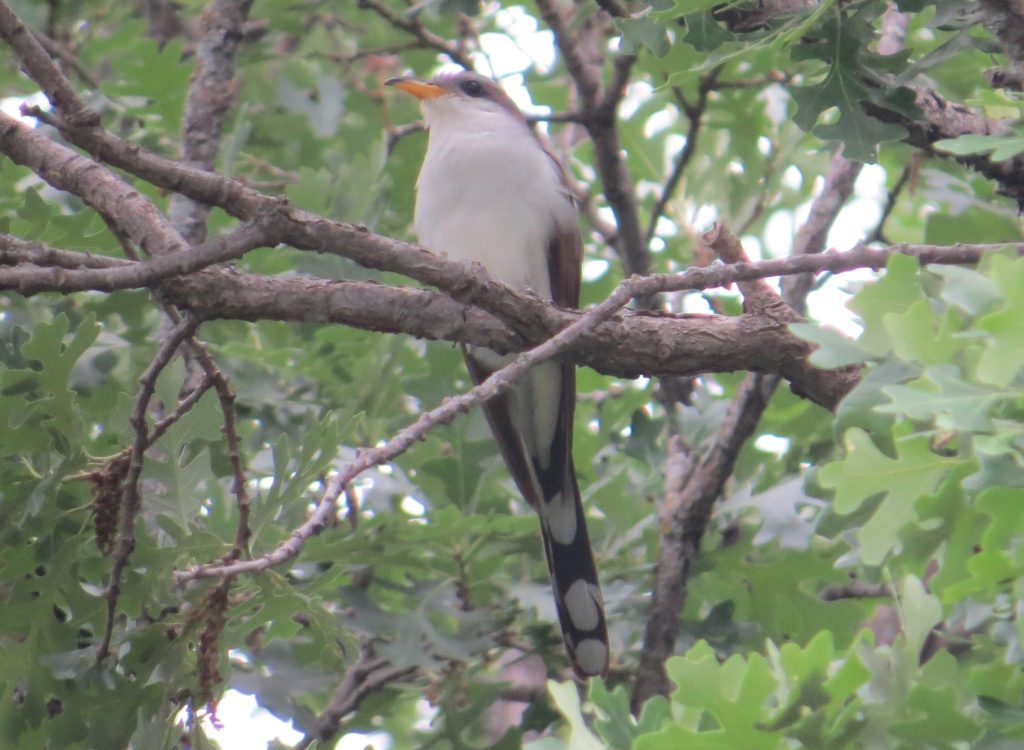 This Hudsonian Godwit was my fourth observation of this species in the county, but this was only my second time seeing one in breeding plumage.
This Hudsonian Godwit was my fourth observation of this species in the county, but this was only my second time seeing one in breeding plumage.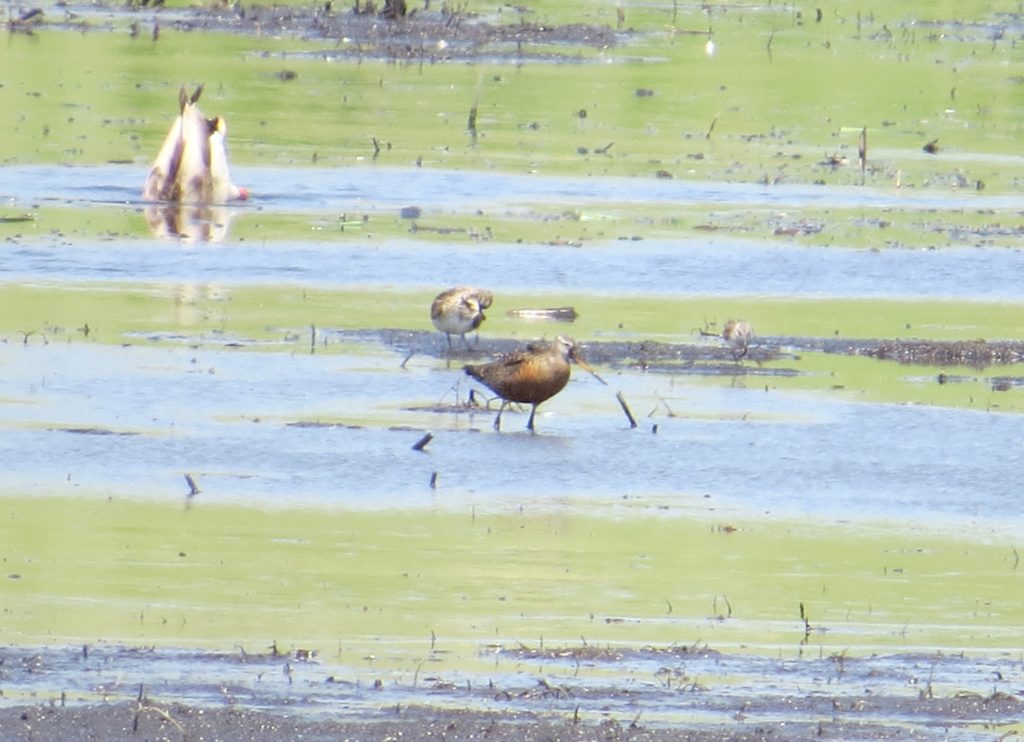 Birding locally this spring has been absolutely incredible and proof that you really don’t have to go far to find great things. Other fun finds on the road to 200 and beyond included Least Bitterns, Eastern Meadowlarks, Lark Sparrows, a Cerulean Warbler, and more. Even the new yard has had some great action with Common Nighthawks circling over, Purple Finches stopping by the feeders, and a Wood Thrush waking me up one morning with its serenade.
Birding locally this spring has been absolutely incredible and proof that you really don’t have to go far to find great things. Other fun finds on the road to 200 and beyond included Least Bitterns, Eastern Meadowlarks, Lark Sparrows, a Cerulean Warbler, and more. Even the new yard has had some great action with Common Nighthawks circling over, Purple Finches stopping by the feeders, and a Wood Thrush waking me up one morning with its serenade.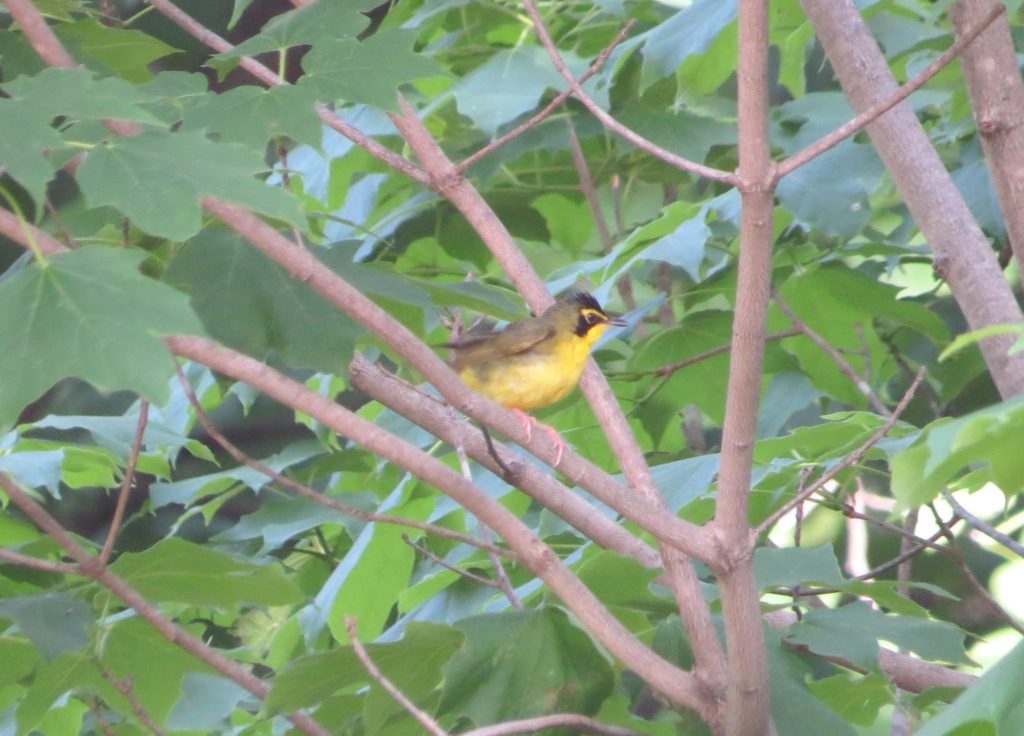
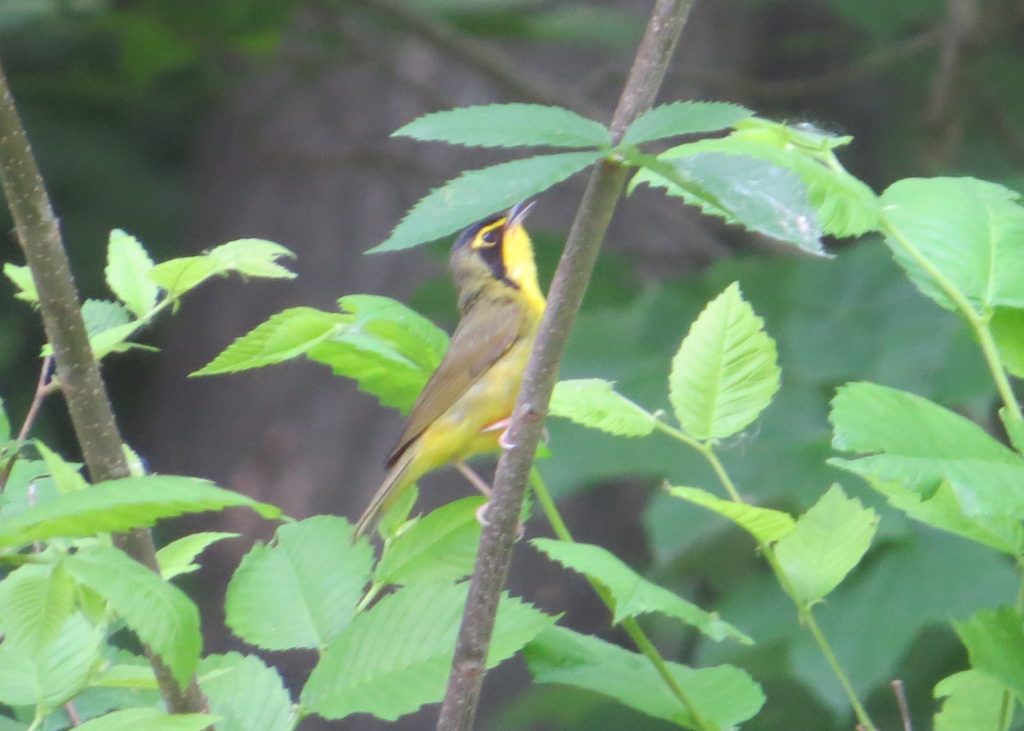
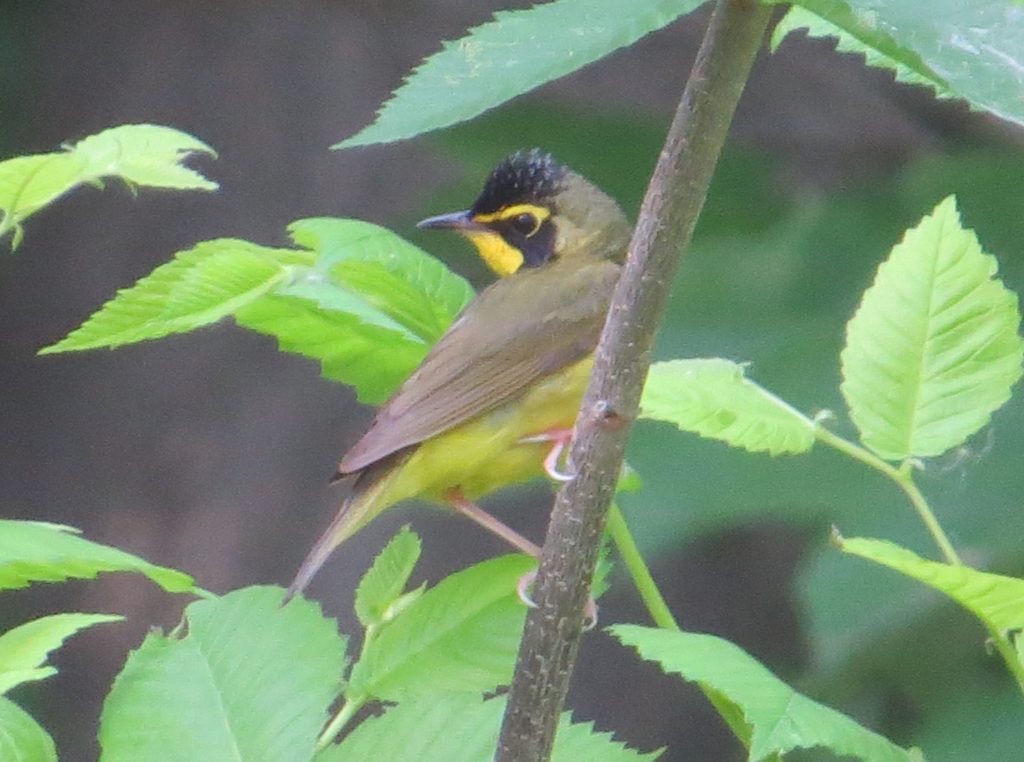 I am still shocked I got to see this Warbler after dipping in the original spot. Getting a photo was a wonderful bonus as I never counted on getting one in the first place even when I thought the bird would be a cinch. That’s birding for you, though. It’s never over until it’s over and doesn’t always play out like you think it will. This was a good reminder to bird hard to the end and expect the unexpected.
I am still shocked I got to see this Warbler after dipping in the original spot. Getting a photo was a wonderful bonus as I never counted on getting one in the first place even when I thought the bird would be a cinch. That’s birding for you, though. It’s never over until it’s over and doesn’t always play out like you think it will. This was a good reminder to bird hard to the end and expect the unexpected.
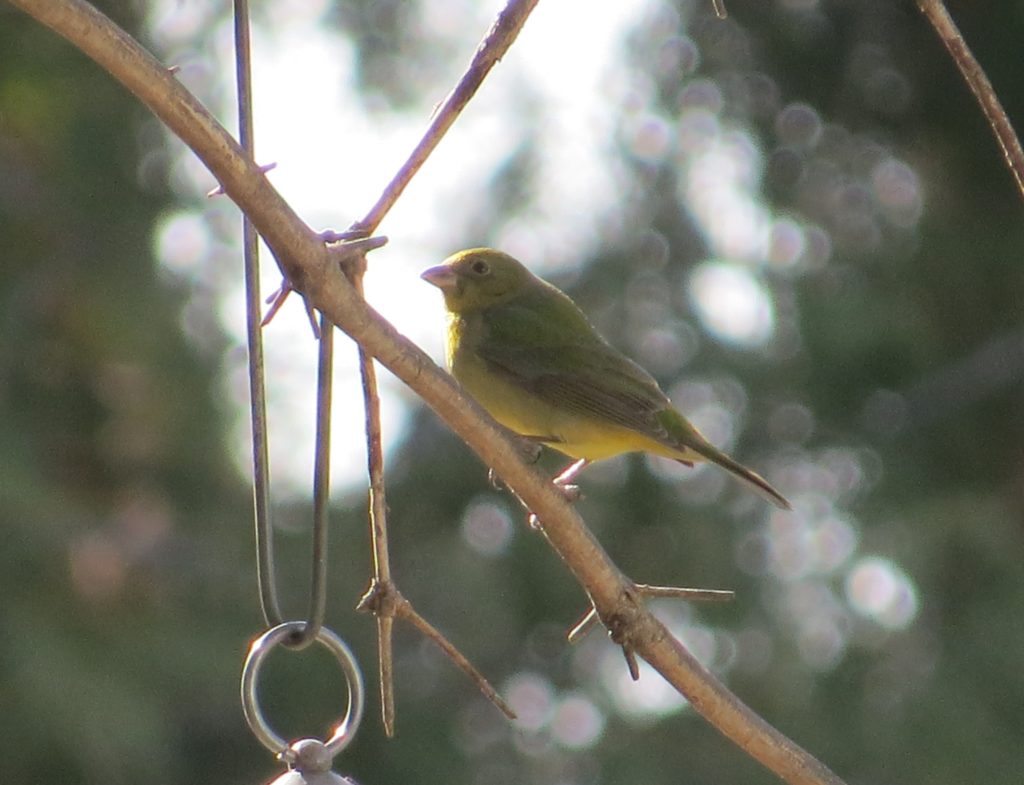
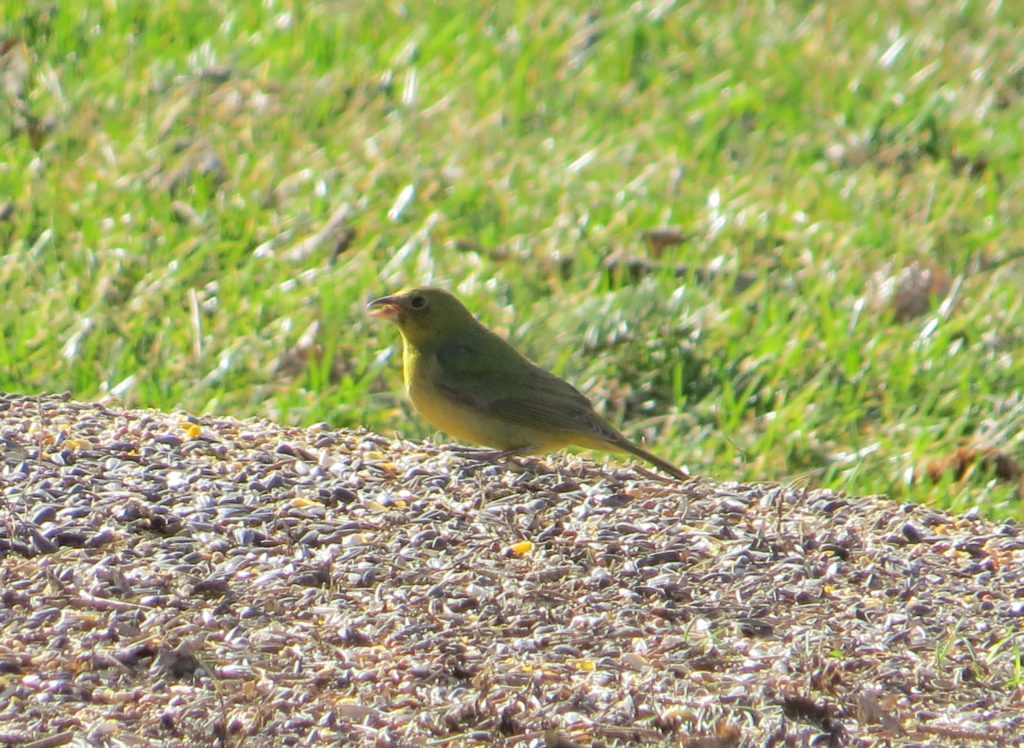
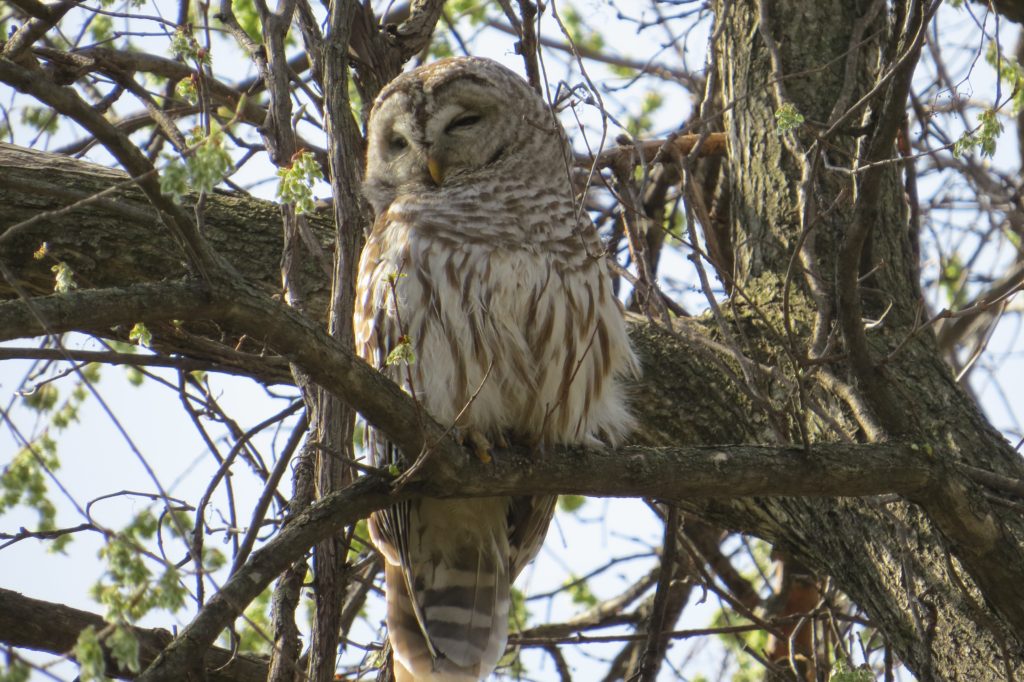
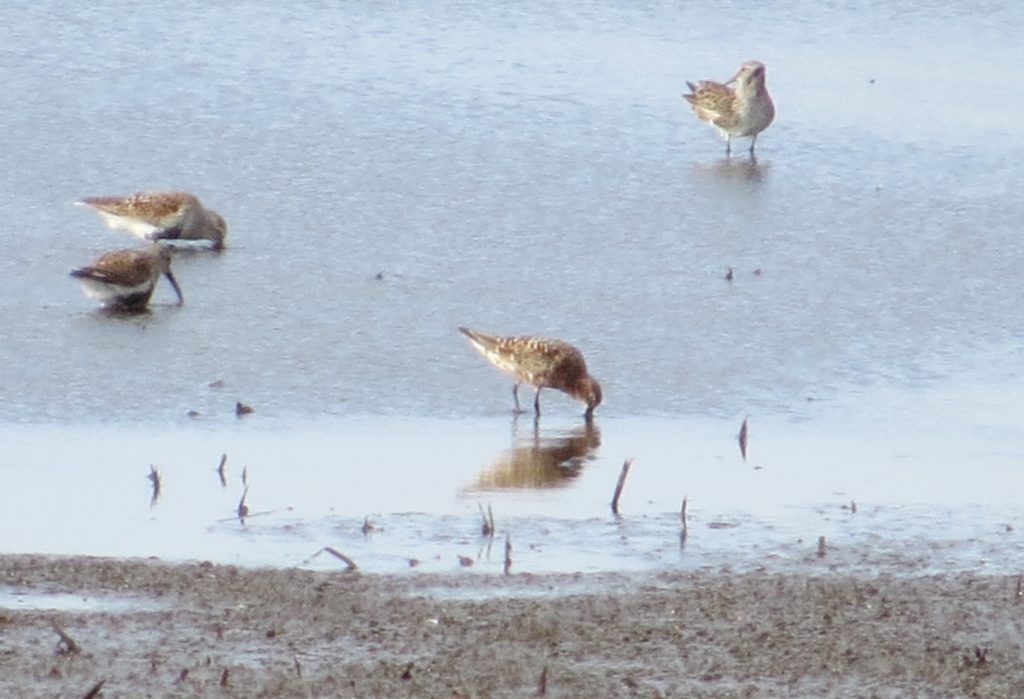
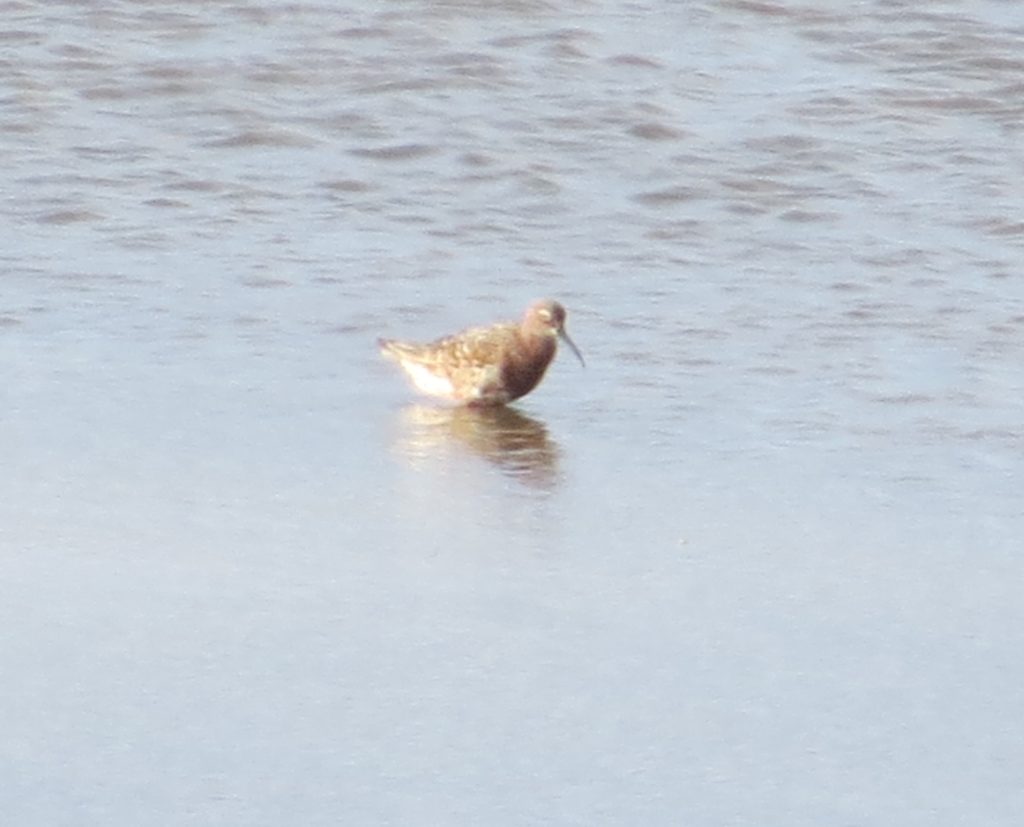 This story gets a little more interesting than just a really rare bird. There is a county listing married couple in the state, Barb and Denny Martin, who travel the entire state amassing tics everywhere they go. They’ve been at this awhile and have a very impressive total of 399 and 400 MN birds. The discrepancy bird? Curlew Sandpiper. Needless to say, they came screaming in from the Twin Cities and got on site while we were there. I wasn’t paying attention when Barb was telling someone else the backstory on how the discrepancy came to be, but regardless, there can be peace in the Martin household now that everything is tied up at 400 apiece.
This story gets a little more interesting than just a really rare bird. There is a county listing married couple in the state, Barb and Denny Martin, who travel the entire state amassing tics everywhere they go. They’ve been at this awhile and have a very impressive total of 399 and 400 MN birds. The discrepancy bird? Curlew Sandpiper. Needless to say, they came screaming in from the Twin Cities and got on site while we were there. I wasn’t paying attention when Barb was telling someone else the backstory on how the discrepancy came to be, but regardless, there can be peace in the Martin household now that everything is tied up at 400 apiece.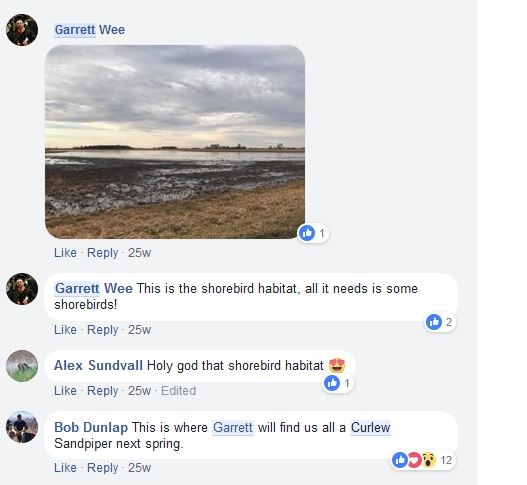
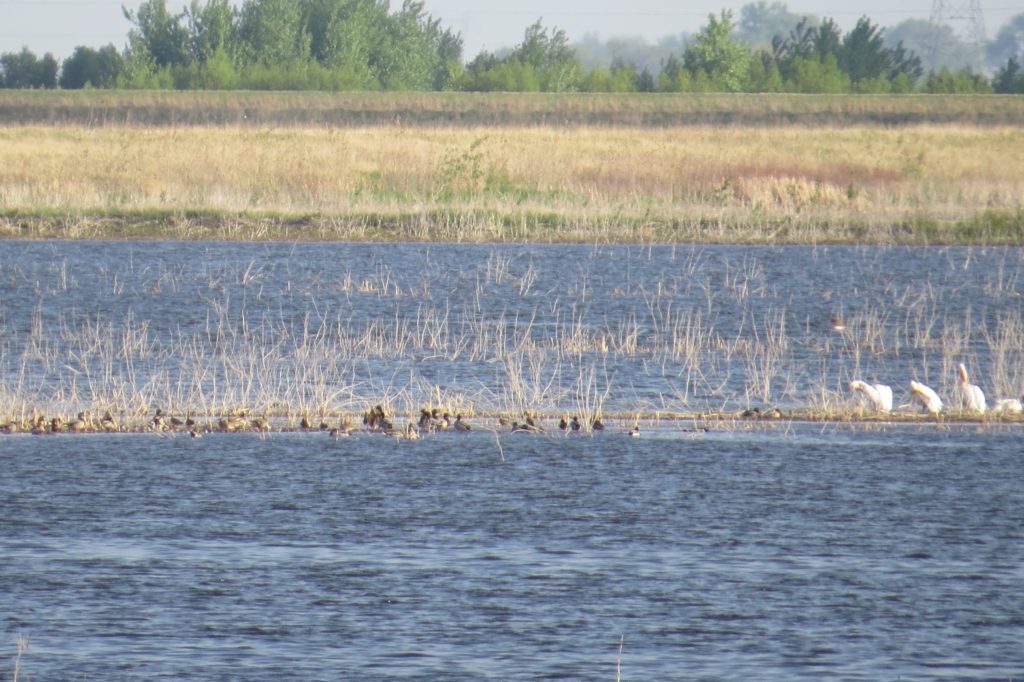 The views through the scopes shaking in the wind were tenuous but definitive enough to know what we were looking at. Liz was, appropriately, super pumped by resurrecting these birds and saving the day for all of us. Also, appropriately, she insisted we selfie with her to commemorate this great birding memory. Thanks, Liz, for digging this one out and changing the day’s narrative!
The views through the scopes shaking in the wind were tenuous but definitive enough to know what we were looking at. Liz was, appropriately, super pumped by resurrecting these birds and saving the day for all of us. Also, appropriately, she insisted we selfie with her to commemorate this great birding memory. Thanks, Liz, for digging this one out and changing the day’s narrative!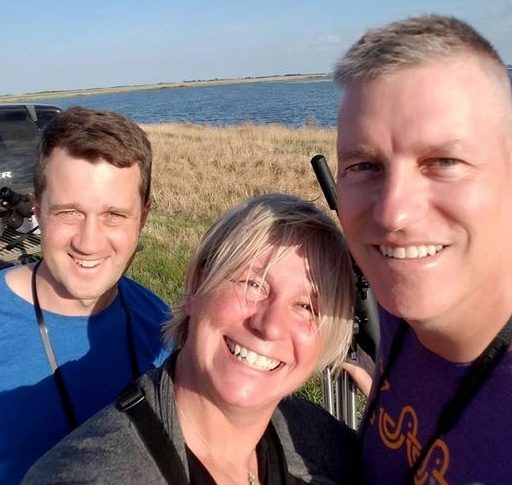 I was itching for a better look at these Whimbrels, so Steve and I headed to the road that bordered the basin on the east. Finally I got the look I was hoping for–seeing that tell-tale bill. It left me wanting more, but it was enough for now. Maybe someday I’d do better…
I was itching for a better look at these Whimbrels, so Steve and I headed to the road that bordered the basin on the east. Finally I got the look I was hoping for–seeing that tell-tale bill. It left me wanting more, but it was enough for now. Maybe someday I’d do better…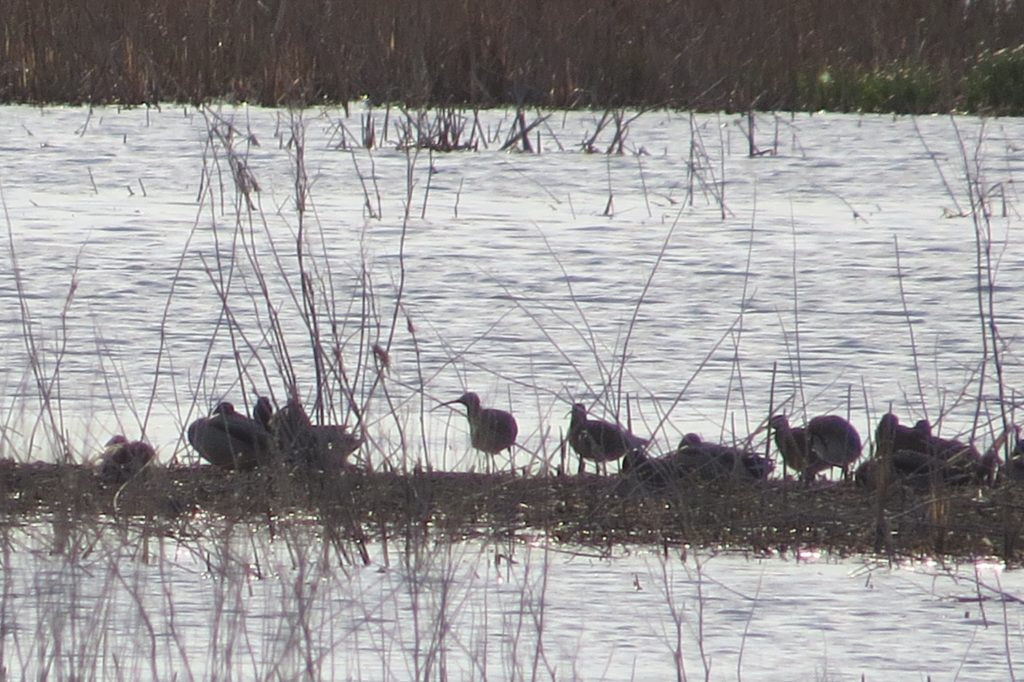 This brings us to this Memorial Day weekend where the family and I made a quick overnight trip to Duluth. Red-throated Loon is annual in Minnesota in both the late fall and spring on Lake Superior during migration. For whatever reason, I still haven’t made this bird a priority. Five years into my birding career, and I still hadn’t seen one. I decided to change that by going on this trip. RTLOs had been reported in good numbers off Park Point in Duluth the past few weeks. Memorial Day is one of the best times to look for them. We didn’t waste any time in Duluth, hitting the 12th St. beach access on Park Point immediately upon arriving in town. As the family played on the sandy beach and enjoyed the brisk 55-degree weather (mid 90s back home!), I scanned for this holdout to my life list. Nothing at 12 St., so we continued a few miles east down the Point to the beach house. There was a lot of chop and sun glare, but I eventually latched onto a trio of these constantly diving Loons. Seeing these Loons, in breeding plumage no less, felt good even if the photo leaves a lot to be desired.
This brings us to this Memorial Day weekend where the family and I made a quick overnight trip to Duluth. Red-throated Loon is annual in Minnesota in both the late fall and spring on Lake Superior during migration. For whatever reason, I still haven’t made this bird a priority. Five years into my birding career, and I still hadn’t seen one. I decided to change that by going on this trip. RTLOs had been reported in good numbers off Park Point in Duluth the past few weeks. Memorial Day is one of the best times to look for them. We didn’t waste any time in Duluth, hitting the 12th St. beach access on Park Point immediately upon arriving in town. As the family played on the sandy beach and enjoyed the brisk 55-degree weather (mid 90s back home!), I scanned for this holdout to my life list. Nothing at 12 St., so we continued a few miles east down the Point to the beach house. There was a lot of chop and sun glare, but I eventually latched onto a trio of these constantly diving Loons. Seeing these Loons, in breeding plumage no less, felt good even if the photo leaves a lot to be desired.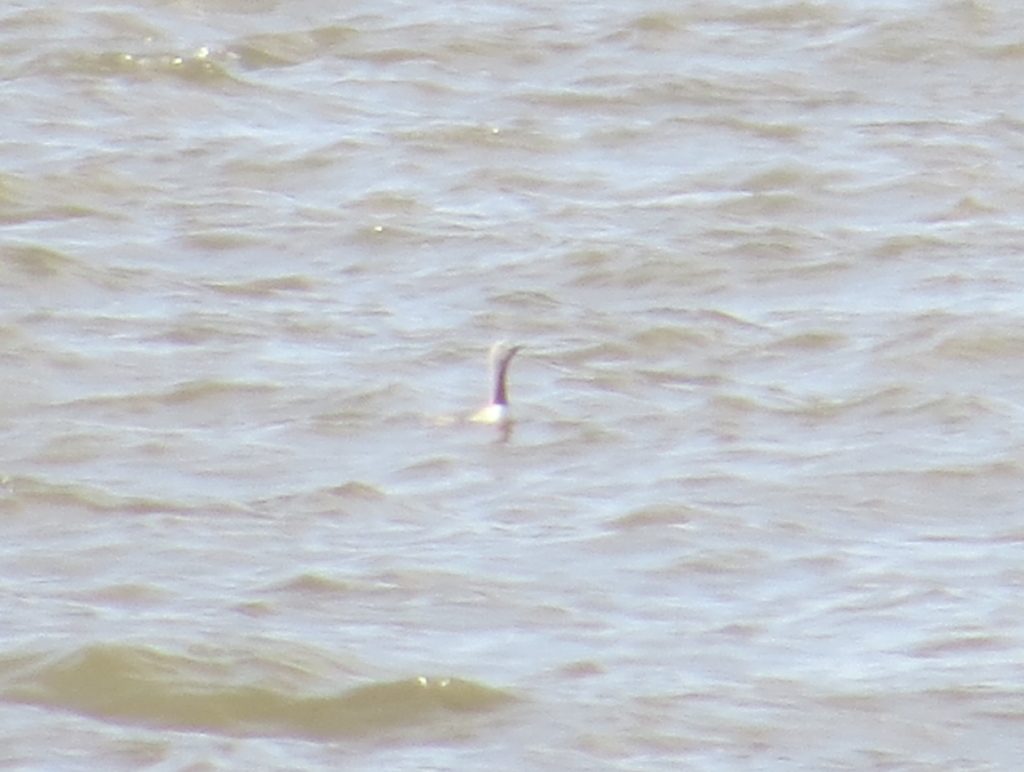 Since the main target of the trip was achieved, there was nothing left to do but have a relaxing time with the family. Of course, I’d be up and at ’em the next morning well before the family was awake. I decided to try for more/better visuals of the Loons. I had no luck with that this morning. What I lacked in the Loon-finding skills, I made up for in finding Duluth birding pal, John Richardson. It’s always good to see John. Not only is he a fun guy, but he is one skilled birder. He didn’t find a Red-throated Loon either. Instead, he found something just as good or even better:
Since the main target of the trip was achieved, there was nothing left to do but have a relaxing time with the family. Of course, I’d be up and at ’em the next morning well before the family was awake. I decided to try for more/better visuals of the Loons. I had no luck with that this morning. What I lacked in the Loon-finding skills, I made up for in finding Duluth birding pal, John Richardson. It’s always good to see John. Not only is he a fun guy, but he is one skilled birder. He didn’t find a Red-throated Loon either. Instead, he found something just as good or even better: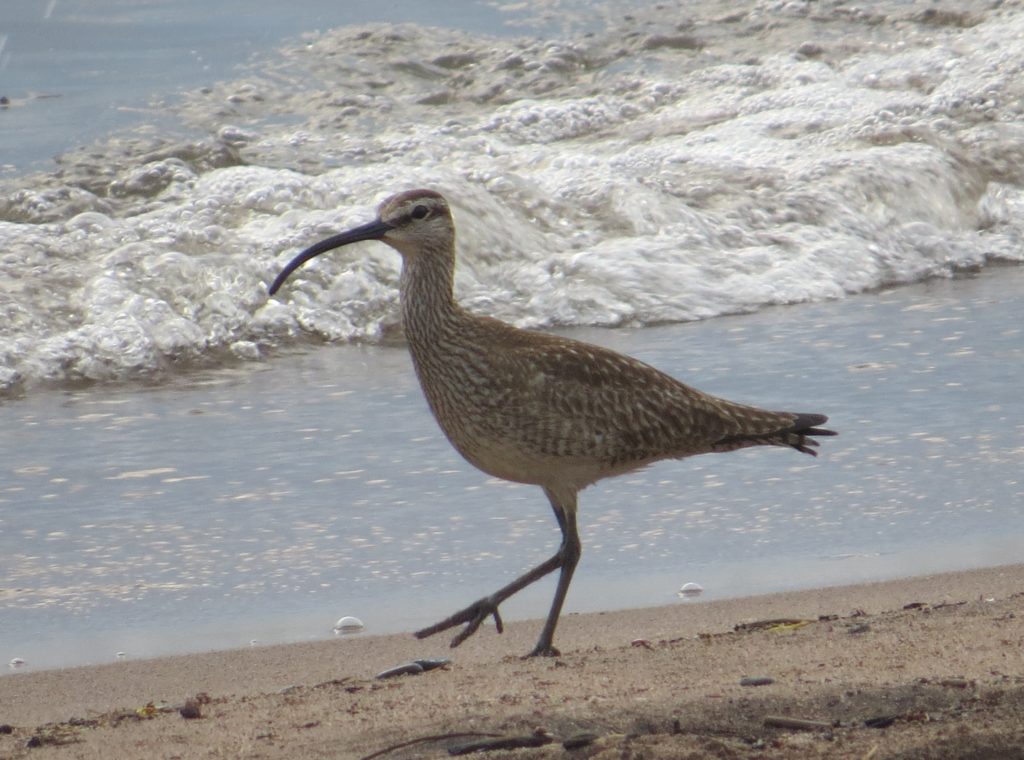
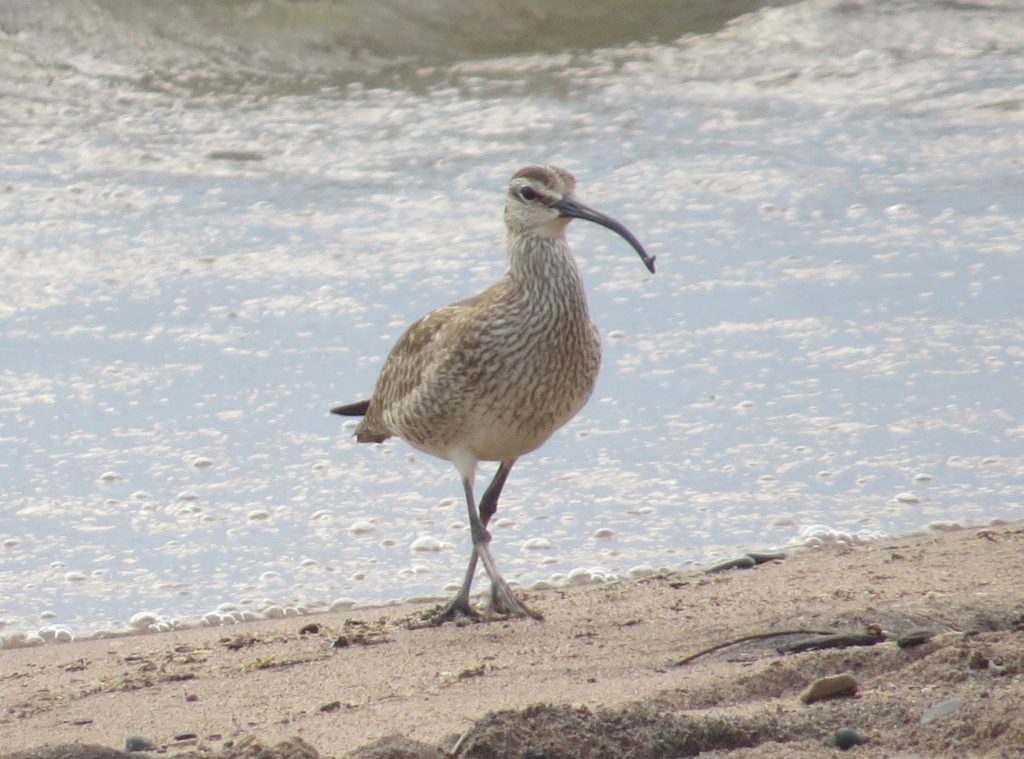 John and I spent the better part of an hour trying to relocate this single Whimbrel John had first found near the dune bridge at Park Point. It was time and effort well spent. Such a great-looking shorebird! Truly, not many other shorebirds excite birders as much as this one. It was as equal of a highlight as the RTLO, which I am now expecting to get crushing looks of any day at this rate.
John and I spent the better part of an hour trying to relocate this single Whimbrel John had first found near the dune bridge at Park Point. It was time and effort well spent. Such a great-looking shorebird! Truly, not many other shorebirds excite birders as much as this one. It was as equal of a highlight as the RTLO, which I am now expecting to get crushing looks of any day at this rate.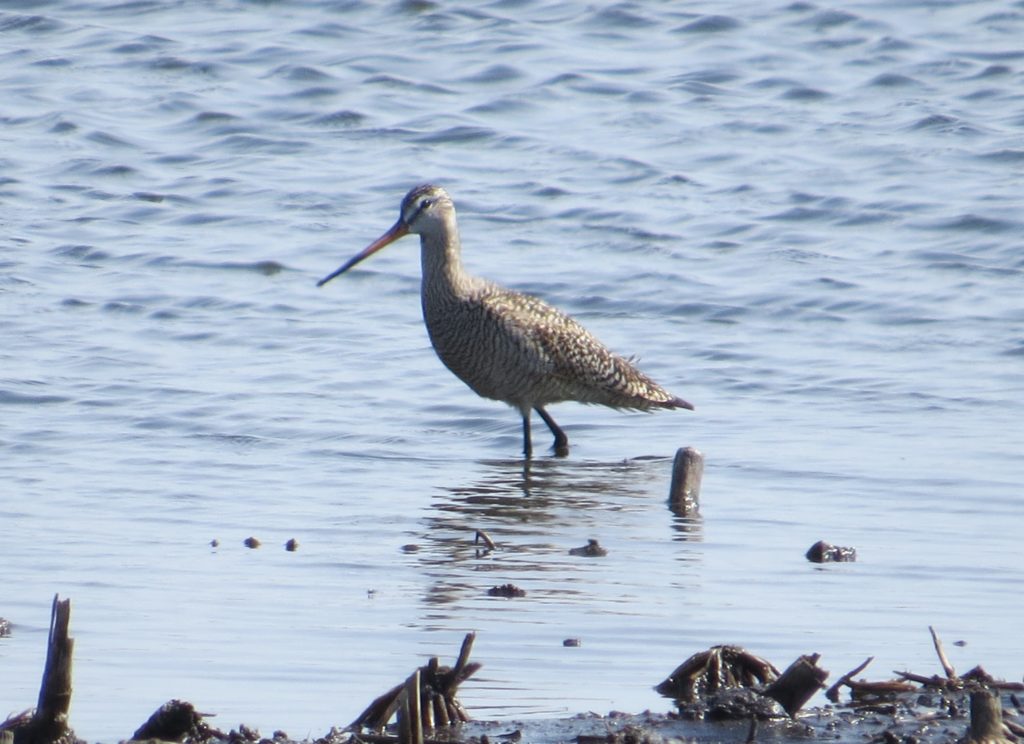
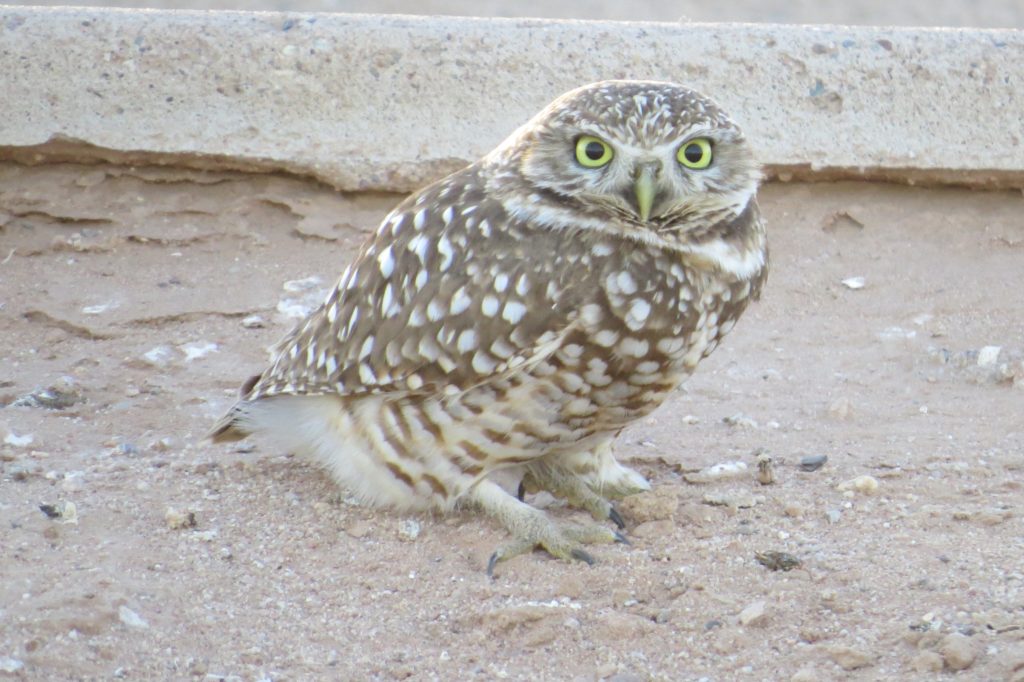 Finally, I found the sought-after silhouette at the eleventh hour.
Finally, I found the sought-after silhouette at the eleventh hour.
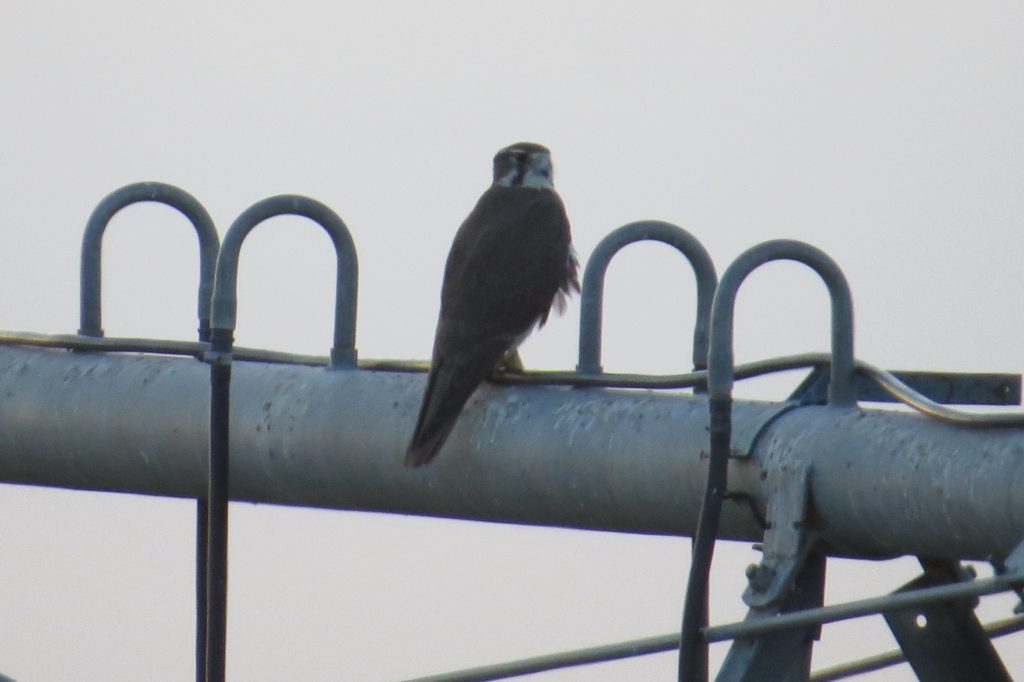 My clean-up operations are not haphazard–my strategy is to try to go after anything rare first and save the most common for later if need be. One of those rarities was the Rufous-backed Robin. This past winter was exceptional for this species with many records popping up in AZ. So that next day, my friend Gordon Karre took me on a mini-outing to stake out a gorgeous backyard in Paradise Valley to hopefully get one of two Robins that had been eating the berries of pyracantha bushes. The problem was that time and berries had run out for this particular Robin pair. We dipped.
My clean-up operations are not haphazard–my strategy is to try to go after anything rare first and save the most common for later if need be. One of those rarities was the Rufous-backed Robin. This past winter was exceptional for this species with many records popping up in AZ. So that next day, my friend Gordon Karre took me on a mini-outing to stake out a gorgeous backyard in Paradise Valley to hopefully get one of two Robins that had been eating the berries of pyracantha bushes. The problem was that time and berries had run out for this particular Robin pair. We dipped.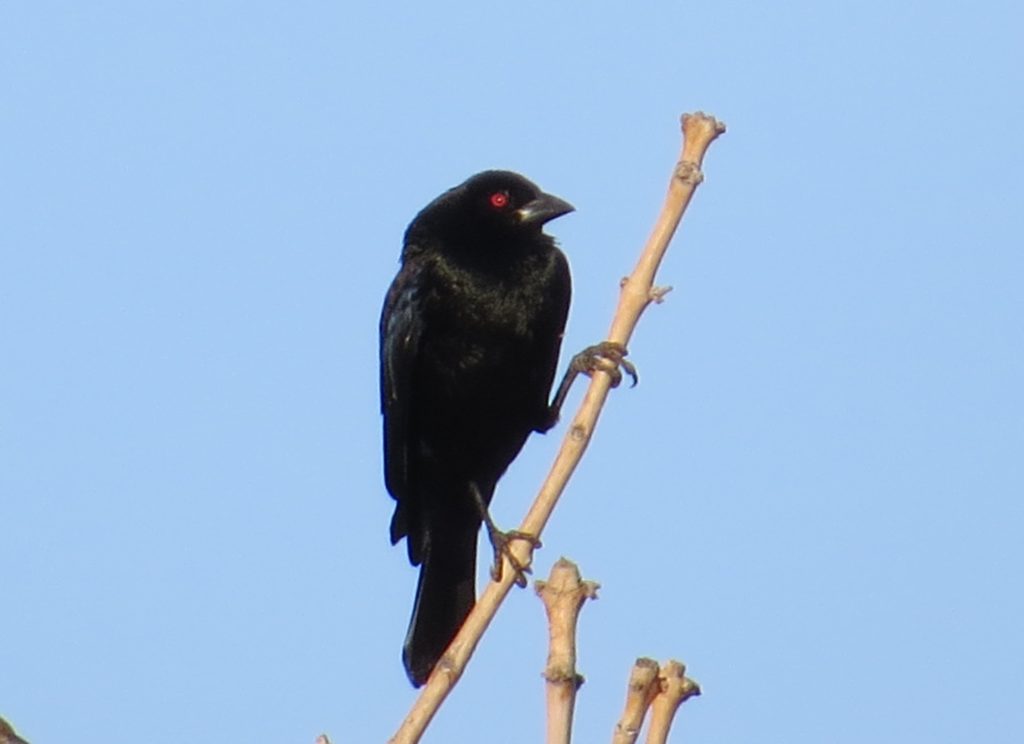 With that target achieved, the birding was put on hold until the next morning where Gordon, my Dad, and I would follow the same strategy–go after a key rarity and snag as many other lifers along the way. That rarity was the Ruddy Ground-Dove. Though we were going to originally go after one in the Phoenix area, it became a no-show just a couple days before the trip. We were then forced to go south to the Red Rock feedlot where several had been seen.
With that target achieved, the birding was put on hold until the next morning where Gordon, my Dad, and I would follow the same strategy–go after a key rarity and snag as many other lifers along the way. That rarity was the Ruddy Ground-Dove. Though we were going to originally go after one in the Phoenix area, it became a no-show just a couple days before the trip. We were then forced to go south to the Red Rock feedlot where several had been seen.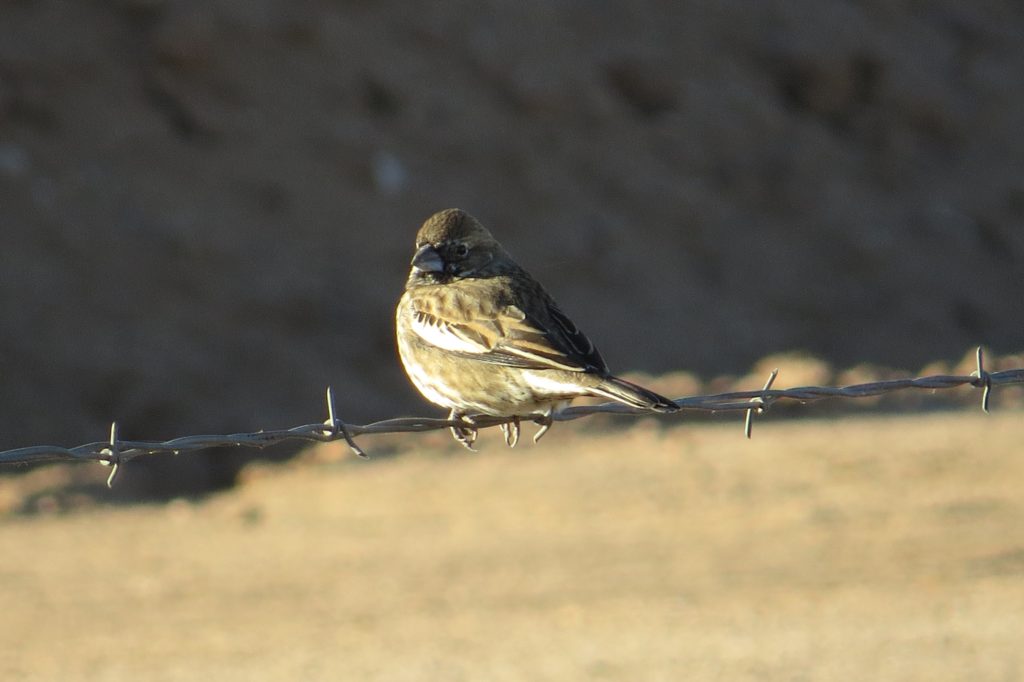 Finally we got on to the flock(!) of the rare Doves, finding five or six in all. Here are four of them with an Inca Dove that has identity issues, all huddling to keep warm on this chilly morning.
Finally we got on to the flock(!) of the rare Doves, finding five or six in all. Here are four of them with an Inca Dove that has identity issues, all huddling to keep warm on this chilly morning.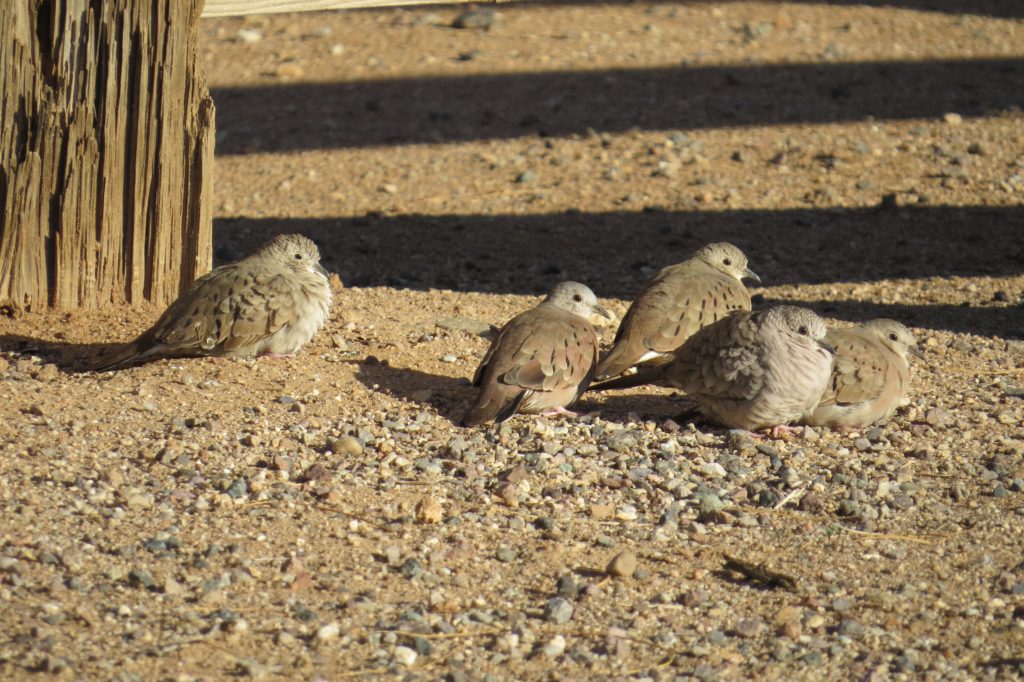
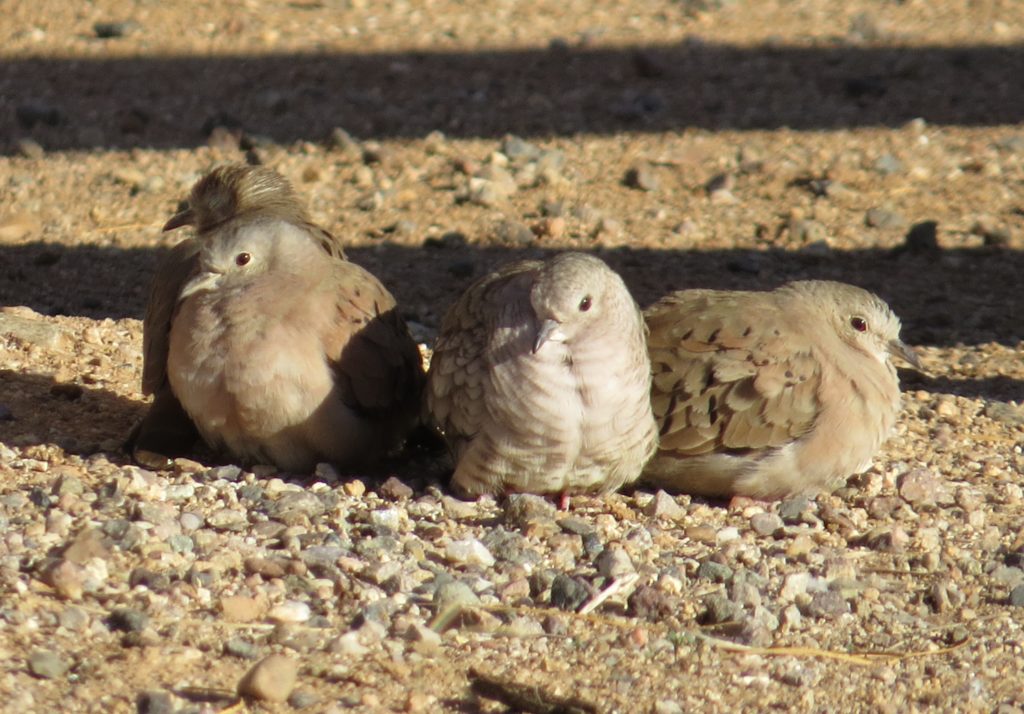
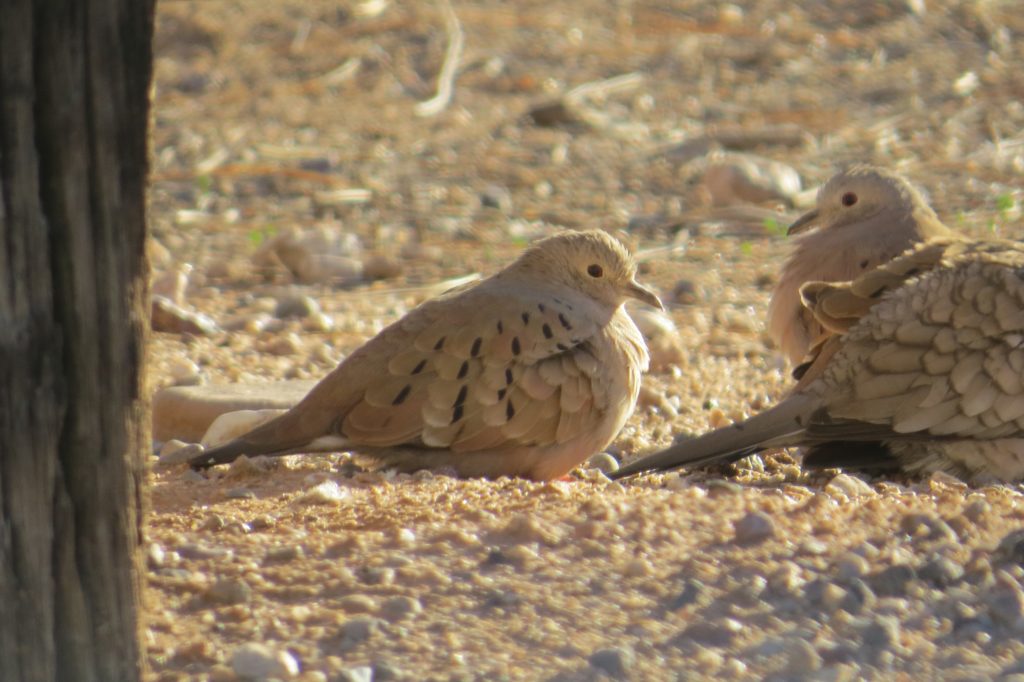
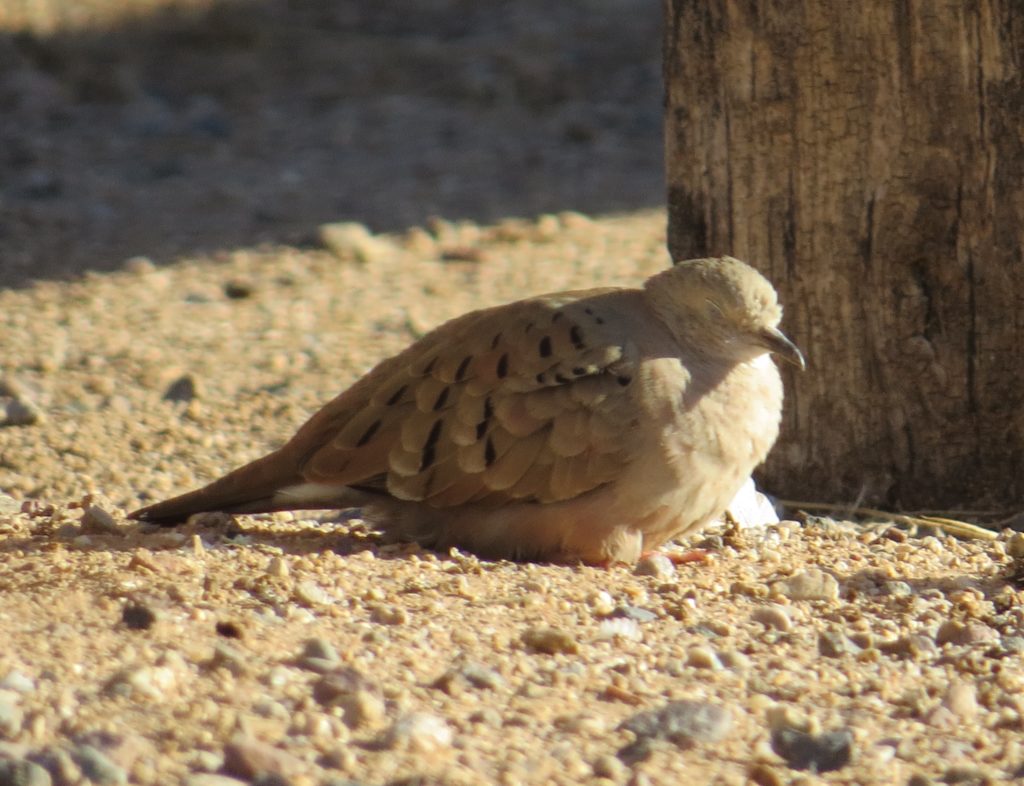 The plan was to cruise through the Santa Cruz Flats on the way home to try for two birds I had long been holding in reserve: Crested Caracara and Mountain Plover. The Santa Cruz Flats are fun place to bird where one can not only stumble across a Mark Ochs lifer but also see cool stuff like Harris’s Hawks.
The plan was to cruise through the Santa Cruz Flats on the way home to try for two birds I had long been holding in reserve: Crested Caracara and Mountain Plover. The Santa Cruz Flats are fun place to bird where one can not only stumble across a Mark Ochs lifer but also see cool stuff like Harris’s Hawks.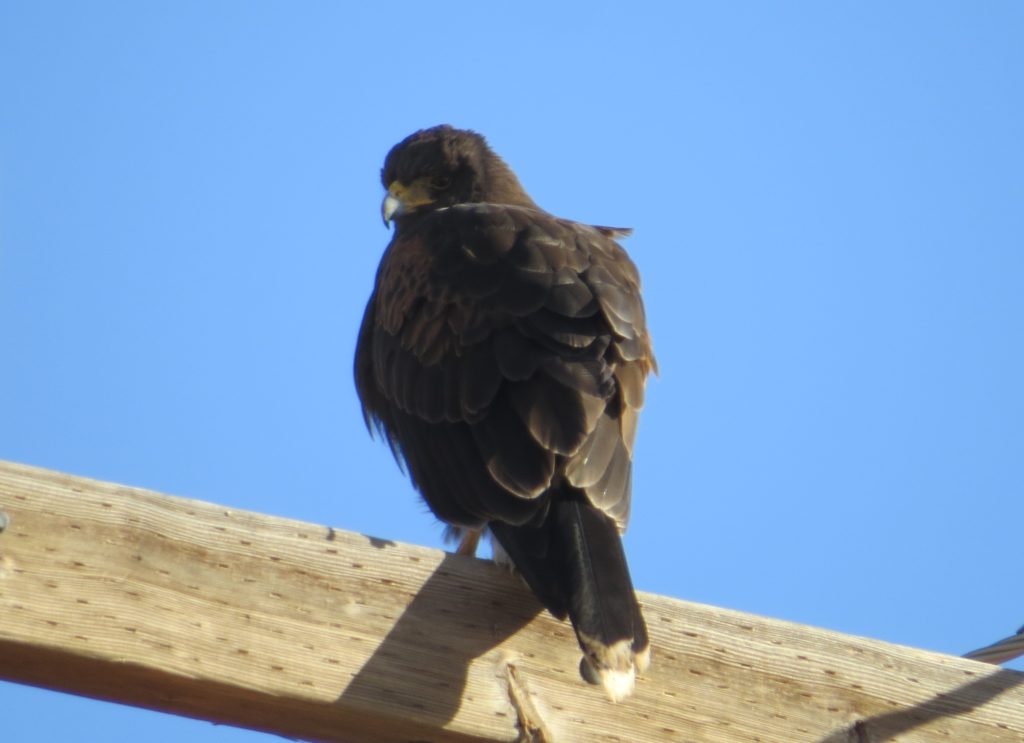
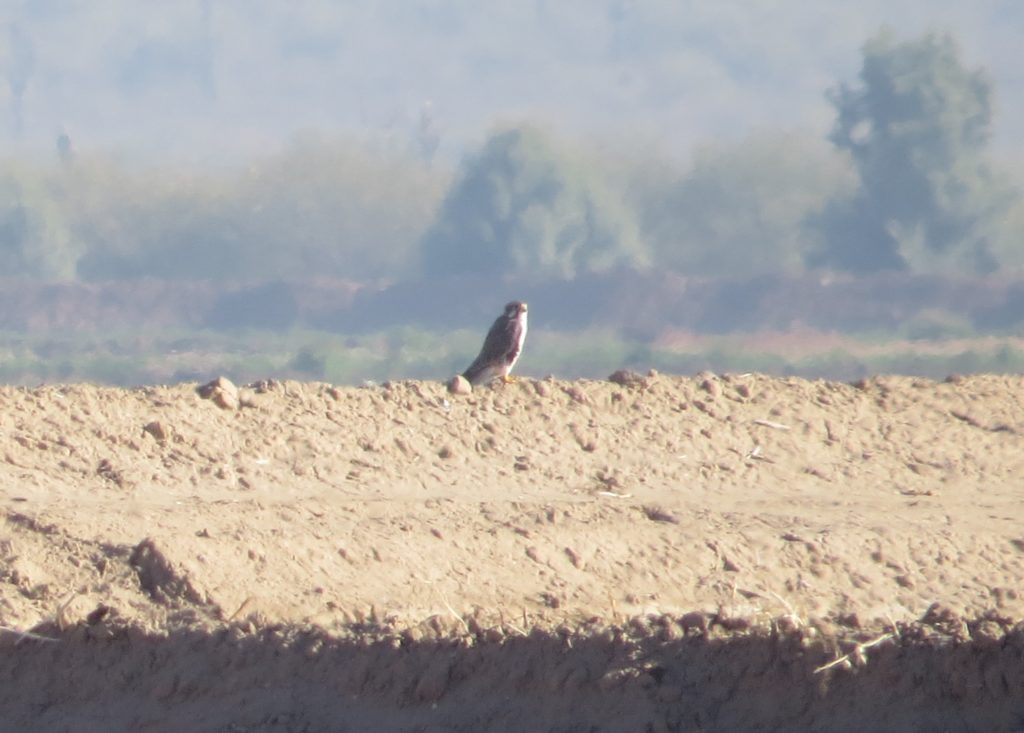 Then, thanks to our trusty guide, we finally got onto one of the two targets–a whole heap of Crested Caracaras.
Then, thanks to our trusty guide, we finally got onto one of the two targets–a whole heap of Crested Caracaras. 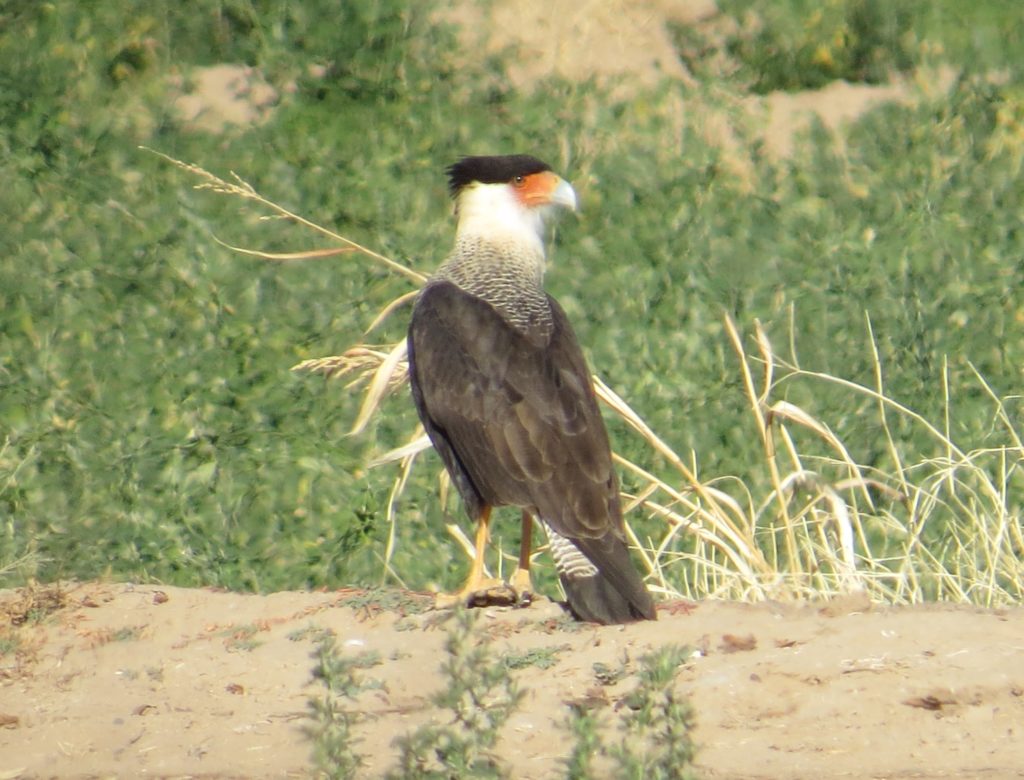
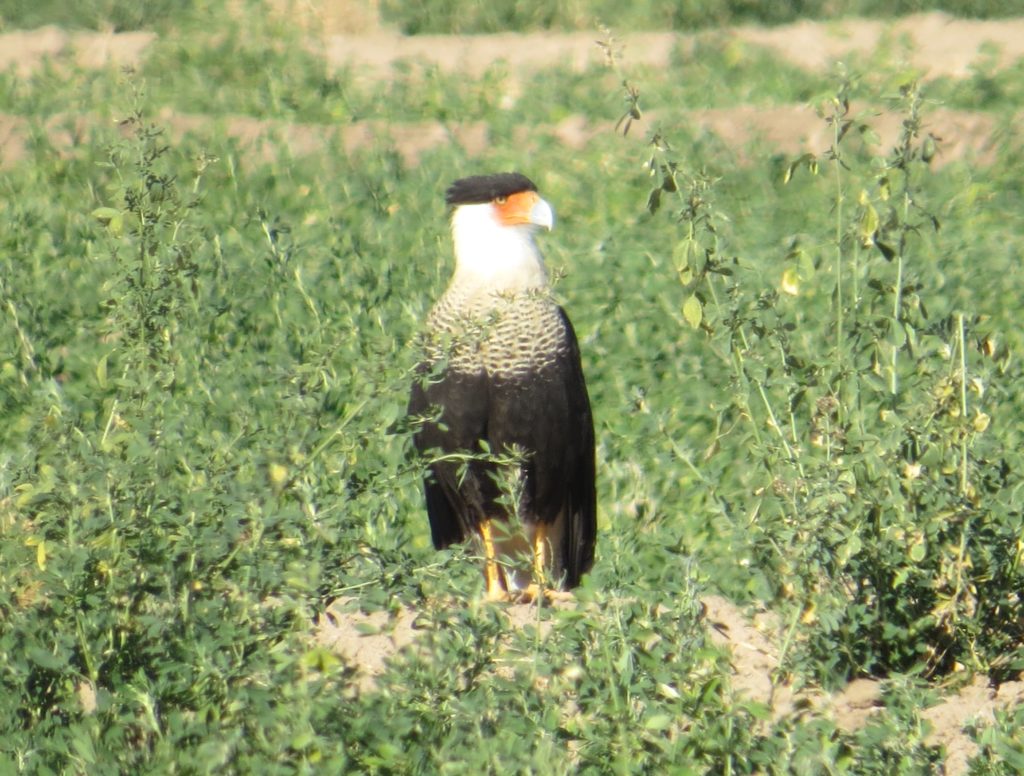 Not long after, Gordon had found us some Mountain Plovers.
Not long after, Gordon had found us some Mountain Plovers.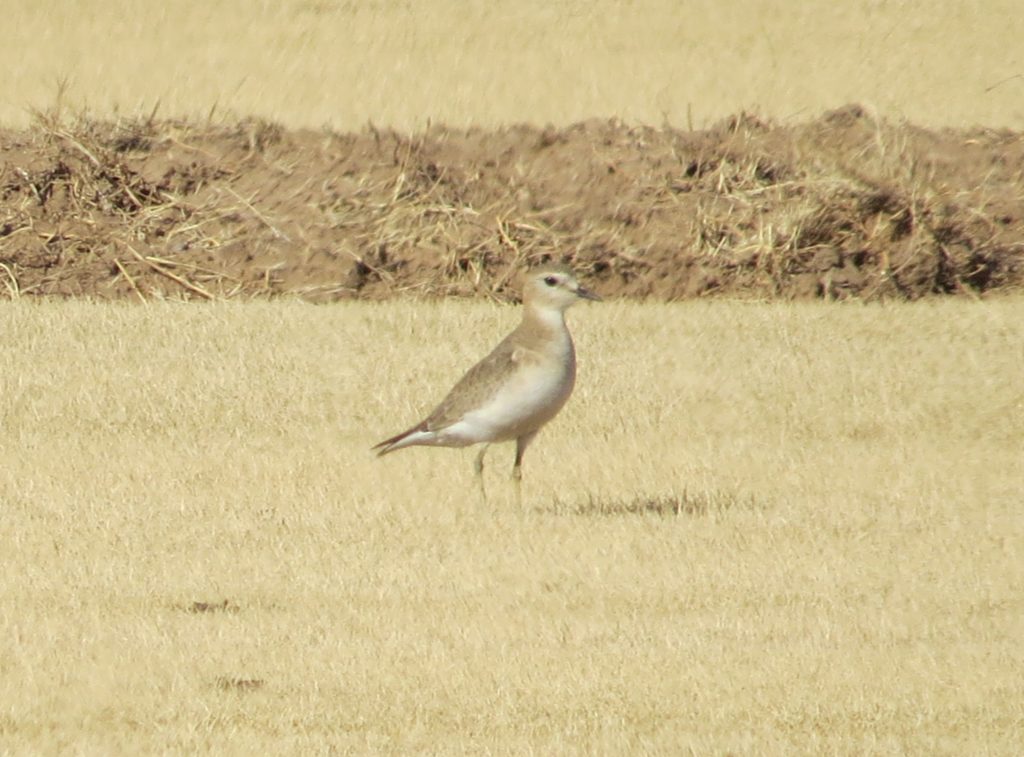
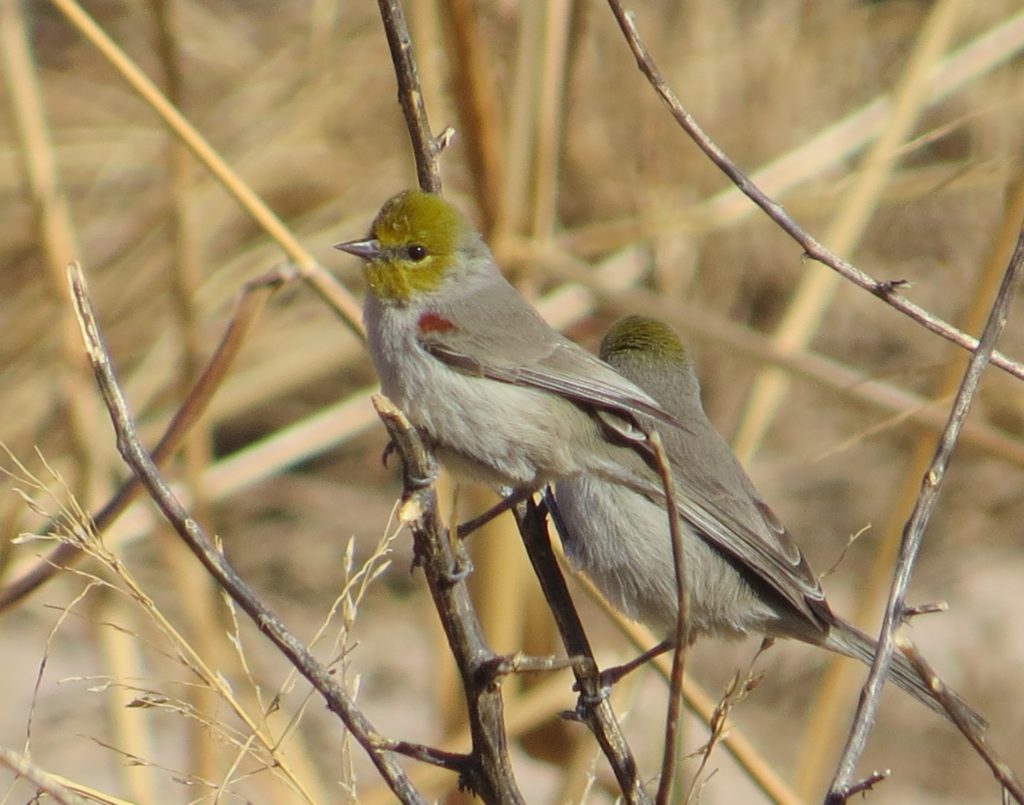 Some birds practically throw themselves at you when you’re just out walking in the neighborhood. Vermilion Flycatchers seem to be becoming more prolific in the area of Maricopa where Mom and Dad live. I don’t mind.
Some birds practically throw themselves at you when you’re just out walking in the neighborhood. Vermilion Flycatchers seem to be becoming more prolific in the area of Maricopa where Mom and Dad live. I don’t mind.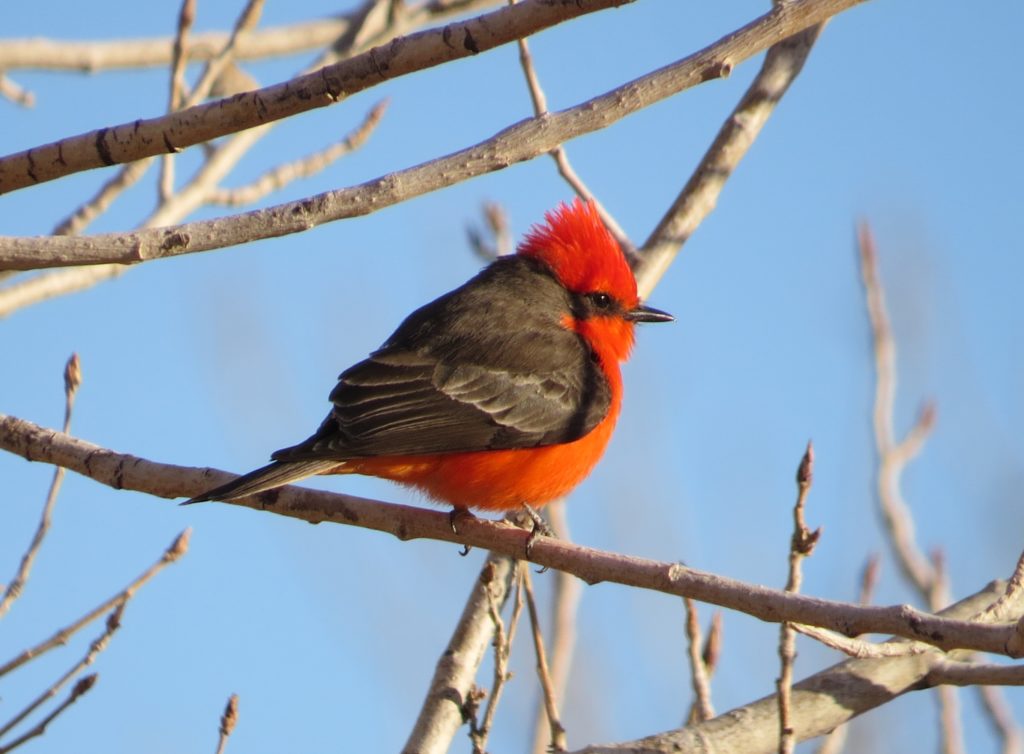
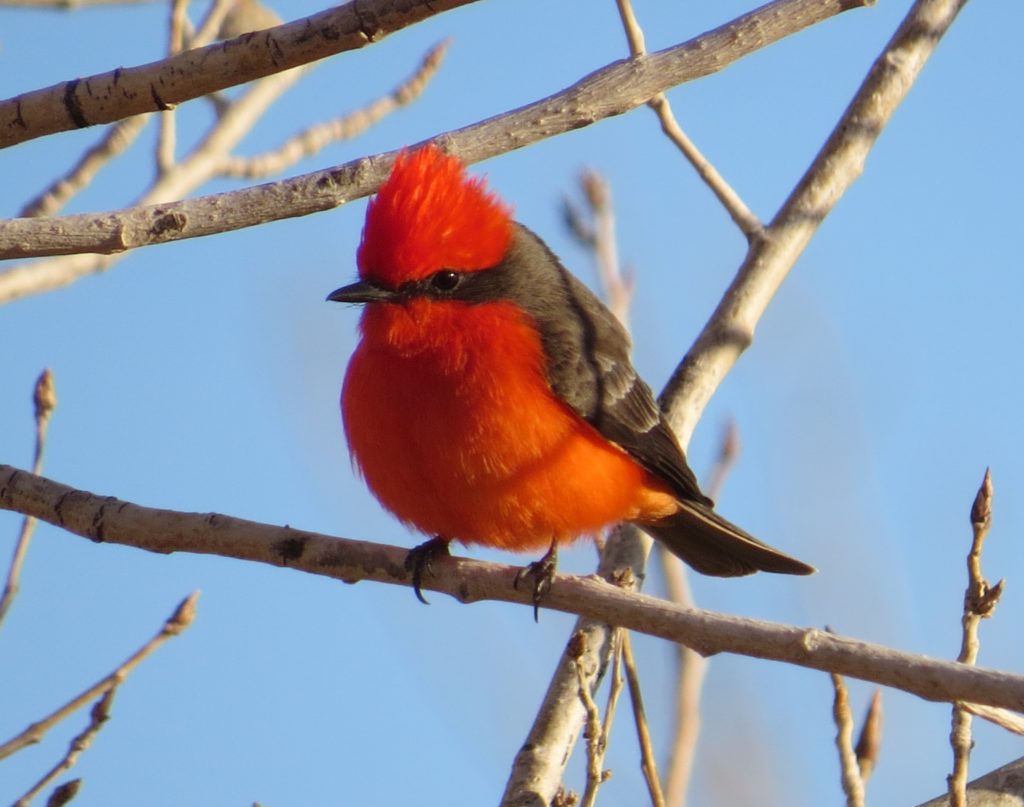 Last, but certainly not least, checking on our neighborhood buddy is an annual tradition.
Last, but certainly not least, checking on our neighborhood buddy is an annual tradition.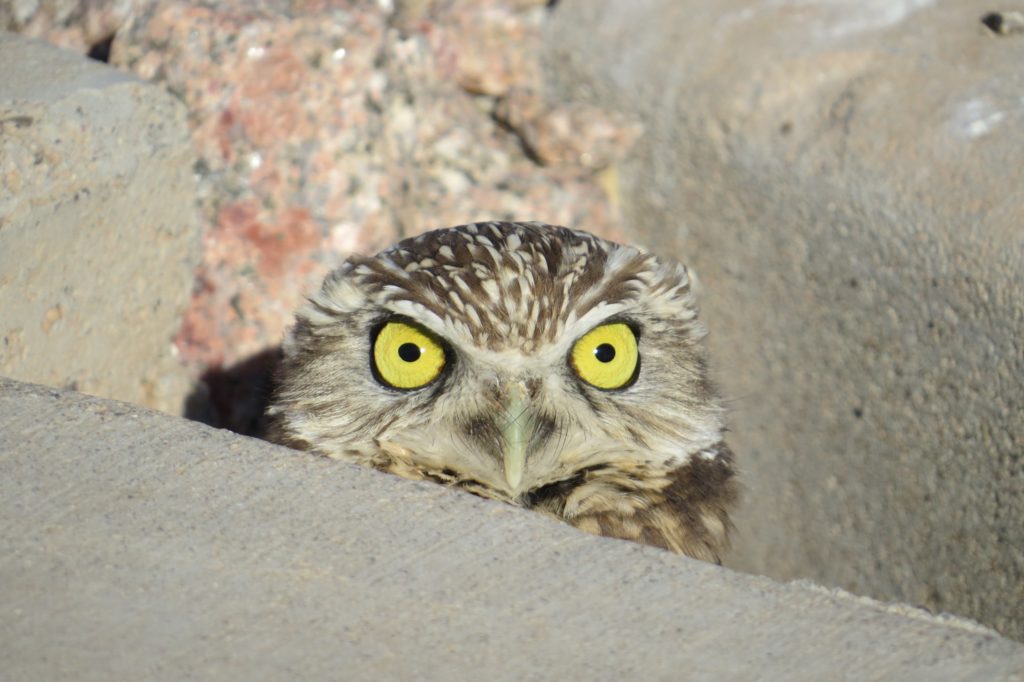 So that’s it from this trip. Pretty tame by previous standards, but that will more than be made up for on an upcoming post detailing another trip to Arizona that was focused exclusively on birding. But first, we have to cover another excursion to Duluth. There was an irruption going on this winter, after all.
So that’s it from this trip. Pretty tame by previous standards, but that will more than be made up for on an upcoming post detailing another trip to Arizona that was focused exclusively on birding. But first, we have to cover another excursion to Duluth. There was an irruption going on this winter, after all.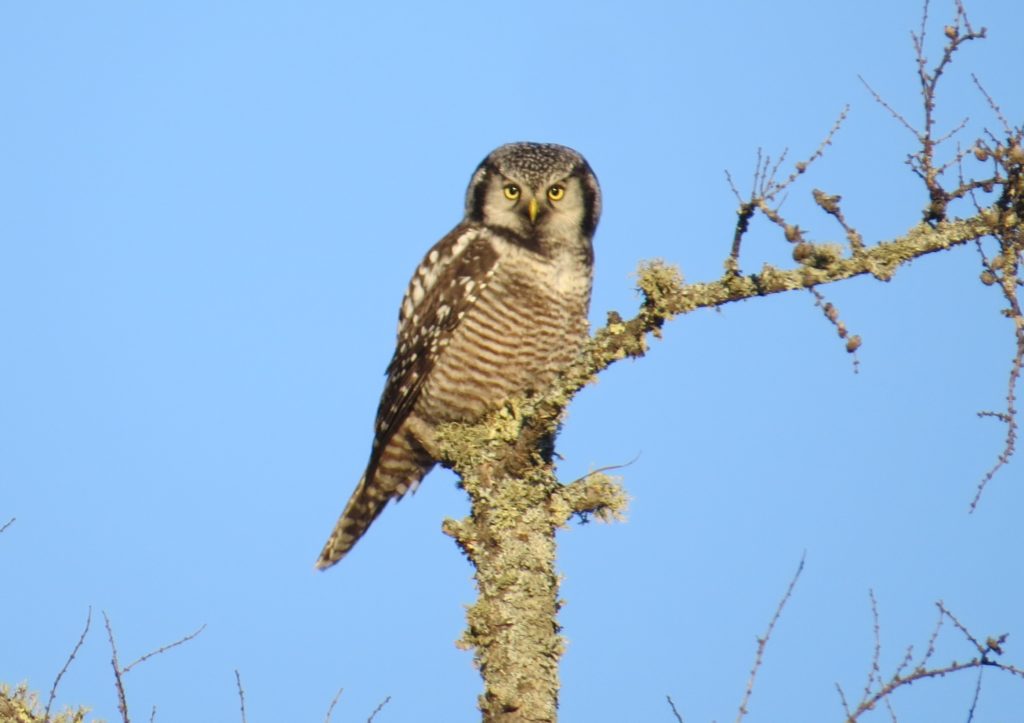
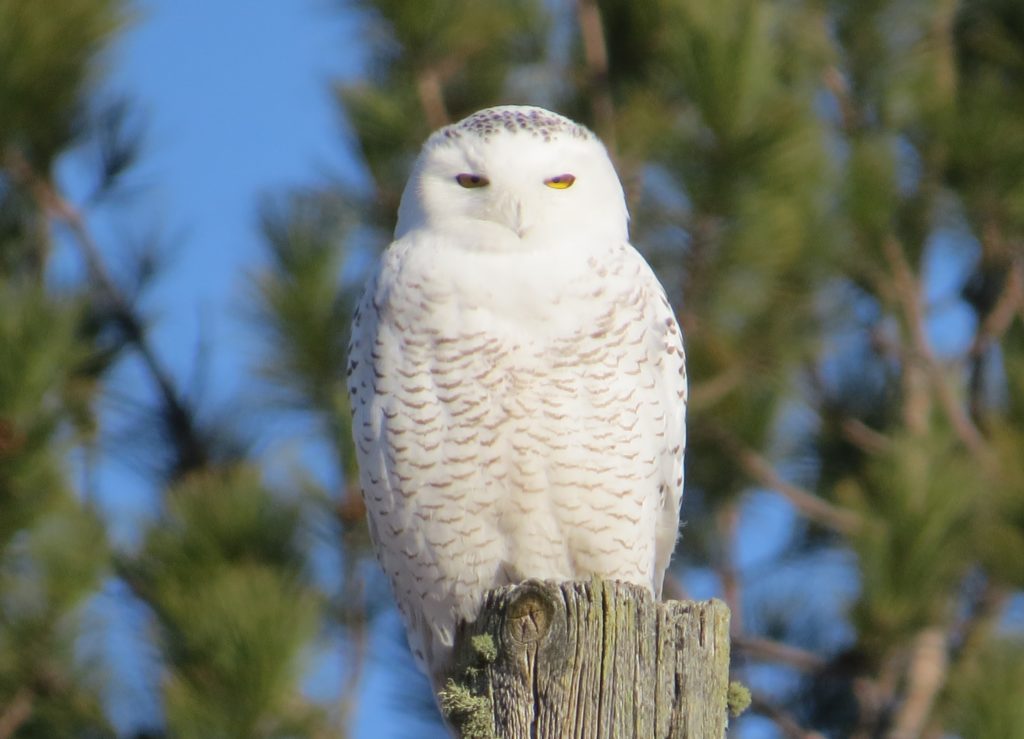
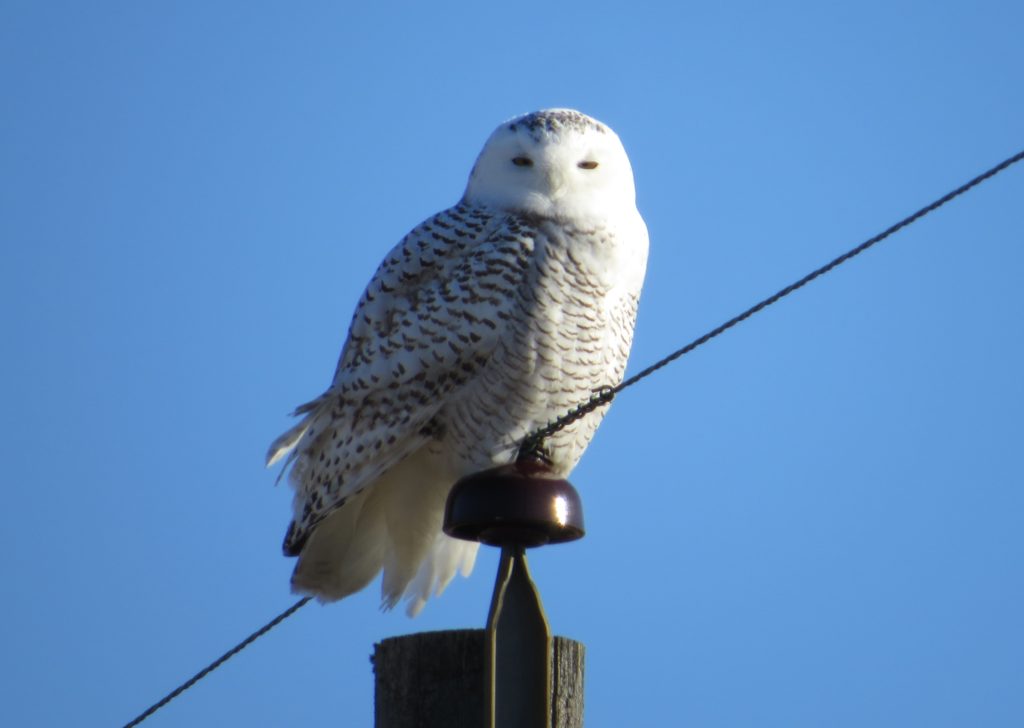 Heartbroken at the time, little did we realize that the Boreal we chased was just the tip of the spear. More sightings kept popping up during December of both live and dead Boreal Owls. By the time news of one would come out, though, it would either be during the work week or late in the day making a chase impossible. Jeff and I were hopeful that our day would finally happen, but we were very antsy about it. I had an upcoming trip to Arizona that I was now dreading. I did not want to miss my chance.
Heartbroken at the time, little did we realize that the Boreal we chased was just the tip of the spear. More sightings kept popping up during December of both live and dead Boreal Owls. By the time news of one would come out, though, it would either be during the work week or late in the day making a chase impossible. Jeff and I were hopeful that our day would finally happen, but we were very antsy about it. I had an upcoming trip to Arizona that I was now dreading. I did not want to miss my chance.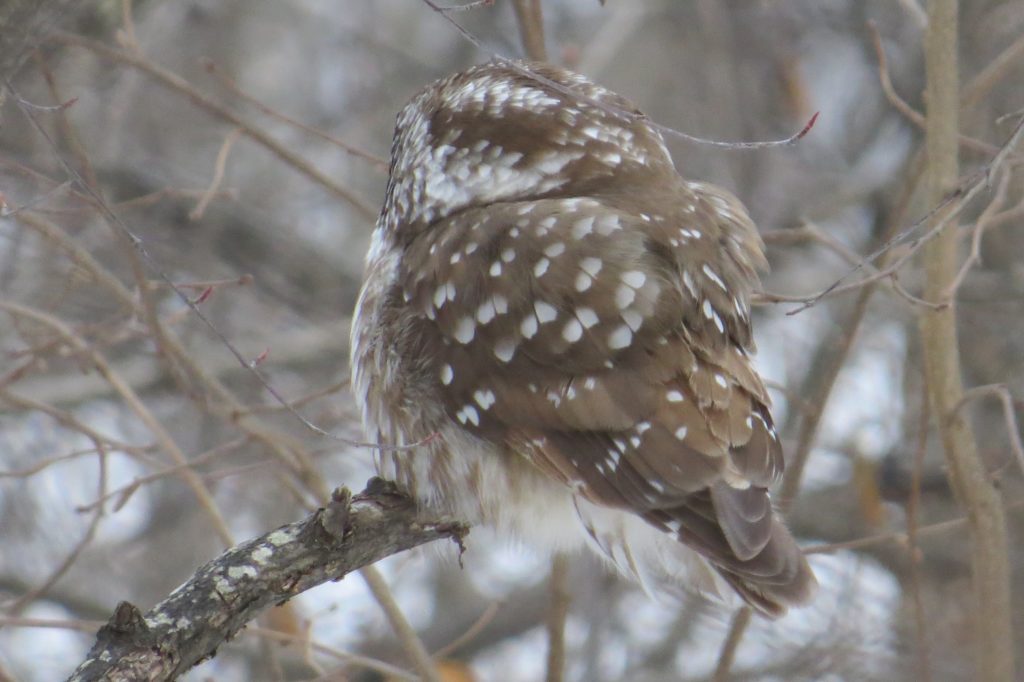 Erik and Kelly made some room for us to see this brush-loving bird through a small window in the branches. It felt good. We had made it. We were looking at a real-live Boreal Owl! Now, we were just waiting to see that face. This was our first glimpse.
Erik and Kelly made some room for us to see this brush-loving bird through a small window in the branches. It felt good. We had made it. We were looking at a real-live Boreal Owl! Now, we were just waiting to see that face. This was our first glimpse.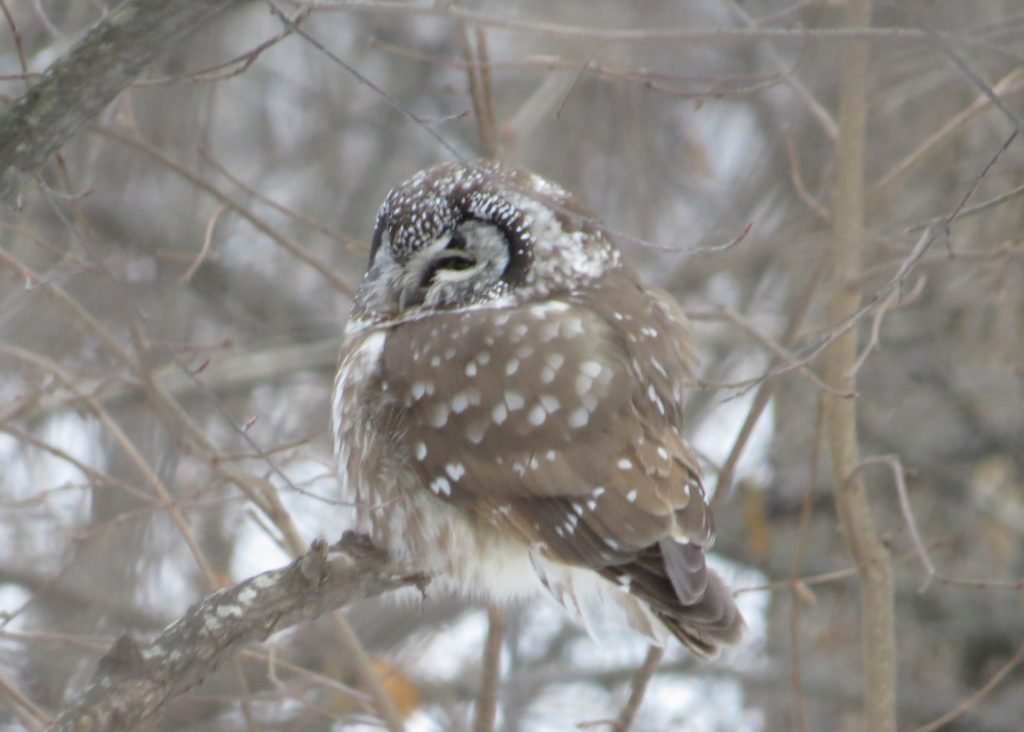 And then:
And then: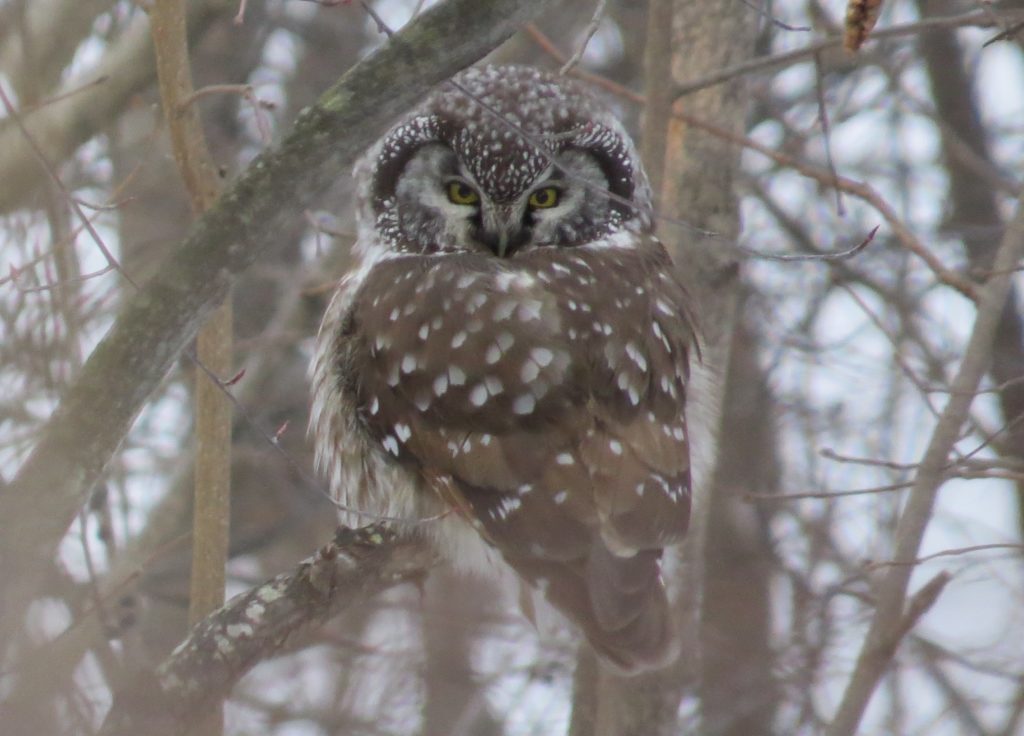
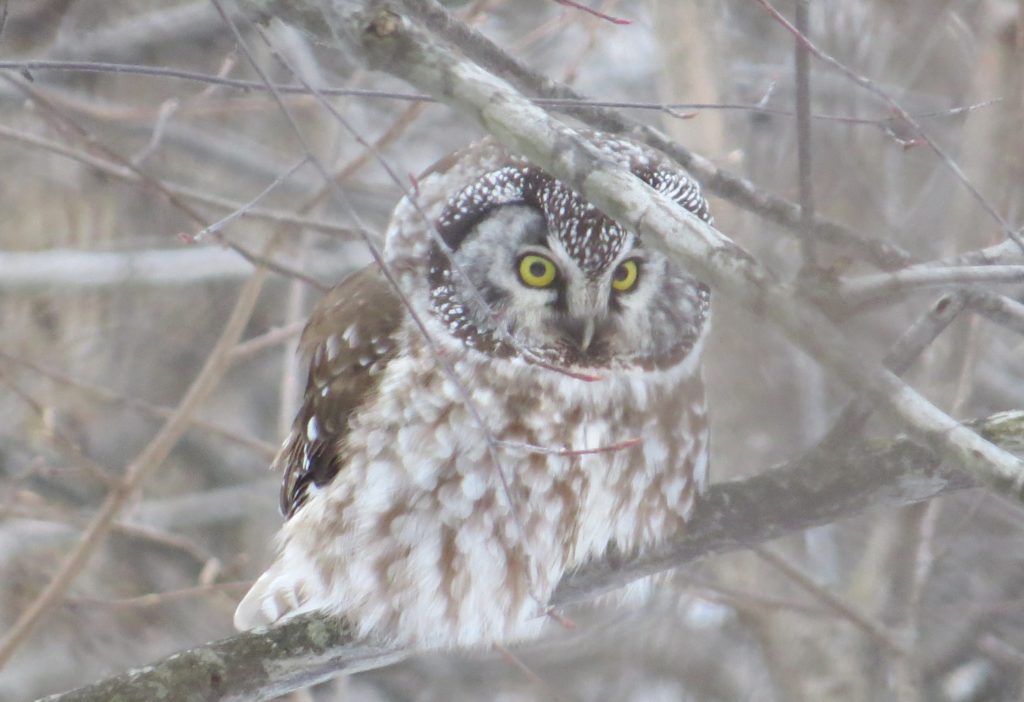
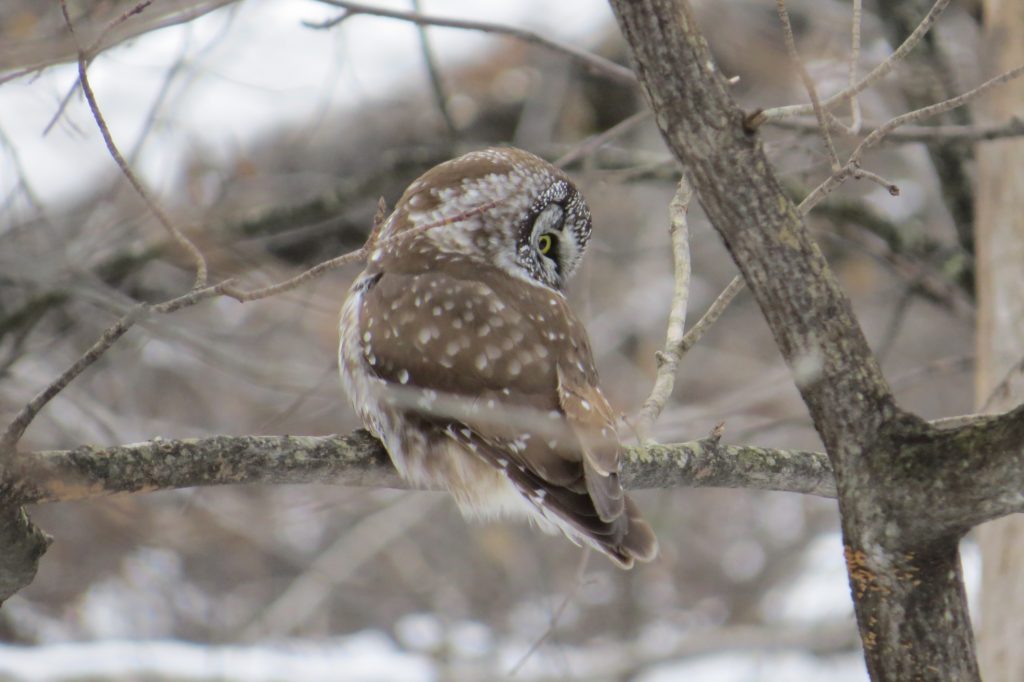
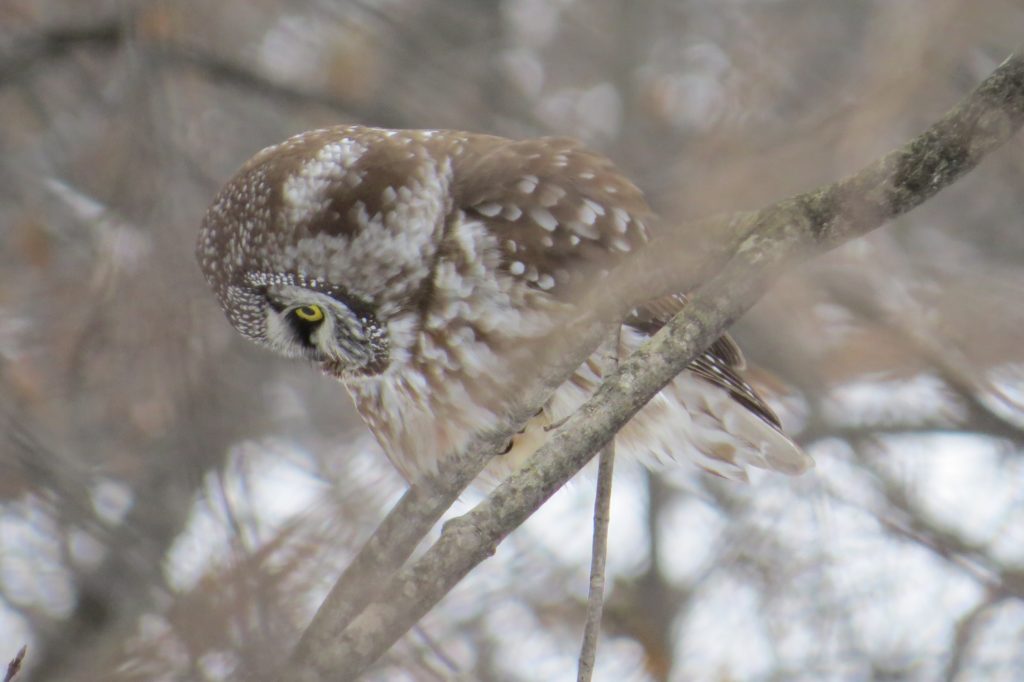
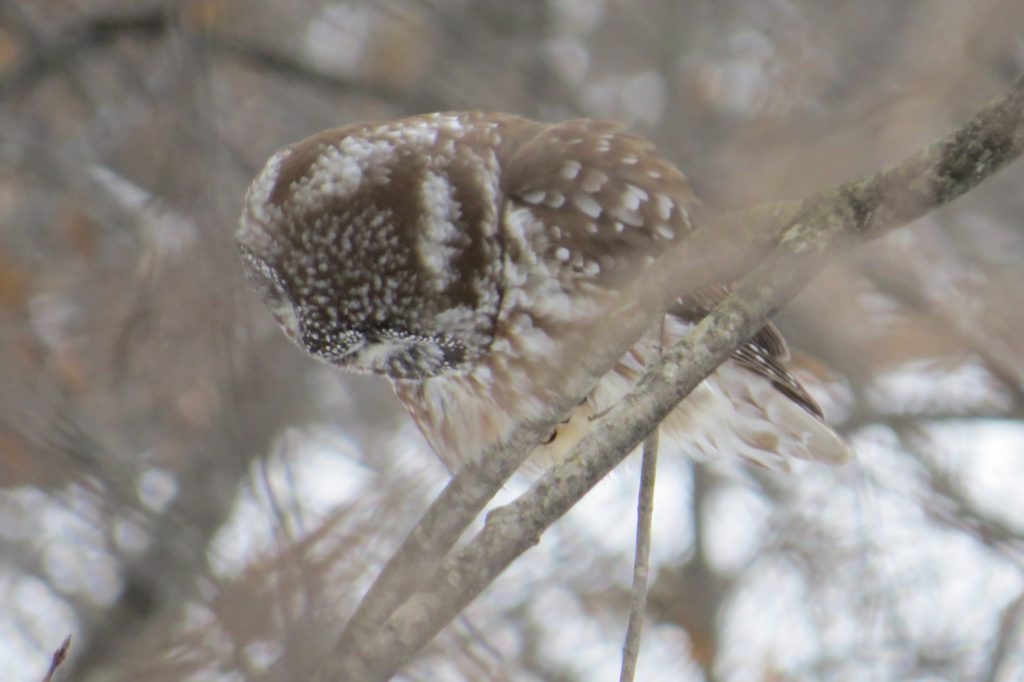 This was, by far, the coolest Owl I had ever seen. This Owl eventually flew away from this spot. I noticed it actually flew close to a different trail. John Richardson and I walked that way and spotted it on top of a brush pile. The views were much better and gave me my best Boreal photo, which Jeff helped me enhance.
This was, by far, the coolest Owl I had ever seen. This Owl eventually flew away from this spot. I noticed it actually flew close to a different trail. John Richardson and I walked that way and spotted it on top of a brush pile. The views were much better and gave me my best Boreal photo, which Jeff helped me enhance.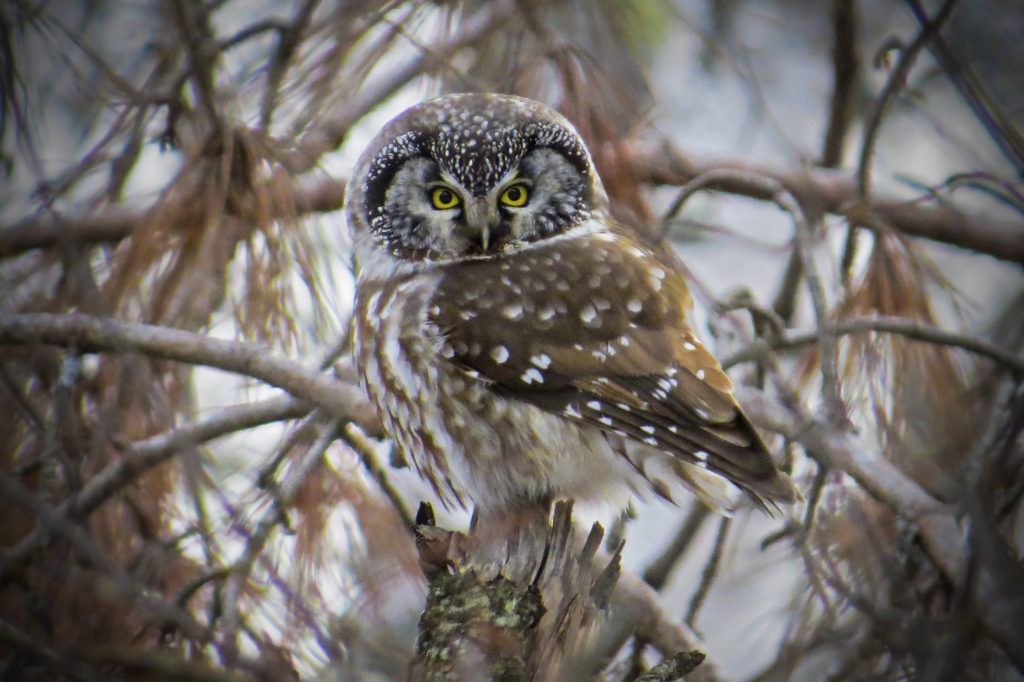
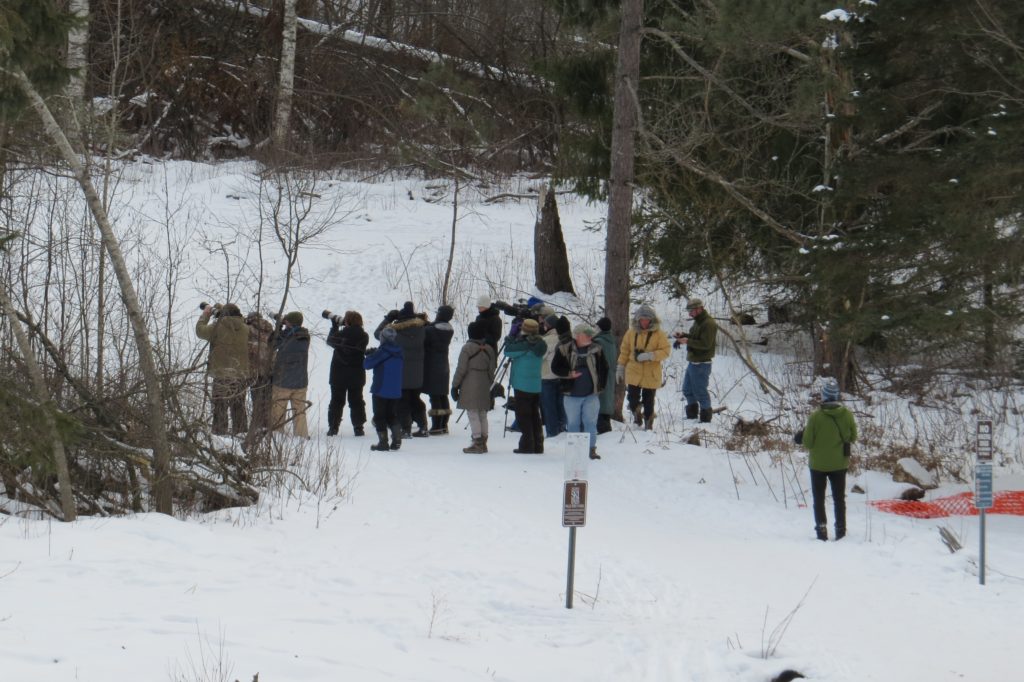 The Owl was now very close to the trails and out in the open. I felt bad that Jeff wasn’t there to experience these photo opportunities; he had not felt well after the Twin Cities Boreal expedition and decided not to come north.
The Owl was now very close to the trails and out in the open. I felt bad that Jeff wasn’t there to experience these photo opportunities; he had not felt well after the Twin Cities Boreal expedition and decided not to come north.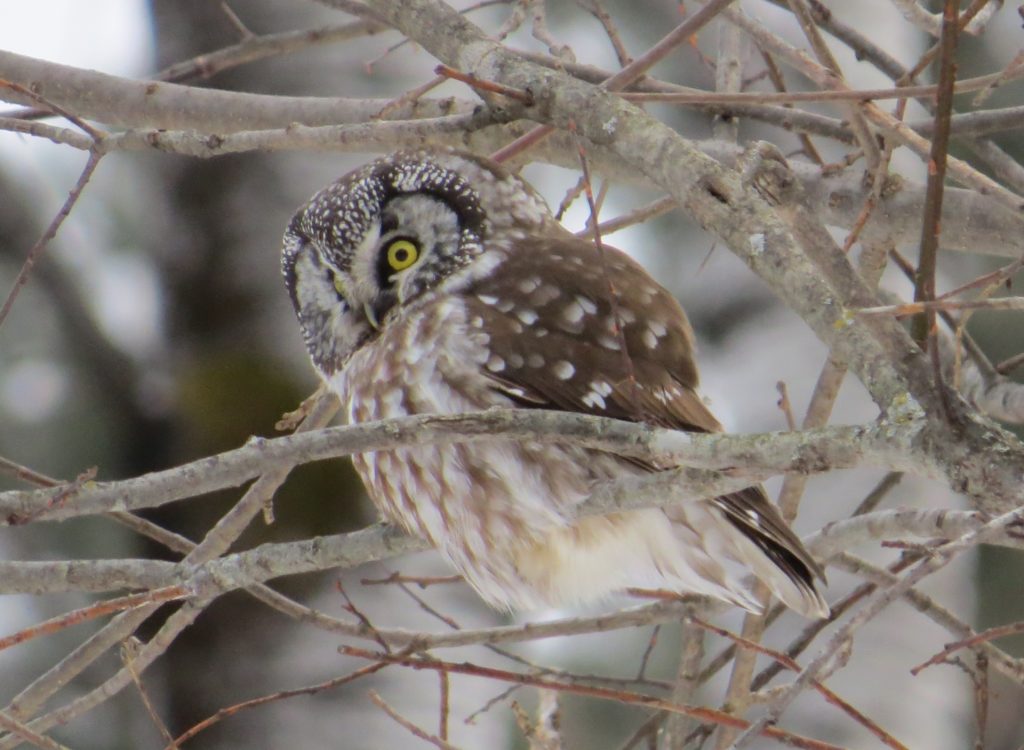 Books describe Boreals as having a surprised look on their face. It is definitely true.
Books describe Boreals as having a surprised look on their face. It is definitely true. 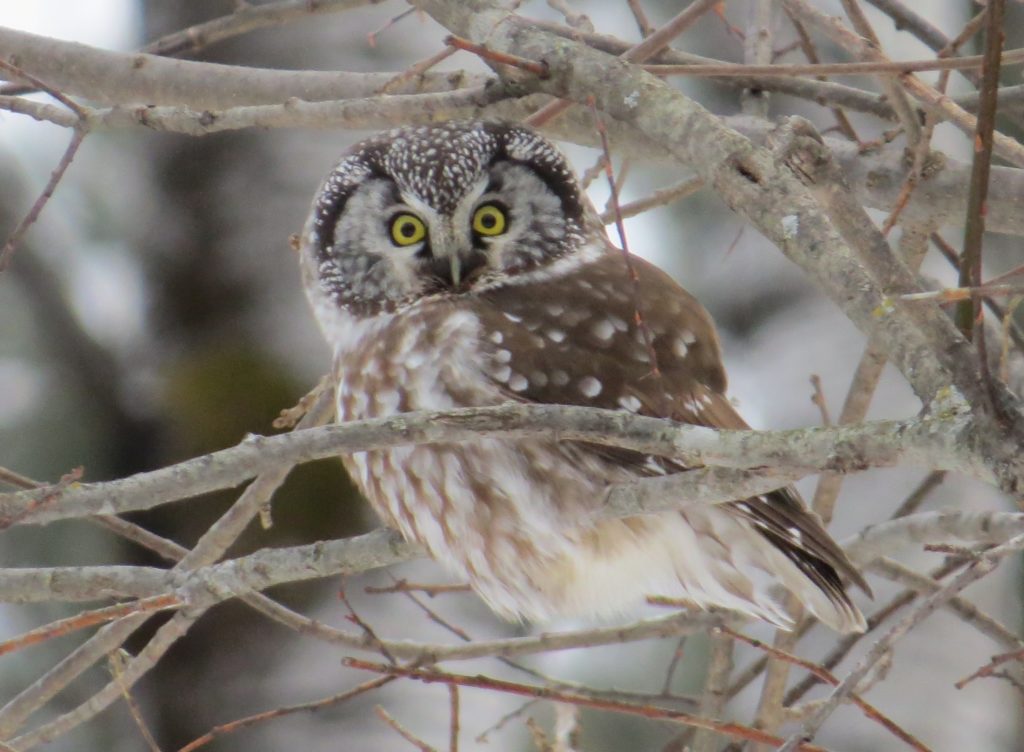

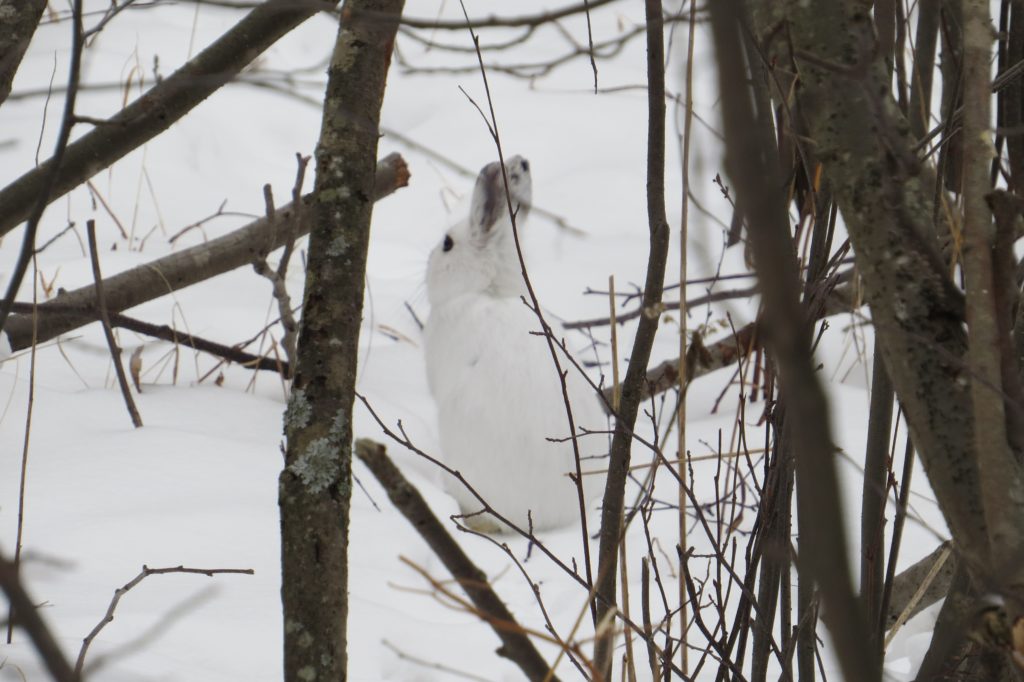 We also took a moment to take a Lake Superior selfie.
We also took a moment to take a Lake Superior selfie.
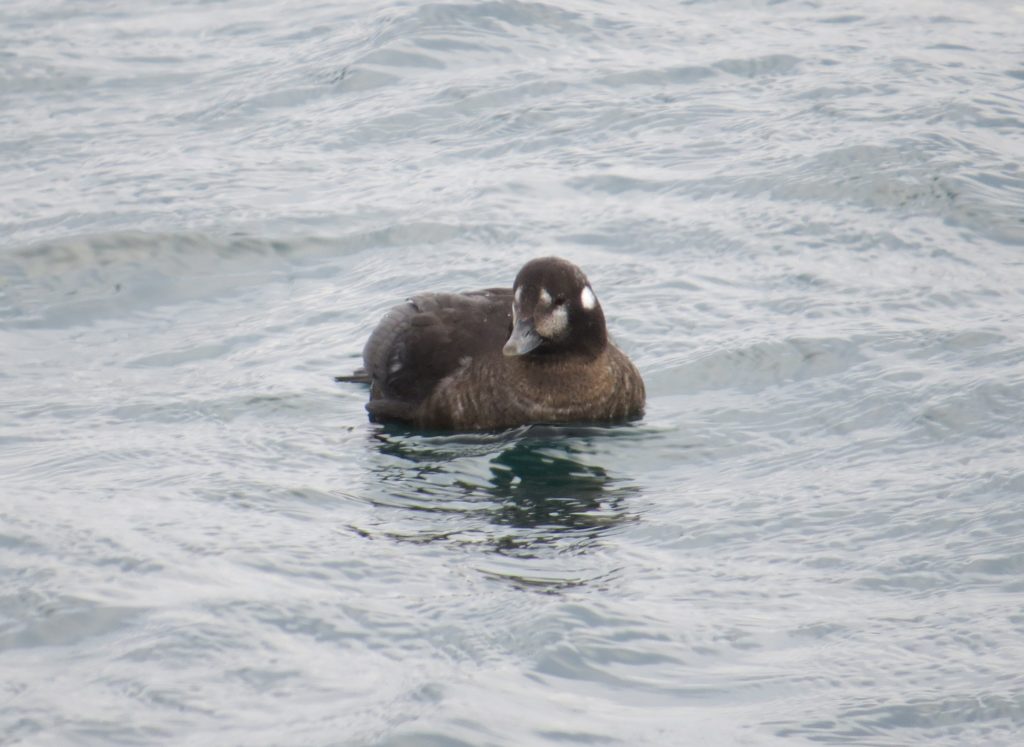
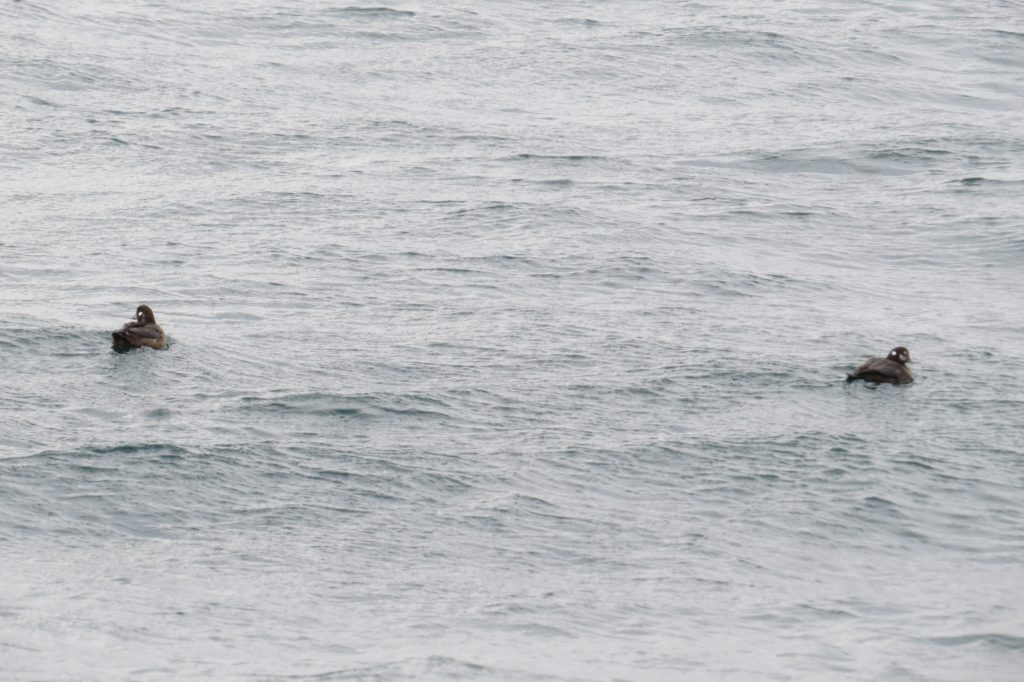 We had barely been in Two Harbors when I got a message from Jeff that he had found his very own Boreal Owl down by Duluth! I was happy he had finally gotten good looks at a bird low and in the open. Knowing there were Great Gray Owls in the area, I asked Evan what we should do. Evan thinks like a true birder because he said we should go after Jeff’s Boreal since we can see Great Grays any year. So once again we were on our way back to Duluth for a Boreal Owl. This one was snoozing in a tree right along Scenic 61. That, combined with the fact that we had gotten our Boreal the day before, meant we did not have to rush this time. Sure enough, this Boreal was right where Jeff had spotted it.
We had barely been in Two Harbors when I got a message from Jeff that he had found his very own Boreal Owl down by Duluth! I was happy he had finally gotten good looks at a bird low and in the open. Knowing there were Great Gray Owls in the area, I asked Evan what we should do. Evan thinks like a true birder because he said we should go after Jeff’s Boreal since we can see Great Grays any year. So once again we were on our way back to Duluth for a Boreal Owl. This one was snoozing in a tree right along Scenic 61. That, combined with the fact that we had gotten our Boreal the day before, meant we did not have to rush this time. Sure enough, this Boreal was right where Jeff had spotted it.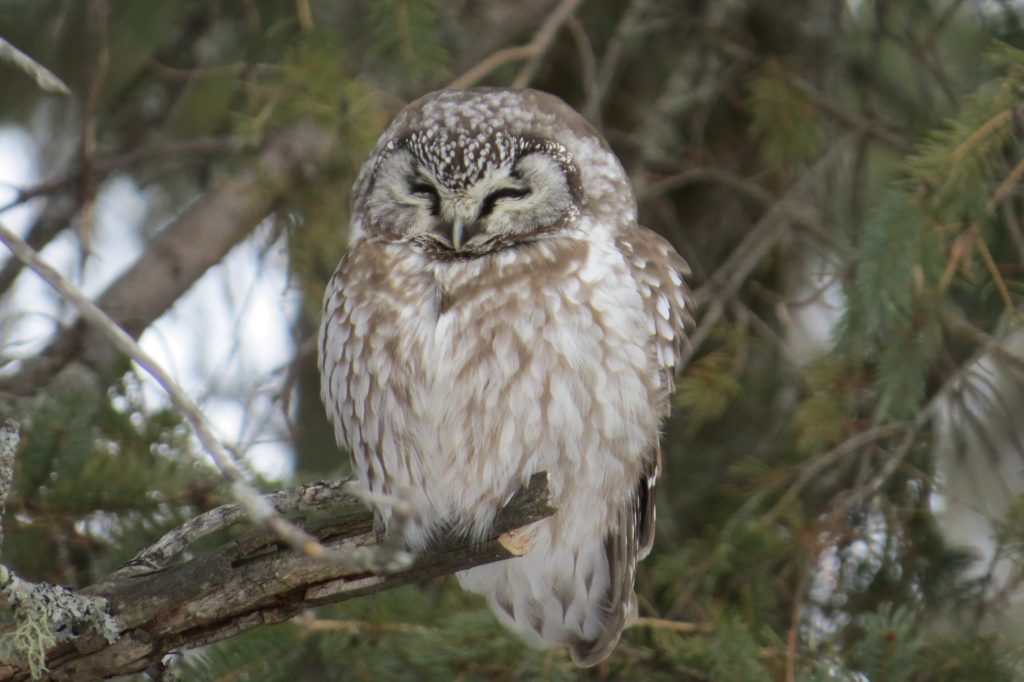 Some people, like myself, have trouble spotting these Owls. Thankfully, people like Evan can point them out.
Some people, like myself, have trouble spotting these Owls. Thankfully, people like Evan can point them out.